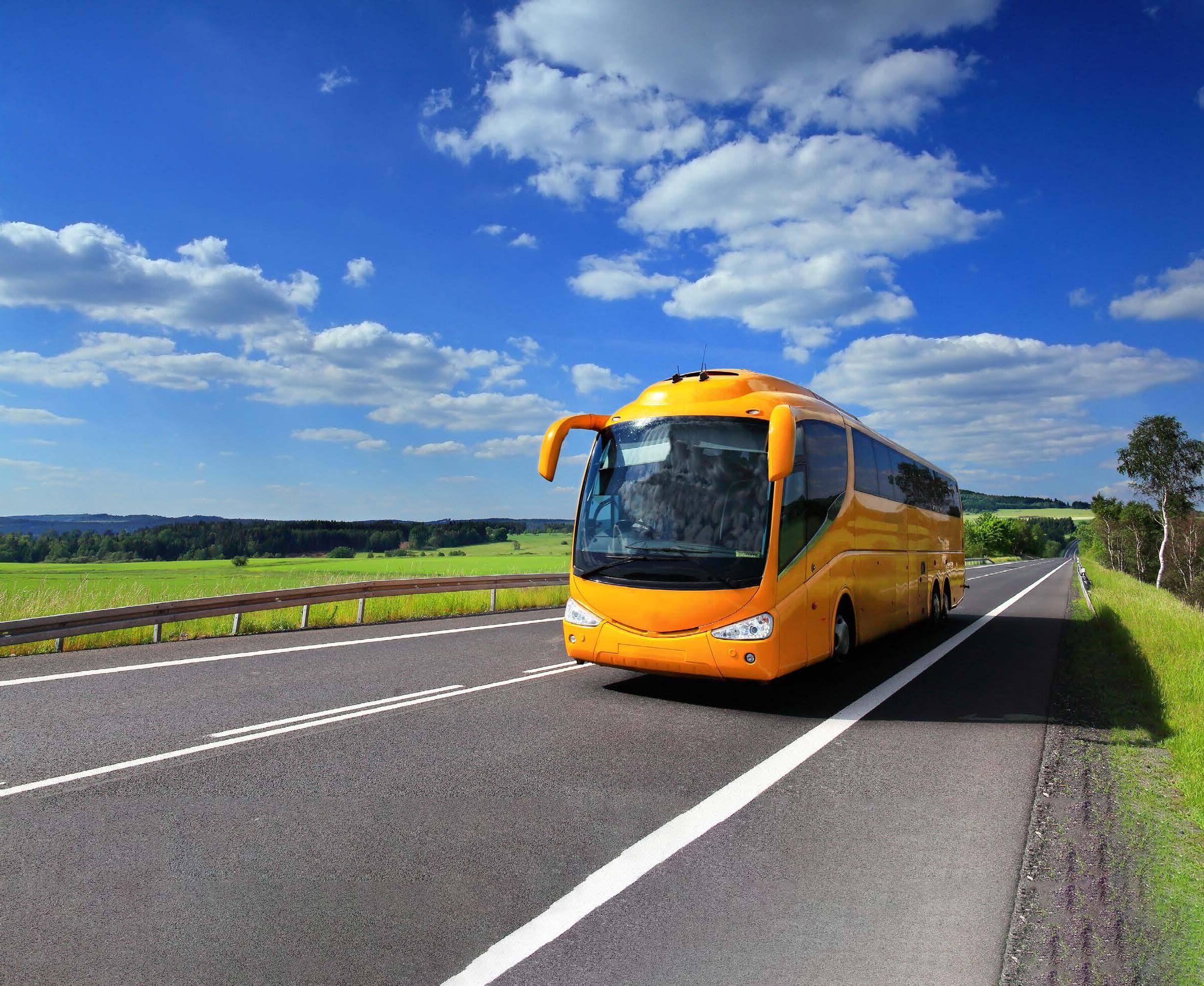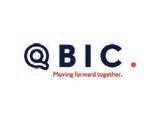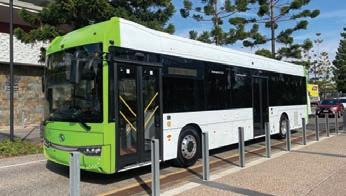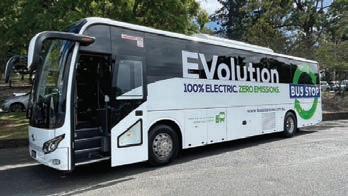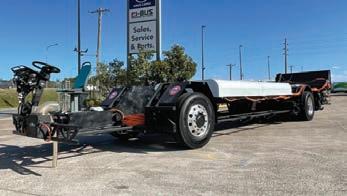
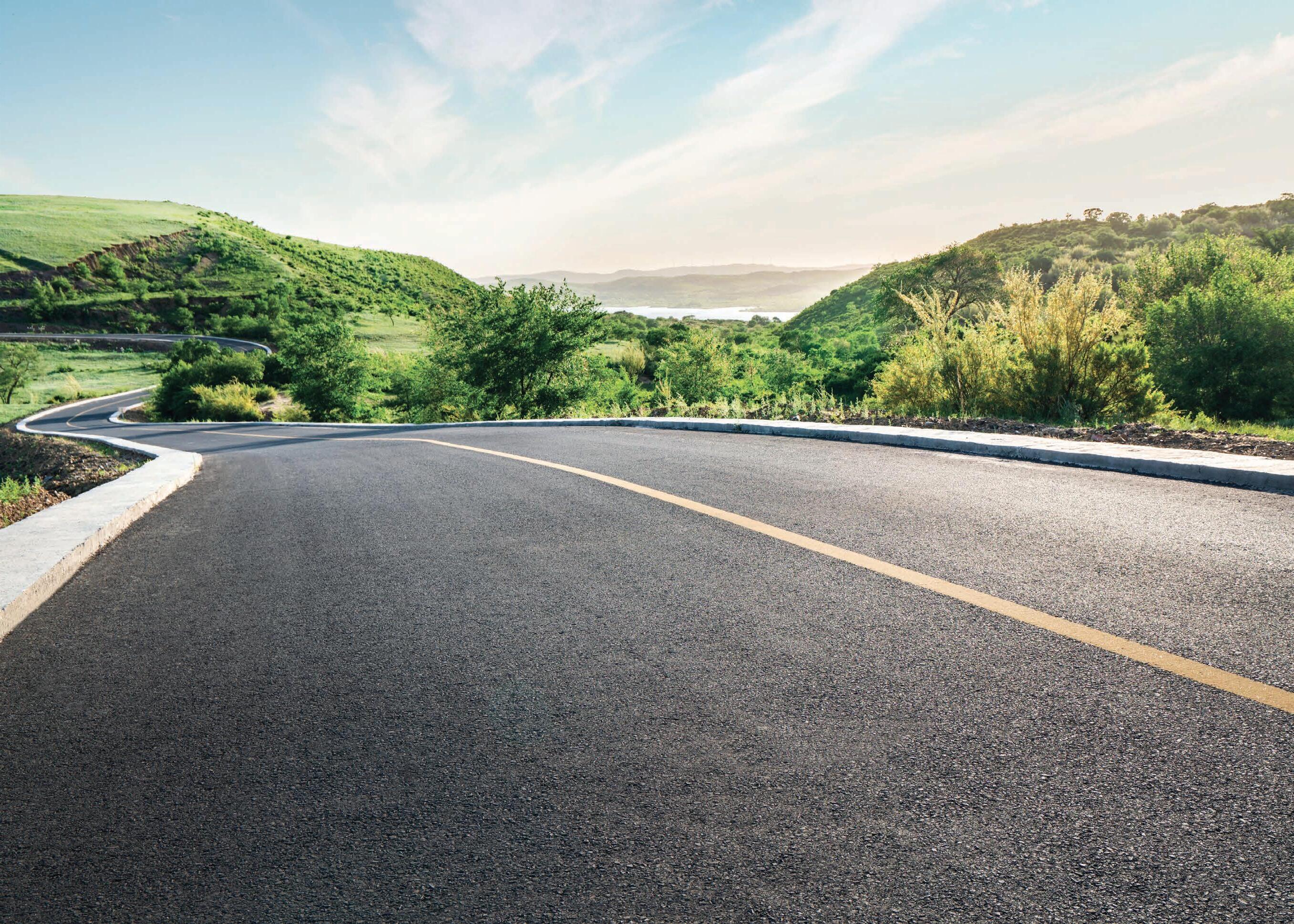
Suitable for Rail Replacement, School and Charter Applications.
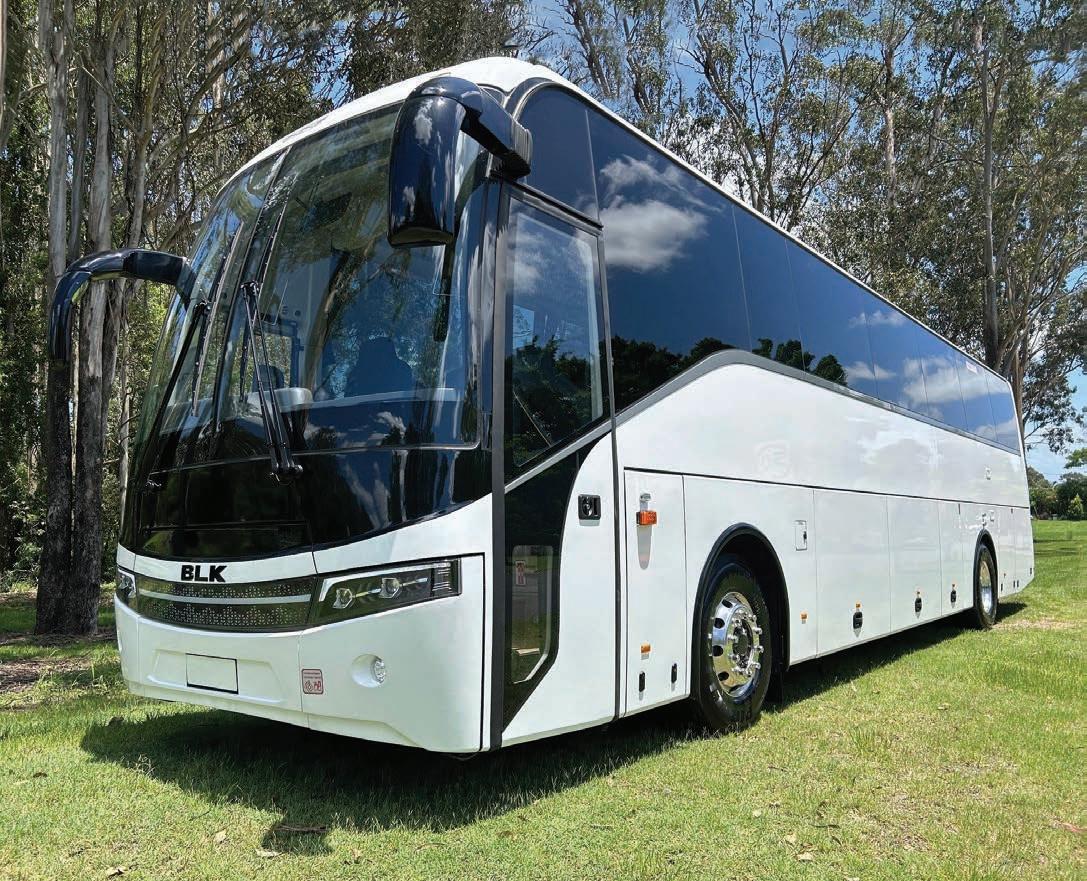
Available options include:
• Wheelchair provision
• Onboard Toilet
• Bullbar
• Fire Suppression
+ More

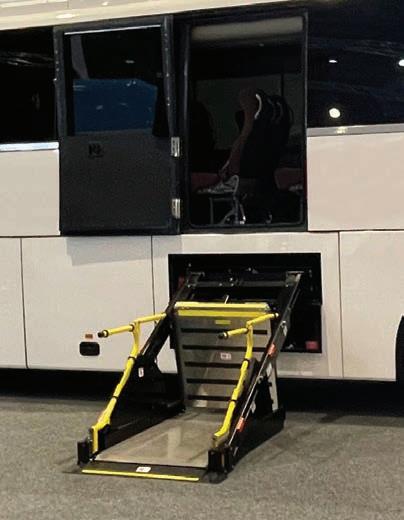



Suitable for Rail Replacement, School and Charter Applications.

Available options include:
• Wheelchair provision
• Onboard Toilet
• Bullbar
• Fire Suppression
+ More


The August edition of ABC pays tribute to the people of the industry and the critical role they play in allowing the sector to grow and thrive
There’s something about Australasia’s bus and coach industry that makes it a wonderful sector to be involved in. Something that makes each event entertaining and enjoyable. Something that makes you get up each morning and keep coming back to work with a sector that prioritises the safe transport of millions of passengers each year.
release of an exciting bus model later this year. Flick to page 22 to discover the new point of interest that is set to carry the Yutong logo on Australasian roads in the near future.
There’s something about Australasia’s bus and coach industry that makes it a wonderful sector to be involved in
The people. While the bus and coach industry may not be as large as others in the wider transport sphere, what it has is a tightknit group that creates a wonderful environment for all involved. I’ve often said in these columns that the industry feels like a family industry, where both allies and competitors work together to improve the sector day-by-day. This sentiment hasn’t changed in my three years at the helm of ABC Magazine – in fact, it only keeps getting stronger as time goes on. We thought it was time to recognise this in our magazine and pay tribute to the many great people that constitute this industry. Thus, the ‘People’ edition of ABC Magazine was created.
This August edition of the Australasian bus and coach industry’s publication is all about the people that drive the sector onwards in 2025 and beyond. The centrepiece of this edition is the ‘Happiest Bus Driver’ segment, where we conducted a search among operators and the wider industry to find the very best and happiest drivers around Australasia. In just a short period of time, nominations flooded through from all over – ranging from Alice Springs to Auckland. I would personally like to thank all who got involved and took the time to recognise a bus driver doing their best to make passengers’ days just that little bit better.
We have our three finalists – the winner will be unveiled in our September edition. Head to page 34 to find the three leaders.
Outside this lovely moment of reflection and recognition, the cogs keep on turning in the industry. Starting with our cover, Yutong has had an immense rise in Australasia’s transport market in recent years. Now, it’s looking to set new ground in Australia with the impending
With this latest influx of bus and coach vehicle technology comes the need to provide adequate infrastructure to charge or refuel it. International brands like Kempower now have this on offer in Australia, with the Finnish charging superpower discussing on page 26 its range of projects supplying chargers alongside local partners to depots around Perth.
On the safety side, Solid Circuit’s latest Safe-Ride technology is doing more than simply meeting an ADR – it’s offering an evolved system that comes at a critical juncture for Australasia’s bus scene. Also, Capral’s local manufacturing of aluminium is proving to be a winner for a popular bodybuilder and its operator partner.
To cap it off, Tiarna Condren chatted to the team behind the new look MOVE in Shepparton on page 31. Brimming with classic relics and beautiful buses, this site is a must for bus enthusiasts in the area. In further recognising people, this edition also includes a recap of the bus driver strikes in Victoria over the past couple of months, an exclusive interview with the new managing director of Transit Systems NSW (spoiler – he loves buses as much as all of us) and a chat with Panorama Coaches about its history and evolution in the face of changing circumstances.
With this edition of ABC focusing on the people of our great industry, we hope you enjoy the read.
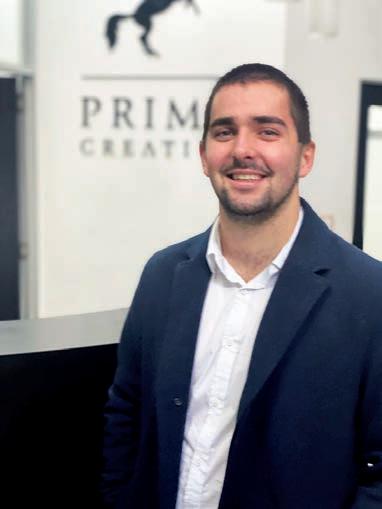
Sean Mortell EDITOR, ABC
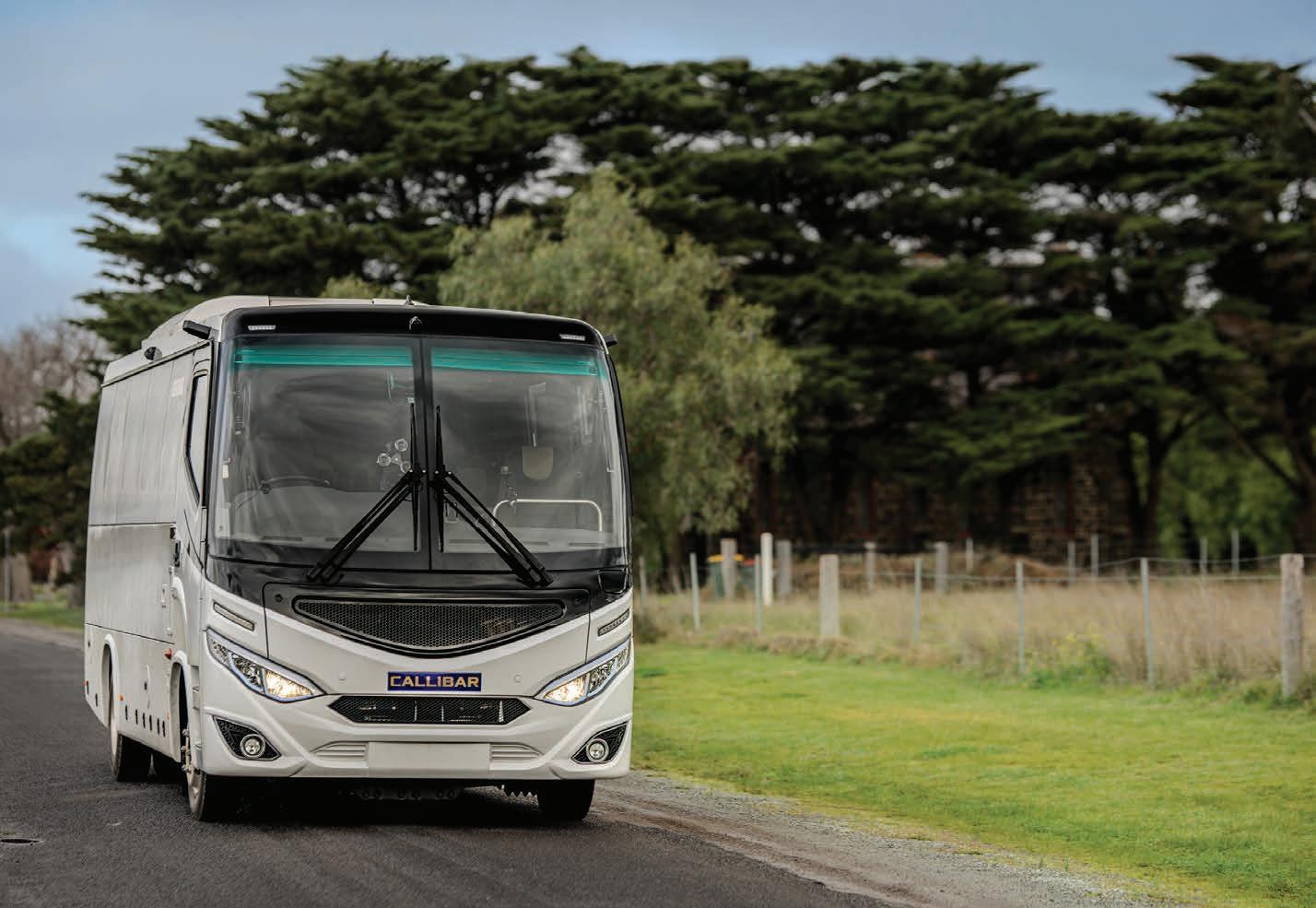





04. editorial | ignition PEOPLEAREKEY
The August edition of ABC pays tribute to the people of the industry and the critical role they play in allowing the sector to grow and thrive
08. news | all aboard
Check out the latest news from around Australia and the world features
21. column | bic ONEVOICE
The changing of the guard at the Bus Industry Confederation this year has led to a deeper look into what the national bus industry needs in future 22. cover story | yutong THEBIGGERTHEBETTER
Yutong is preparing to drive forward the progress of green mobility in Australia when it launches the U18 to the local industry later this year
28. feature | kempower CHARGINGCHAMPIONS
In just a couple of years, Finnish company Kempower has used a local partnership network to lead the way in Australian zero-emissions charging infrastructure
31. feature | move MOVE-INGUP
After more than 50 years of hope and hard work, Victoria is finally getting a dedicated bus museum
34. feature | happiest bus driver SWITCHEDE-T-A
ABC has been on the hunt for the happiest bus drivers across Australia and New Zealand
36. feature | solid circuit SEATBELTSOLUTION
The latest retrofittable system from Solid Circuit is allowing bus and coach fleets to meet the latest safety requirements easier than ever before
38. feature | irizar SCHOOLBUSSUCCESS
Irizar is making waves under TfNSW’s Panel 4 contract, with quality builds and repeat customers
40. feature | capral KEEPINGLOCAL
The importance of Volgren’s local supply partnership with Capral for aluminium is coming to the fore for major Australian operators looking to secure long-term fleets
42. news | victorian driver strikes FROMTALKSTOSTRIKES
Victoria’s bus drivers are in the midst of a historic industrial standoff, pushing for better pay and conditions as strikes continue to disrupt services across the state
44. feature | appointment NEWCHAPTER
With nearly half a century spent in and around public transport, Rino Matarazzo is ready to evolve bus services as the new managing director of Transit Systems
46. feature | panorama coaches THENEWVIEW
After farewelling long-held government contracts, Panorama Coaches is doubling down on its core strength by safely transporting thousands of students across metro and regional Victoria 49. events BUSYYEAR
Check out these events for the industry in the run home for 2025
51. competition | best bus BEACHYBYD
Andrew Nikolzev’s beachy shot of a BYD B70 has taken home gold for Best Bus August
54. factory facts | bus deliveries JULYDELIVERIES
Check out the latest bus and coach supplier sales data collected and recorded for you to review and see how the market fared in July
58. back seat | leyland beauty DOUBLEDECKERDREAM
Stranded on a farm and too far gone to hit the road anymore, this 1949 Leyland double-decker bus was restored to become one of Australia’s quirkiest accommodations
EXECUTIVE GROUP
CEO: Christine Clancy
Chairman: John Murphy
Head of Customer Experience: Regina Fellner
EDITORIAL & DESIGN
Managing Editor: Geoff Crockett
e-mail: geoff.crockett@primecreative.com.au
Editor: Sean Mortell
e-mail: sean.mortell@primecreative.com.au ph: 0468 577 166
Assistant Editor: Tiarna Condren
e-mail: tiarna.condren@primecreative.com.au
Art Director: Daz Woolley
Designer: Apostolos Topatsis
PRINTING
Brougham Press
ADVERTISING
Sales Manager – South: Courtney Burton ph: 0481 736 890
e -mail: courtney.walker@primecreative.com.au
Business Development Manager – Bus: Sylvie Hanlon ph: 0466 545 664
e-mail: sylvie.hanlon@primecreative.com.au
SUBSCRIPTIONS
www.busnews.com.au/subscribe ph: +61 (0)3 9690 8766
Mon-Fri 8am-4.30pm (EST)
e -mail: subscriptions@primecreative.com.au mail: 379 Docklands Drive, Docklands VIC 3008 Australia
Annual subscription rates (12 issues): Australia: $99*
Overseas: $A170 (Australian air-mail only) *price includes GST
Cover image: Yutong


Keolis will become the sole owner of one of Australia’s largest public transport operators as it moves to deepen its local presence
Keolis and Downer have signed an agreement for Keolis to buy Downer’s shares in the Keolis Downer joint venture, ending a 15-year partnership that has seen the company become a major player in Australia’s public transport sector.
The move will see the Keolis Group, already the majority shareholder, take full ownership of its Australian activities, which will be rebranded simply as Keolis.
The acquisition underscores Keolis’ ambition to expand its footprint and services in Australia, leveraging both its international experience and local knowledge to forge new partnerships and enhance public transport delivery.
“After having partnered with Downer for 15 years and successfully grown the business to become a
leading multi-modal public transport operator in Australia, we have agreed to adopt a different strategy moving forward by Keolis becoming the sole shareholder of our Australian business,” Keolis Group International CEO Laurence Broseta says.
“This will allow us agility to build new partnerships based on business opportunities and projects. With our knowledge of the local market and our extensive international footprint, now is the right time to change our commercial approach.”
Keolis Downer CEO Leila Frances says she was proud of what the joint venture had accomplished and is eager for the next chapter.
“I am proud of all the achievements that Keolis Downer has made in the past 15 years and look forward to building on that foundation with a
new chapter,” she says.
“This is an exciting opportunity for us to maintain our focus on effective partnerships with local transport authorities to deliver positive passenger outcomes and expand our local footprint.”
Australia is regarded as a strategic market for the Keolis Group, which operates in 13 countries and runs a range of services including trains, driverless metros, trams, buses, on-demand transport and active transport services.
The company says it is committed to delivering strong operational performance, improving customer experience and supporting a shift towards sustainable travel modes.
The transaction between Keolis and Downer is expected to be completed by late 2025.
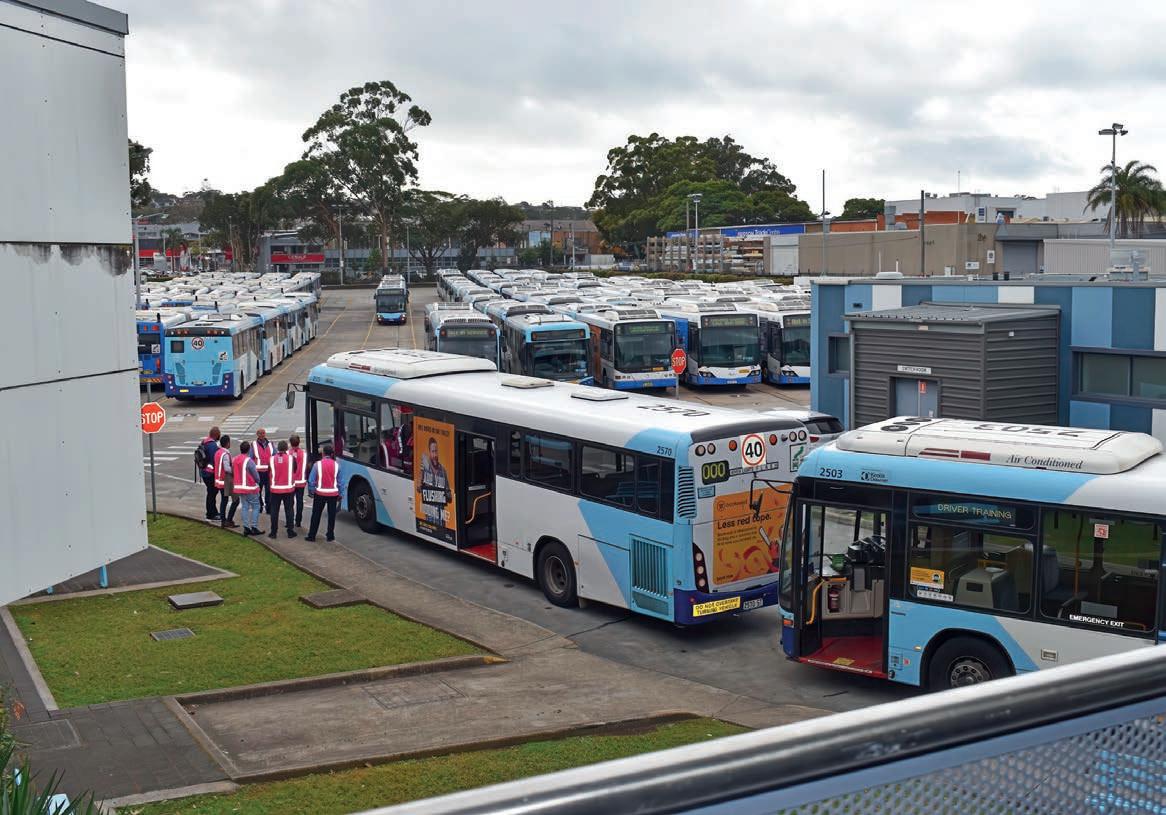
NSW TrainLink is reviewing the current coach network to ensure services reflect the changing nature of services
NSW TrainLink is preparing for a shake-up of its coach services across regional New South Wales, following a recent review aimed at better meeting the needs of passengers and local communities.
The review, conducted by Transport for NSW, considered passenger data, community feedback and sustainability goals to determine how the coach network could improve.
The review forms part of the state government’s plan to modernise regional transport and better connect people to jobs, education and essential services. It sets out to design a future coach network that “supports regional mobility and aligns with broader government and community expectations”.
In doing so, it aimed to not only assess the current services but also inform how new coach contracts will be shaped and awarded.
The review drew on more than 20 sources of passenger and community feedback, including patronage data, customer surveys and findings from the previous Bus Taskforce Review.
Three options were evaluated as part of the review. The preferred model – known as Option 3 –proposes major improvements across the board.
These include boosting frequency on popular routes and adjusting stops to improve accessibility, adding new routes and services on weekends or for day-return travel, changing routes to improve journey times and network performance and aligning the coach network with upcoming regional rail improvements to support seamless travel.
“The preferred option prioritised greater integration across modes and targeted improvements to address service gaps and better connect communities,” the review reads.
Transport for NSW received 689 individual pieces of feedback from
Below: The review settled on a model to propose improvements to the network. Image: Transport for NSW
586 people as part of its consultation process, with passengers expressing strong interest in improved reliability, better links to rail, more inclusive services and practical options for day-return travel.
Beyond convenience, the review also looked at how the network could become more sustainable; environmentally, socially and economically.
On the environmental front, the preferred network model would reduce duplicated services, trim travel times and include contract options that allow for the introduction of zero-emission coaches.
Socially, it aims to improve coverage and accessibility to address inequity and transport disadvantage, consider the needs of Aboriginal communities and comply with the Disability Standards for Accessible Public Transport.
Economically, the model is designed to support regional growth and boost patronage by improving
access to jobs, education, health care and other key services.
“Looking ahead, sustained collaboration with passengers, regional communities and the coach industry will be essential to successfully implement the proposed changes,” the review reads.
“Ongoing monitoring of patronage, customer satisfaction and sustainability outcomes will help ensure the network adapts over time and continues to meet evolving needs.
“Ultimately, the NSW TrainLink Coach Network Review demonstrates how transport planning can be both practical and future-focused.”
Coach service contracts are set to be renewed in coming years, with the new network structure to be rolled out in stages. Transport for NSW says ongoing consultation with communities and the industry will remain central as the system modernises.

The Bay of Plenty community has been invited to have their say on plans to improve reliability and meet local needs
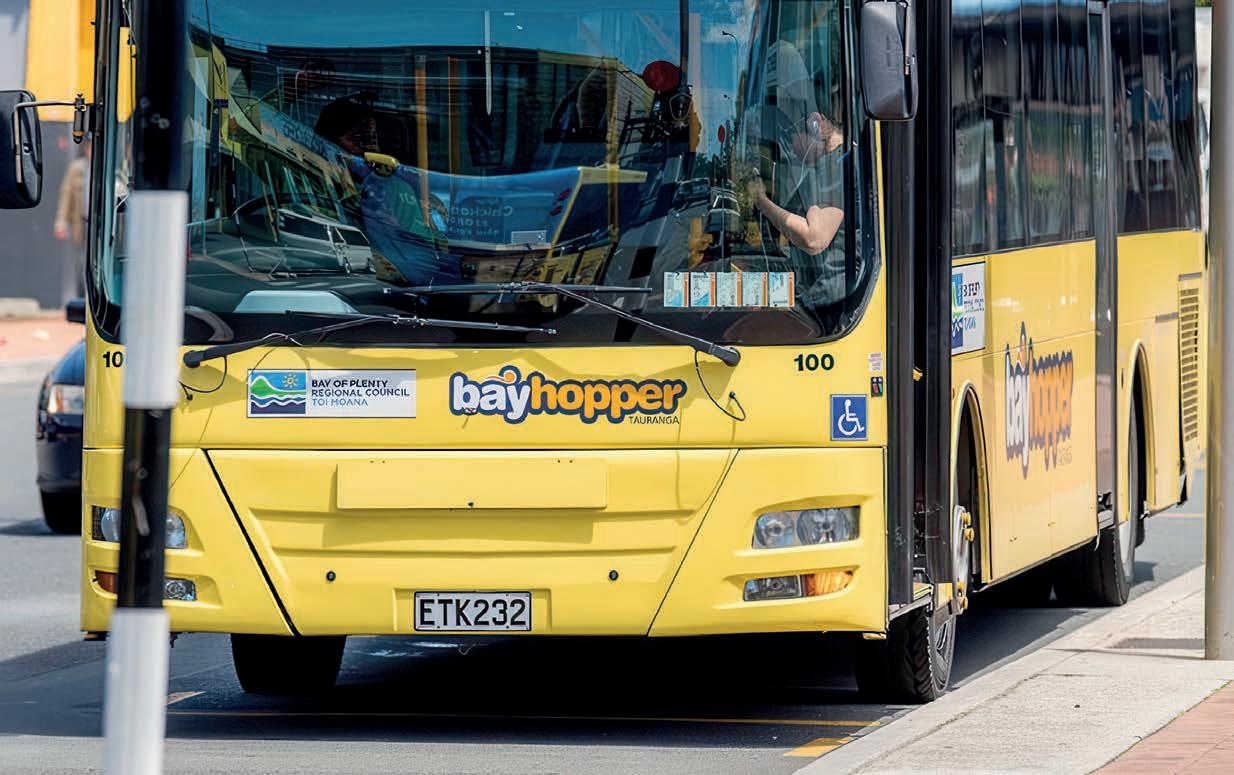
The Bay of Plenty Regional Council is putting forward plans to revamp public transport services across the Eastern Bay of Plenty, with a focus on better reliability, more direct routes and meeting modern travel patterns.
The proposed changes would affect several key routes, including Ōhope–Whakatāne (Route 122) and Ōpōtiki–Whakatāne (Route 147), with updates aimed at providing faster journeys, more dependable timetables and improved connections to The Hub shopping centre and Whakatāne’s CBD.
Other suggestions include earlier start times on some services, different vehicle types to allow more space for mobility aids or luggage and tweaks to under-used or less efficient routes.
Bay of Plenty Regional Council
transport strategy manager Andrew Williams says the region’s bus network is due for a refresh.
“Some services are working well, while others are out of step with what some of our communities need today,” Williams says.
“This review is about making changes that will move more people, while staying within restricted funding envelopes.”
He says that all public transport is co-funded by NZ Transport Agency Waka Kotahi (NZTA) and that budgets are tight.
“There’s no new funding available, so any improvements need to be balanced by reducing or removing services that aren’t well used,” he says.
“This is about making smart changes, using what we’ve got in
a way that reflects local priorities. We know we can’t run a bus to everywhere, so it’s about getting the balance right.”
Services under review include those in Edgecumbe, Kawerau, Matatā, Ōhope, Ōpōtiki, Tāneatua, Te Kaha, Waihau Bay, Potaka, Waimana and Whakatāne, along with parts of the inter-regional service to Tauranga (Route 143).
The Council has asked for public feedback on both specific proposals and broader ideas around what people value in local public transport.
Consultation was open from Wednesday July 23 to Wednesday August 13. To view the full proposal, visit boprc.govt.nz/ eastern-bay-buses.
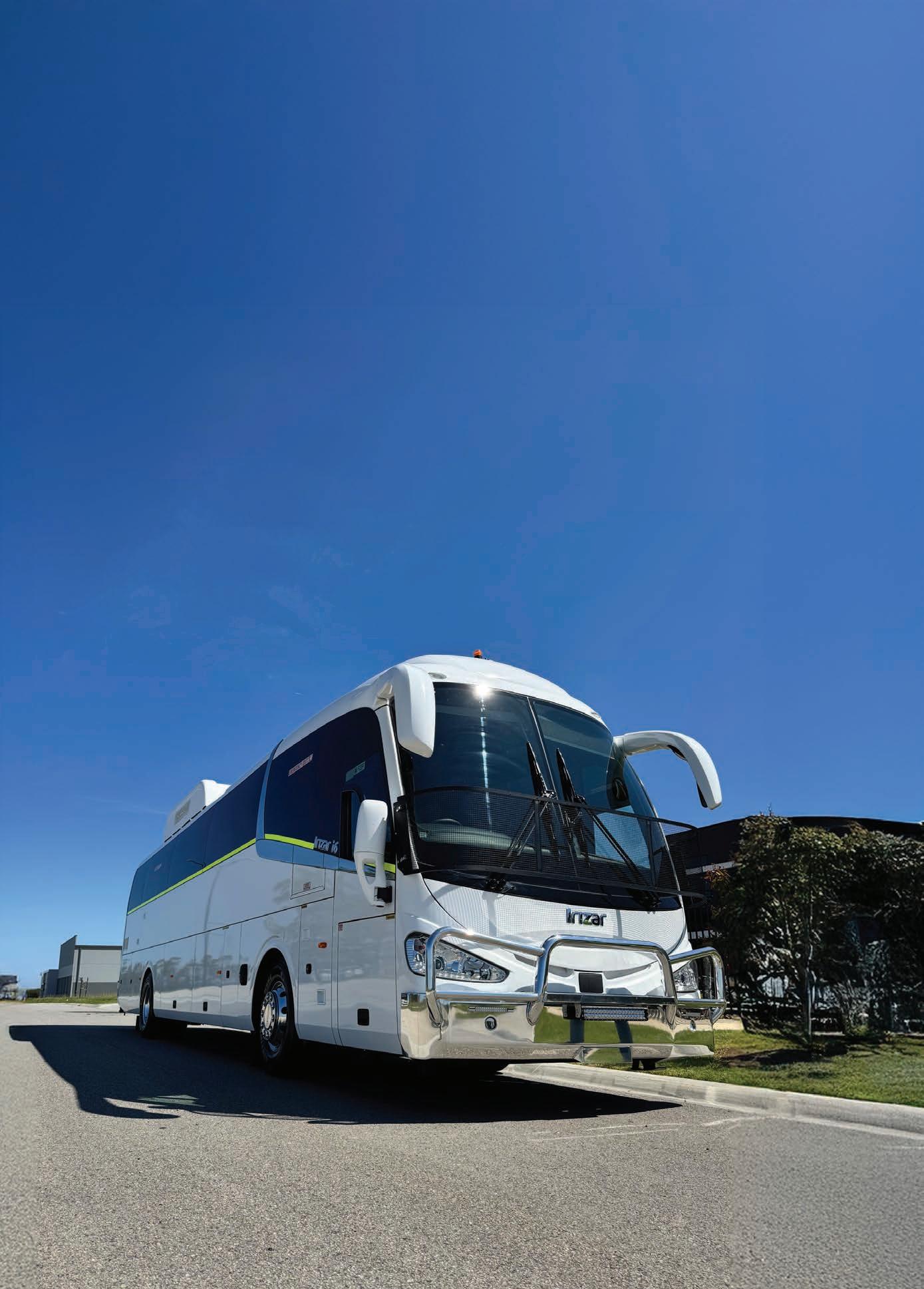

Secure the safest coach chassis, powerful and quiet hybrid-electric drive, and reduce CO2 emissions by up to 92%.
The Scania Irizar i6 Hybrid offers the best of both worlds, providing a low-emission solution that reduces your carbon footprint without requiring costly infrastructure investment or range restrictions.
Switch between battery and diesel
360 hp (265kW) Euro 6 engine
12-speed Scania Opticruise Gearbox
Alcoa Durabrite alloy wheels
Ideal for:
Remote regions with limited grid access
Mining operations requiring robust, low-emission solutions
Long-distance travel where range and refuelling flexibility are critical
The
upgrades will enable communities across Melbourne’s north and north-east to benefit from quieter, cleaner buses
Dysons has officially kicked off construction on the electrification of its Bundoora depot, marking what Dysons CEO Andrew Jakab called “a significant milestone in the evolution of Dysons”.
Hosting a site tour on July 24 at the company’s McKimmies Road site, the event gathered local leaders, industry partners and government representatives to celebrate the start of works on one of the state’s most ambitious zero-emissions bus infrastructure projects.
The upgrade, delivered in partnership with global electrification specialists Zenobē and long-time construction collaborators Dzine, will transform the existing depot into a smart-charging facility capable of supporting a 188-strong electric bus fleet as part of the Metropolitan Zero Emissions Bus Franchise (MZF).
“This project brings to life our commitment to sustainable transport and will ensure Bundoora is equipped to support the next generation of zero-emissions buses,” Jakab says.
During the walk-through, Jakab reflected on Dysons’ long history as a diesel bus operator and the need to evolve.
“For the past 73 years, Dysons has established a reputation as a very accomplished operator of diesel buses. But the reality is, after time we had to change, and we had to make the transition to become an accomplished operator of zero-emission buses,” he says.
“To do that, you need to be able to transform your depot and your infrastructure to accommodate a once-in-multi-generation change.”
Jakab acknowledged the crucial role of delivery partners and supporters in getting the project off the ground, singling out Zenobē country director for Australia and
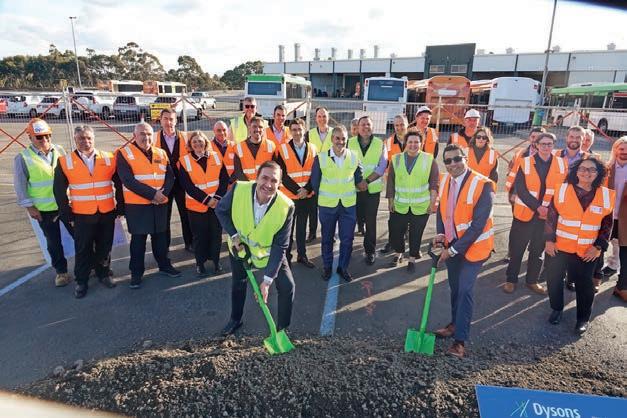
collaboration.
“It wasn’t always easy, but I appreciate the fact that you got there in the end,” he told them.
Ridge says the Bundoora depot would rank among the world’s largest electric bus depots once complete.
“This depot is actually quite a beautiful size on a global basis. When it’s fully electrified, it’ll be in the top 10 per cent of depots,” Ridge says.
“Dysons have taken this thing on to be such forward-thinking leaders in this space. There are a lot of risks, but they’ve taken quite bold steps. Hats off to them.”
Ridge described the project as a 10-year partnership with Dysons, with Zenobē supporting both design and operation phases.
“We’ve sort of signed our wedding vows with Dysons,” he jokes. “There is a lot of trust you have to put in your partners, and we take that seriously.”
Khallouf, whose firm first built the Bundoora depot in 2005, says he was proud to continue the relationship two decades on.
“We’re very excited to still be partnering with them, and I think we give thanks to the Dyson family for trusting in us these years,” Khallouf says.
“This project is important not just statewide, but nationally.”
The construction works will be
the depot will still be able to be used during the upgrades.
When completed, the depot will hold five transformers and boast dozens of chargers (one charger for every two electric buses).
Jakab emphasised that the construction milestone was about more than bricks and chargers.
“This event is about much more than just construction – it represents where Dysons is heading as a business and as a trusted service provider to the thousands of commuters that rely on us each day,” he says.
“We are proud to be working alongside government, industry and community to lead this shift to zero-emissions buses in a way that is responsible, practical and future- focused.”
He also gave thanks to the board, shareholders and Dysons’ internal executive team for supporting what he described as a “once-in-ageneration” transformation.
Electrification works are expected to be completed by June 30, 2026, with a formal opening ceremony to follow.
“Bundoora has always been a very important part of the Dysons network, and we think it will soon stand as a leading example of what a sustainable, decarbonised public transport future could look like, not just for Victoria, but beyond,” Jakab says.
As Australia’s largest supplier and extruder of aluminium, Capral is committed to supporting Australian manufacturing with high-quality, locally produced aluminium extrusions. Our state-of-the-art facilities provide precision-engineered solutions for the transport industry nationwide.
Choosing Capral is an investment in reliable supply, shorter lead times, and a stronger Australian manufacturing sector.
When you need Australian-made aluminium, Capral can do.
NWG is continuing its ambitious growth streak, unveiling another major move with the acquisition of a Tasmanian auto glass business
Hot on the heels of its recent rebrand from National Windscreens and an expansion into Alice Springs, NWG has announced it has acquired Tasmanina-based auto glass business Action Auto Glass and its sister company Action Auto Sliders.
The deal was set to settle on July 25, 2025.
The acquisition strengthens NWG’s national network to 16 owned branches and marks its fifth major purchase since partnering with boutique corporate advisory firm Nash Advisory.
Action Auto Glass has a long history in Tasmania, dating back to 1985 when it launched as Ability Windscreens in Burnie.
Rose Kemp joined the business in 1987 and, together with her husband Paul Kemp, took over the company in 2006 when it was a six-person operation. Under their leadership, the business grew to
In 2008, the Kemps diversified into window tinting by adding a Tint-a-Car franchise. Four years later, they rebranded the business as Action Auto Glass. Over nearly two decades, they built purpose-designed workshops in both Burnie and Devonport and developed strong relationships with major insurers, including Tasmania’s own RACT Insurance.
Now, Rose and Paul have decided the time is right to step back and sell the business, although they’ll continue to support the transition.
“‘This transition marks a significant milestone for us as a family business that has grown through passion, hard work and the support of our incredible team and loyal customers,” Action Auto Glass and Action Auto Sliders director Rose Kemp says.
“We are thrilled to pass the torch to NWG, a company that shares our values of family, integrity and
that our legacy, and more importantly our customers, will be in great hands.”
Action Auto Glass services all vehicle types, from cars and trucks to coaches and heavy machinery, and has earned a reputation as the go-to supplier for major insurance companies across Tasmania.
NWG plans significant investment to ensure the business remains at the forefront of rapidly evolving vehicle technology, with further expansion news expected soon.
“We are extremely honoured and proud that Rose and Paul chose to sell their business to NWG,” NWG CEO Campbell Jones says.
“The Action Auto Glass business is without doubt pound for pound the most impressive auto glass business I have seen in Australia. They have been truly dedicated to this business, which is easy to see in their operational processes, customer satisfaction scores and
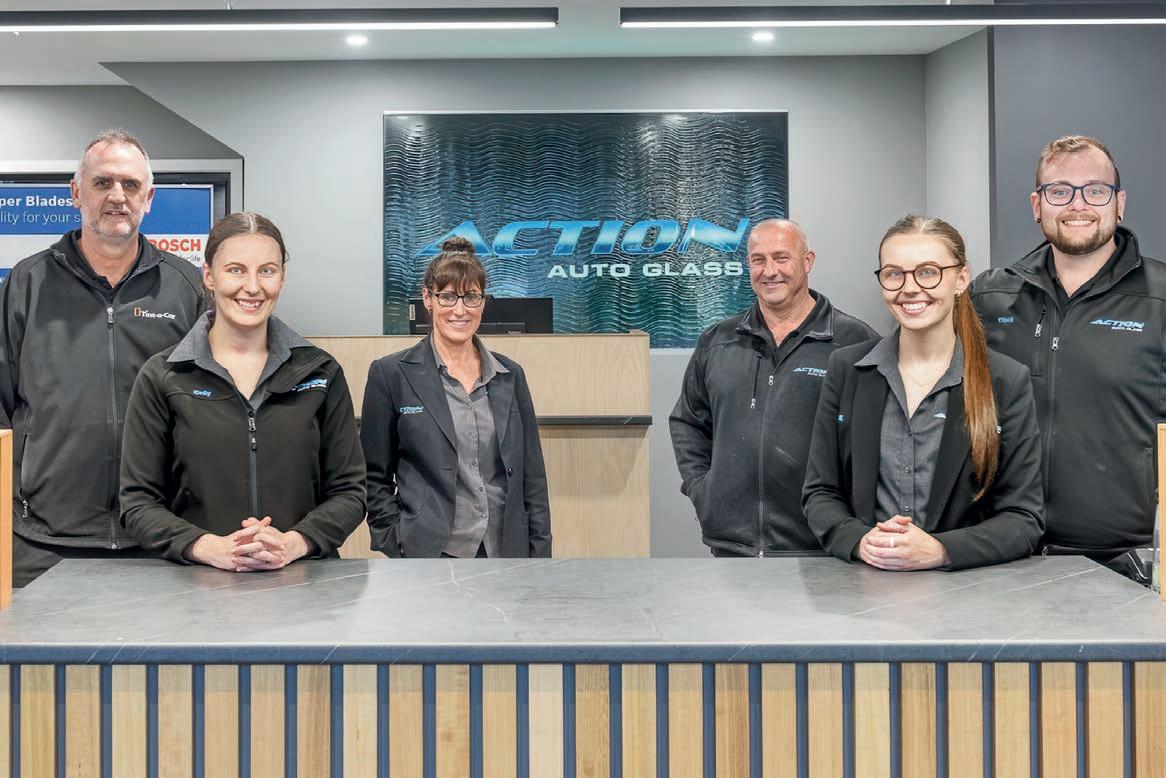
“You don’t get Net Promoter Scores

South Australian and Queensland manufacturing operations, following the initial announcement back in September last year.
The move adds BusTech’s Adelaide and Brisbane factories to GoZero’s existing Nexport manufacturing site in Western Sydney, with the company saying the expanded national capability puts it in prime position to help federal, state and local governments transition away from diesel fleets and deliver on their local content policies.
“The addition of BusTech’s factories in Brisbane and Adelaide to Nexport’s factory in Western Sydney cements GoZero Group as the leading Australian owned national bus manufacturer with the capability to fully support the local
aging diesel bus fleets with modern, quiet and safer zero emissions buses made here in Australia,” GoZero says in a statement.
“This acquisition also secures the future of local bus manufacturing jobs across New South Wales, Queensland and South Australia, with potential for further expansion into other states.”
The acquisition coincides with a shake-up in GoZero’s ownership structure, with long-time backer Tanarra Capital now taking a majority equity position in the newly formed GoZero Group Holdings Pty Ltd.
“Headquartered in Melbourne, and with over $3 billion in assets under management, Tanarra is well known for its partnership-driven investment approach and its strong commitment to responsible investing and social impact,” the statement reads.
innovative, high-quality businesses that contribute to a more sustainable investment in GoZero Group, as a leader in zero-emission transport, a
Holdings retains a significant stake in the business, ensuring continuity and ongoing support from one of Australia’s key clean energy investors.
“St Baker’s ongoing involvement enables GoZero Group to leverage synergies with St Baker’s portfolio of companies to deliver end-to-end electrified transport solutions and uniquely positions GoZero to offer holistic decarbonisation solutions for public transport, school, mining and commercial fleets,” GoZero says.
Leadership will remain intact, with
Nesbitt maintaining their minority
Halifax Capital and its associates will no longer hold shares or have involvement in the GoZero Group.
The announcement also comes off the back of GoZero’s decision to sell its 50 per cent stake in electric vehicle manufacturer Foton Mobility Distribution, as it sharpens its focus on domestic manufacturing under the Nexport and BusTech brands.
“GoZero Group fully endorses and supports the commitment of the federal and state governments to manufacture public transport assets here in Australia and calls on them to continue to demonstrate their support for genuine local bus manufacturing which creates long-term employment for Australian workers,” the company says.
“A predictable pipeline of bus orders is essential to sustain jobs, apprenticeships and ongoing investment in the sector.”
GoZero says it is now uniquely positioned to help lead the local charge toward sustainable transport.
Flix is currently in the process of looking for local operators along the east coast to join its tech-savvy network
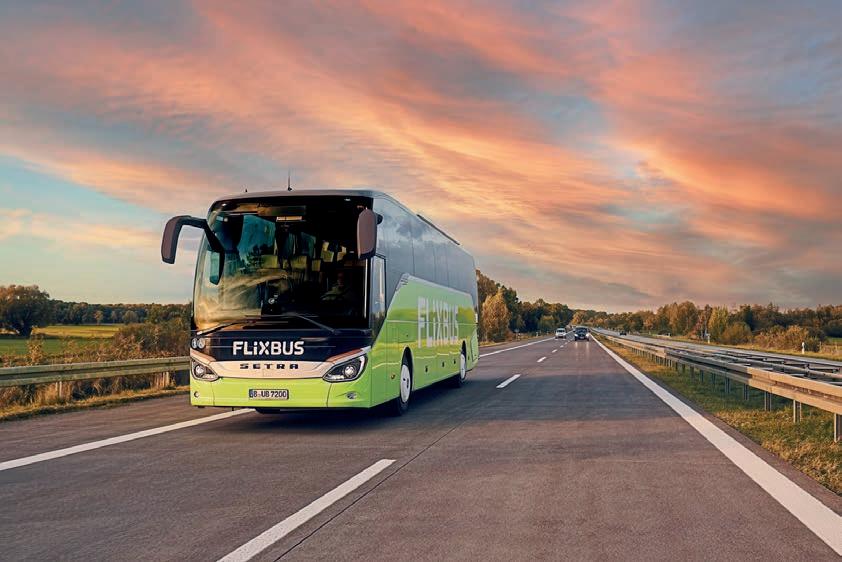
Flix, a global travel-tech leader in the public transport space, has announced it will enter the Australian market later this year.
The company plans to launch domestic routes along the East Coast under its FlixBus brand, connecting major cities including Sydney, Brisbane and Melbourne.
“Australia has been on our radar for a long time, but the country’s unique geography meant it took us a bit longer to get there. However, the potential was always clear to us,” Flix CEO and co-founder André Schwämmlein says.
“This milestone marks the next chapter in our global journey, following over a decade of proven success in Europe and North America, and continued strong growth across Latin America and India.”
Flix, who has carried more than 500 million passengers in 44 countries since launching in 2013, combines advanced technology with local expertise through partnerships with small and mid-sized bus operators. This model has allowed local
operators to grow alongside the brand while offering passengers a safe, reliable and digitally enabled travel experience.
To spearhead operations in Australia, Flix has appointed Yvan Lefranc-Morin as senior managing director for Australia. Lefranc-Morin, who is relocating to Sydney, will oversee the development of Flix’s business in the country as the company establishes an Australian office.
“Yvan has been part of Flix for over 10 years, successfully building amazing businesses in important markets such as France and the Benelux region. This makes him the ideal entrepreneur within Flix to develop the Australian market, driving growth with an amazing team, fostering strong partnerships with operators and leading the company’s long-term investment in the region,” Schwämmlein says.
Flix will bring its partnership model to Australia, working with established local coach operators who manage daily operations while
benefitting from Flix’s technology, network planning and data-driven demand forecasting.
“We’re in the process of looking for passionate and reliable local operators to join our network and grow with us here in Australia,” Lefranc-Morin says.
“Our aim is to build strong, long-term collaborations that combine local entrepreneurship with Flix’s global recognition and smart digital platform.”
Passengers can look forward to seamless booking via the FlixBus app or website, free Wi-Fi, power outlets, real-time GPS tracking and safe, modern coaches operated by local partners.
Flix’s Australian launch comes on the heels of its successful expansion in India and is part of the company’s growing presence in the Asia-Pacific region.
Lefranc-Morin says that the Australian market presents unique opportunities and challenges, particularly around distances and customer expectations.
“Australia is a very unique market, distance-wise, and in terms of Australians’ love for travel. Local coach operators already deliver quality service, but globally, we have learned that keeping up with fast-moving digital expectations can be tough and expensive,” he says.
“Flix brings an opportunity to help local coach operators adopt new technology faster, expand their passenger choice and upgrade the travel experience.
“Flix’s ambition goes beyond global expansion. We seek to create long-term value for Australian passengers and regional economies.”
FlixBus plans to initially focus on routes between Sydney, Brisbane and Melbourne, gradually expanding based on demand and customer feedback.
The industrial action saw the professionals refuse to work unpaid overtime, complete end-of-month reporting, approve timesheets or participate in accelerated training

Transport engineers and technical professionals employed by Queensland’s Department of Transport and Main Roads (TMR) have staged moderate industrial action in a push for fair and equal pay.
The move, led by Professionals Australia, came after what the union described as months of unsuccessful negotiations with the state government over pay parity.
In response to the planned industrial action, the Queensland government had threatened to withhold a full day’s pay, a move union leaders had slammed as “both disproportionate and unacceptable”.
Professionals Australia director Sean Kelly says the action was necessary to shine a light on the growing pay gap between TMR professionals and their industry counterparts, despite many working on the same projects.
“A professional at the Department of Transport and Main Roads is significantly underpaid compared to equivalent professionals right here in Queensland,” Kelly says.
“They are simply asking for fair treatment. So far, the government’s only offer has been a three per cent
increase, which is well short of what’s needed to achieve parity.”
According to the union, some department employees are earning up to 20 per cent less than their private-sector peers working alongside them.
“These are highly trained and qualified professionals who are responsible for keeping the state of Queensland running – from the building of major roads to our rail networks to running our traffic management system,” Kelly says.
The planned industrial action included work bans rather than full work stoppages. Kelly says members still showed up to perform essential duties but will no longer work unpaid overtime – a long-standing expectation in the department.
“Our members will continue to show up to work and complete their essential work for the people of Queensland, but will not be participating in overtime they are expected to work for free anyway,” he says.
Other elements of the work bans included a ban on working more than 36.25 hours per week, a ban on completing accelerated training, a
ban on end-of-month activities such as accruals, forecasting, milestone updates and project commentary, a refusal to submit or approve timesheets, including those for contractors, and introducing an email signature and out-of-office messages that state the member is participating in industrial action.
The union has accused transport minister Bart Mellish of taking a “sledgehammer” approach to what it describes as “moderate” industrial action.
“While our members have every intention of making sure that essential services are delivered, the government has said they will direct our members to not work at all,” Kelly says.
“This transport minister is stooping to tactics that were beneath even the Newman government. We haven’t seen this kind of intimidation since Bjelke-Petersen.”
Kelly says the union remains open to meaningful negotiations and warned of further consequences if the dispute drags on.
“The Department of Transport and Main Roads workers are paid up to 20 per cent less than their colleagues right here in Queensland who are partnering with them to deliver the exact same projects. Despite months of good-faith bargaining, the government has neglected to address this issue of parity,” Kelly says.
“We will stand up for the rights of our workers to be fairly paid for any day of work they show up to, whether that’s tomorrow, during the day of action or any other day.
“Without them, our state grinds to a halt. We want to work with the government to avoid delays on major projects or disruption to our transport networks, but it’s time for them to come to the table and pay workers what they are worth.”
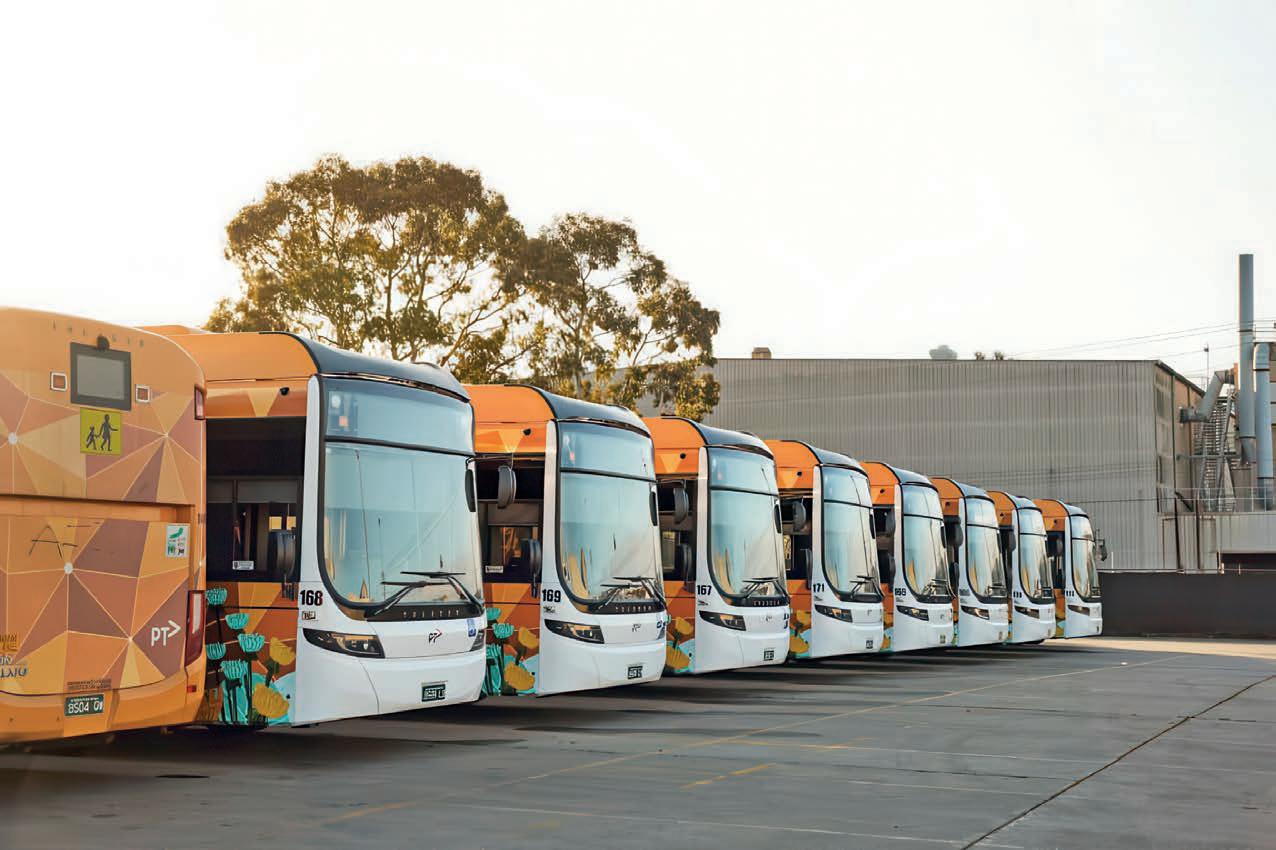
The new members will wield strategic influence on PTAANZ Committees, foster connection across industry and drive policy reform program while supporting close collaboration between the private and public sectors.
The Public Transport Association Australia New Zealand (PTAANZ) has unveiled its first-ever Champion Members, a new category of membership created to recognise organisations showing exceptional leadership in the public transport sector.
The six inaugural members of this elevated tier are Arup, Cubic Transportation Systems, Keolis, Kinetic Group, Mott MacDonald and Transit Systems.
Each has been selected for its ongoing contribution to PTAANZ programs and its commitment to shaping a sustainable, innovative and customer-focused public transport future.
Designed for agencies, delivery authorities, major councils and forward-thinking private sector players, the Champion Membership Tier provides greater influence and visibility within the PTAANZ network.
PTAANZ chief executive Lauren Streifer says the initiative aligns closely with the organisation’s Connected Choices strategy
“Arup, Cubic, Keolis, Kinetic, Mott MacDonald and Transit Systems share PTAANZ’s commitment to tackling difficult transport challenges and sharing best practice across the industry,” Streifer says.
“Their ongoing commitment to the work of PTAANZ has allowed us to maximise our industry impact and grow our team to further support our members.”
Champion Members will have a key role across PTAANZ Committees and will contribute to major policy reform areas including decarbonisation, mode shift and improving customer experience. They will also help bridge industry and government, working alongside Premier Members (public transport agencies from across Australia and New Zealand) to address shared challenges.
“Each member brings valuable insights drawn from their distinct positions within the public transport ecosystem,” Streifer says.
“As PTAANZ continues to thrive,
“It’s an exciting time to be involved in the transport sector – though not one without challenges. Our role at PTAANZ is to inspire excellence across the sector and ensure our members have access to global networks to meet these challenges, something our Champion Members will play a pivotal role in.”
The launch of the new membership tier comes just months ahead of two major PTAANZ events. The inaugural PTAANZ New Zealand Conference will take place in Auckland on September 5, followed by the annual Australian Conference and Gala Dinner in Brisbane on October 22.
“We’re delighted to be hosting an Annual Conference in New Zealand for the first time this year, enhancing our offering to members on both sides of the Tasman and driving important industry discussions,” Streifer says.
An existing Auckland on-demand rideshare service will be replaced in April 2026 by a new bus route, the 364
Auckland Transport has announced it will replace an on-demand service with a permanent bus route.
Supporting locals in the Papakura and Takaanini areas, the 364 will run between Papakura Station, Takaanini, Conifer Grove, Waiata Shores and Manurewa Station, serving Takaanini town centre, Takaanini Station and Te Mahia Station.
Buses will run every 30 minutes,
public transport and active modes Stacey Van Der Putten says since population has experienced a boost, demand for public transport has skyrocketed.
“Customers have told us they enjoy using AT Local, however we also know that it can be difficult to get a booking, particularly at peak commuting times,” Van Der Putten says.
“Adding more AT Local vehicles
customers won’t need to book, and buses will follow the same route and use the same bus stops every time.
“As well as catering to current demand, the bus service will have sufficient capacity to allow for the future as the local population continues to grow.”
Public consultation was open until August 10, with consultation also including questions about a proposed
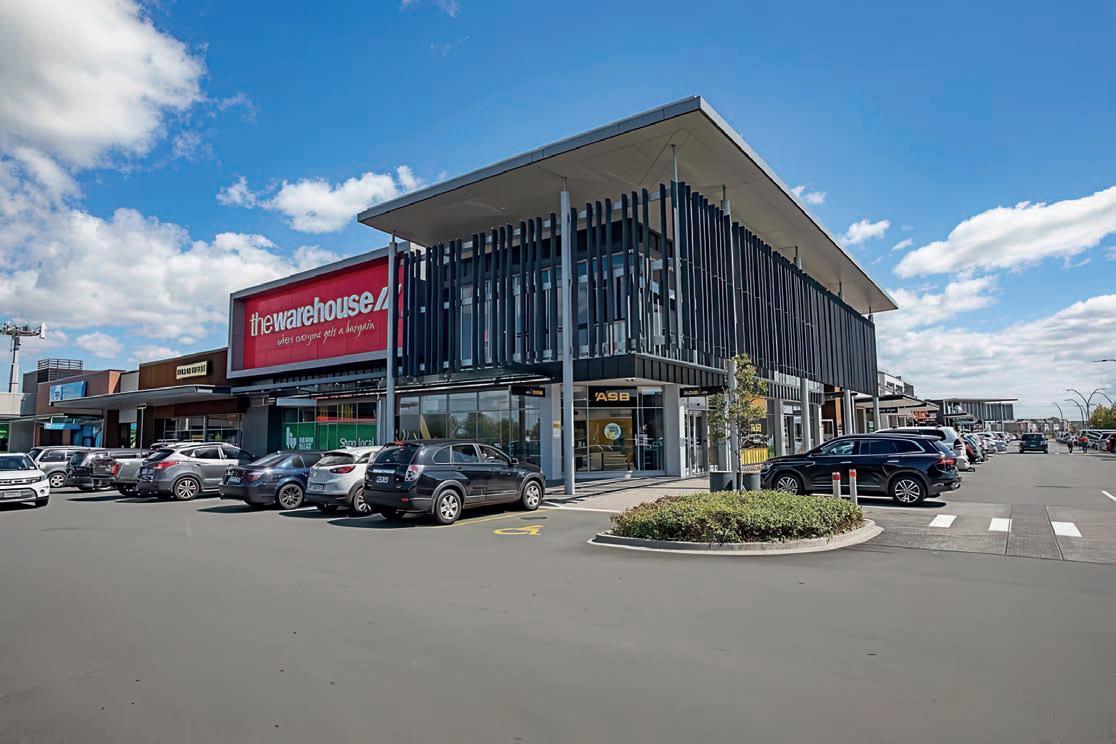



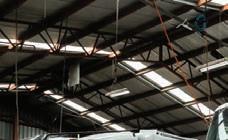

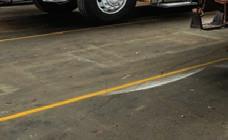
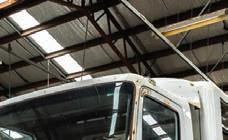
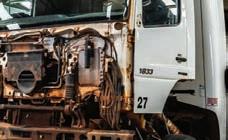






The changing of the guard at the Bus Industry Confederation this year has led to a deeper look into what the national bus industry needs in future
for a quick almond latte and some serious strategising with his team. He has met with members, visited depots and spoken with technicians, engineers, policy makers, industry experts and drivers alike. Listening and learning, he has at times been deeply concerned by what he saw and heard.
What has always been absolutely clear is that bus and coach is essential. Essential AND under pressure.
We’re an industry held together by resilient people and proud traditions. But we’re also dealing with rising costs, workforce shortages, tightening regulations and the complex transition to low- and zero-emissions. Our issues can’t be solved in silos.

Speaking last month in Western Australia, it became apparent to Varenya that regional operators face vastly different conditions compared to their metropolitan counterparts.
Yet, many of the challenges, like driver shortages, supply chain delays, ageing fleets, procurement and funding uncertainties, are shared across the country.
State by state, we’re strong but fragmented. Each jurisdiction works hard for its members, but our strength at the national level will only be as effective as our alignment. Whether you’re in Broome or Ballarat, Hobart or the Hunter — our issues are quite simply national.
We must unite and speak as one voice when it comes to:
• Regulatory consistency across borders
• Federal funding for zero-emission infrastructure
• National workforce development strategies and the need for fit-forpurpose procurement frameworks
that support local jobs and long-term service sustainability. This is where national advocacy hits critical mass: We work hard to position the bus industry as a transport provider AND a national economic, social asset.
We connect Australians to jobs, education, healthcare, culture and community. We reduce congestion, lower emissions and create pathways to a more equitable society. Yet, when governments shape policy or allocate funding, buses are often an afterthought.
That needs to change. And that’s the work we’re on with – meeting with federal ministers, departments and aligned sectors to ensure we’re not only heard but understood and valued.
Not to name-drop, but if you follow us on LinkedIn, you’ll know that we recently held a luncheon for operators in Sydney, featuring Senator Tony Sheldon as our guest of honour. That was followed by a dinner in Tasmania
with Transport Minister Eric Abetz. We also have engagement sessions in Queensland, Melbourne and Perth coming up.
The agenda is progressing nicely. But we can’t do it alone. We need bus and coach operators, suppliers, unions, state bodies — the industry — working together to share their knowledge, align our messages and, importantly, support one another via a common purpose.
When we can do that, we can shift national policy, secure long-term investment and future-proof our industry guaranteeing longevity and sustainability for generations to come. Over the coming months, the Bus Industry Confederation will continue to listen, learn and take on the hard work of building those all-important bridges between states, the various sectors, industry stakeholders and the government.
Together, we have an incredible opportunity to not just respond to change, but to shape it.
Yutong is preparing to drive forward the progress of green mobility in Australia when it launches the U18 to the local industry next year, Tiarna Condren reports
Australia’s city bus networks are evolving fast and growing in demand. With an increase in passenger patronage and pressure mounting on sustainability targets, operators are looking for bigger, smarter and greener ways to move people from point A to point B.
While trains and trams play a key role, there’s a critical gap they can’t always fill. One that calls for a high-capacity, flexible solution, like
the articulated bus.
Yutong’s soon-to-launch U18 electric articulated bus is designed to meet this need head-on, offering a powerful combination of size, smarts and sustainability.
“There’s been a clear gap in the Australian market when it comes to 18-metre zero-emission solutions,”
Yutong account manager for NSW and ACT Allen Shaw told ABC
“The U18 is the result of extensive R&D, local market feedback and
Below:
our global experience in delivering large-format electric vehicles.
“It’s designed to meet the performance, safety and efficiency needs of operators now and into the future.”
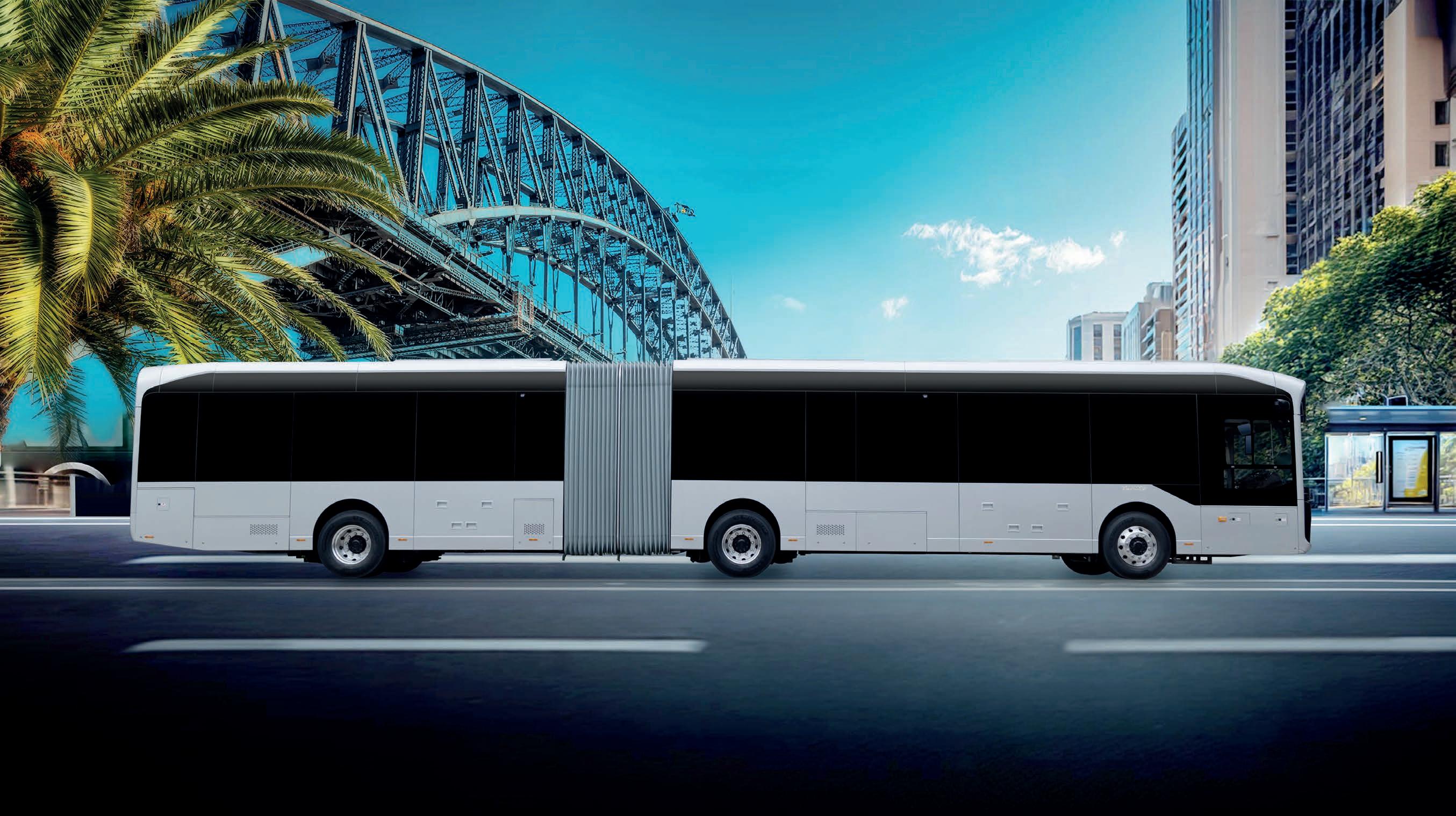
The U18 electric bus is packed with smart technology designed to boost efficiency and cut costs. At the heart of the vehicle are two powerful 240kW electric motors with dual-axle drive control which help recover twice as much energy during braking
compared to standard setups.
The model also features Yutong’s proprietary IES_c intelligent energy-saving system, along with a coasting mode that together deliver a 3.1 per cent improvement in overall energy efficiency.
Its high-efficiency motors stay in their peak performance range more than 90 per cent of the time, which helps extend the bus’s driving range.
Under SORT2 standard testing conditions, the U18 consumes as little as 0.9 kWh per kilometre, making it one of the most energy-efficient 18-metre battery electric buses on the market.
“Our goal with the U18 was to set a new benchmark for energy efficiency in the 18-metre electric bus segment,” Shaw says.
“By combining powerful dual
motors with intelligent energy management, we’re not only extending range but also helping operators significantly cut operational costs.”
From the frame to the finer details, the U18 is built with safety front and centre.
“We know operators and passengers are expecting more when it comes to safety, especially in larger electric vehicles,” Shaw says.
“That’s why we’ve built the U18 to withstand some of the toughest scenarios on the road, from collisions to rollovers and everything in between.”
The front structure has been reinforced to deliver greater protection for the driver in the event of a head-on collision, meeting Australian standards while exceeding
recognised international safety benchmarks (ECE R29 and ECE R93).
As with all of its product lines, key components like batteries are reinforced with anti-collision beams and protective covers, helping reduce maintenance costs and downtime after accidents.
The lithium iron phosphate batteries themselves are highly thermally stable and have been tested rigorously for safety under extreme conditions such as needle penetration, extrusion, high temperatures, short circuits and immersion.

To take things a step further, Yutong has also implemented a comprehensive active safety system for the batteries. This includes a Yutong long-term oxygen isolation and highly reliable nitrogen protection system, a high-temper-
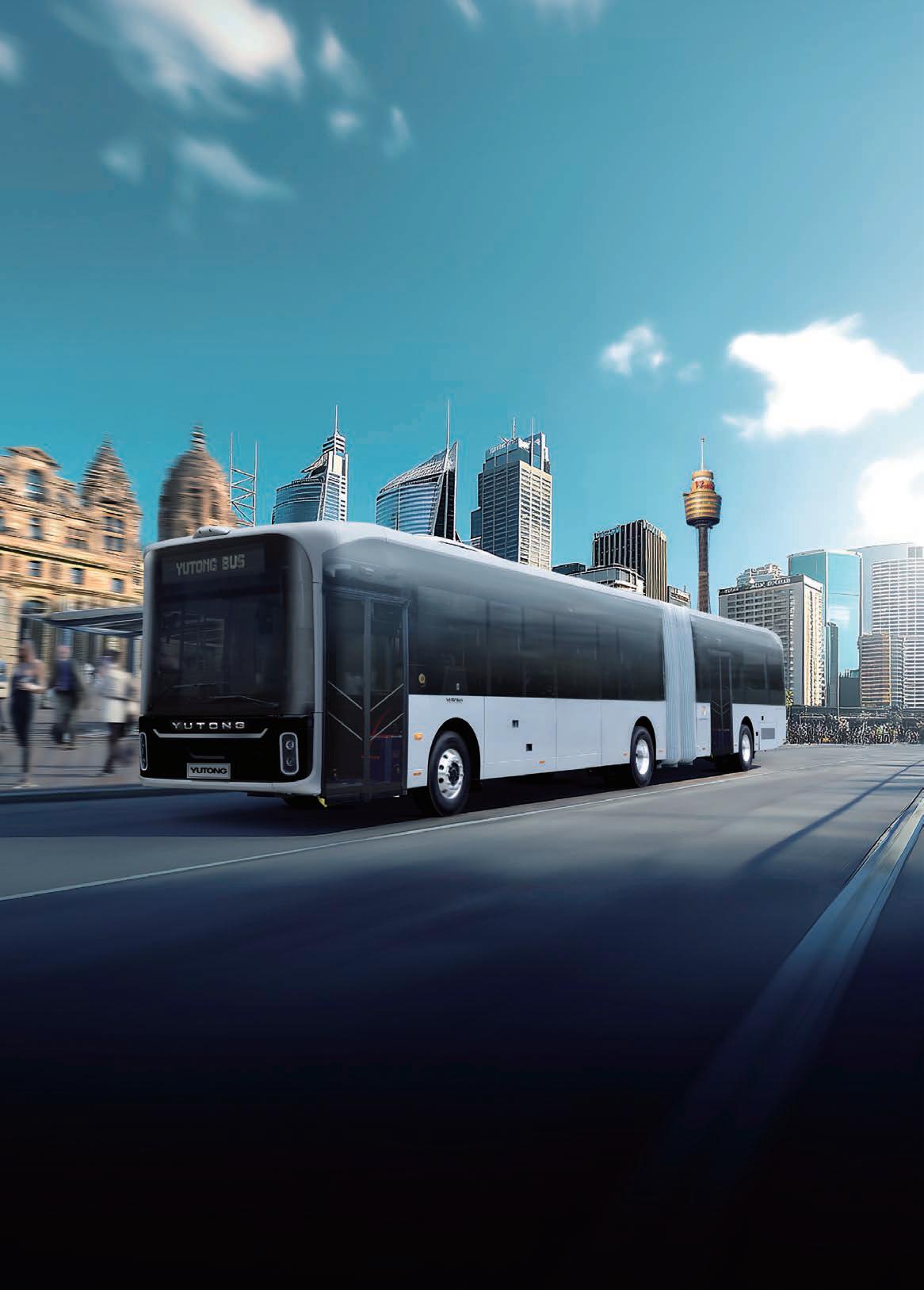
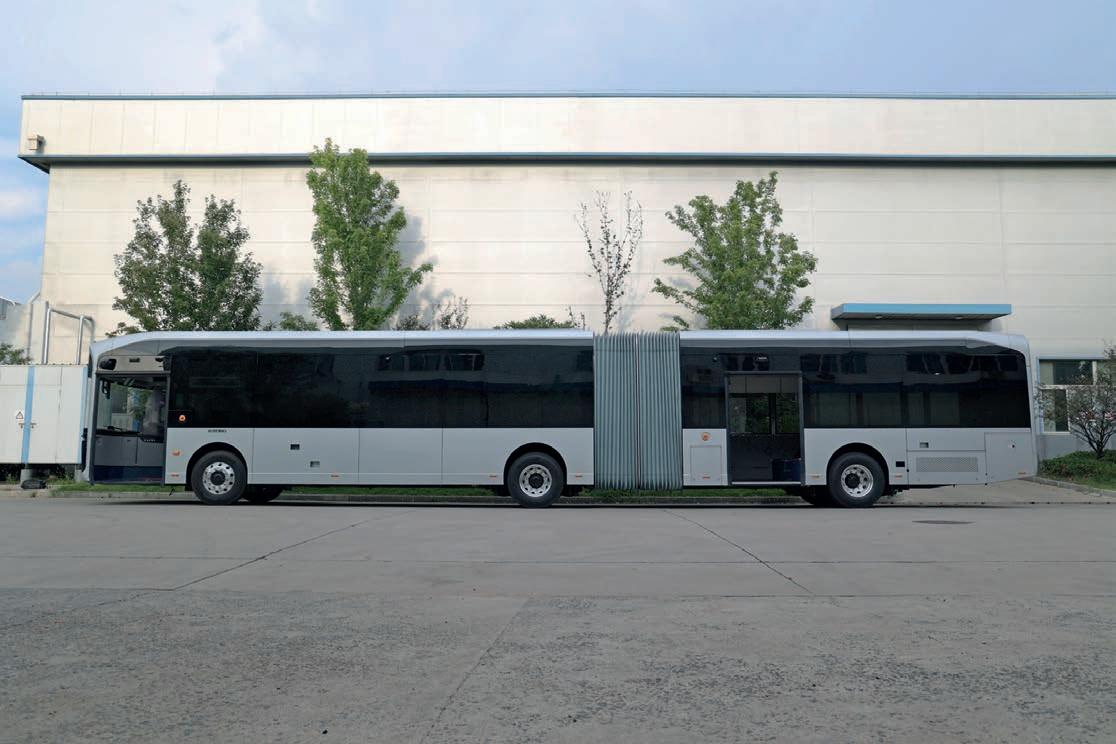
per cent. This high-efficiency control reduces failure rates, enhances vehicle availability and reduces maintenance costs.
Yutong has also made smart design decisions that make life easier for technicians. A redesigned exterior skin structure allows for easier access during servicing, cutting down on time and labour costs.
“We understand that every minute a vehicle is off the road costs money,” Shaw says.
“That’s why we’ve made maintenance access as smooth as possible.”
With components like the battery, motor and electric controller all meeting IP68 and IP6K9K standards for water resistance, the U18 is also built to handle extreme weather, including water immersion events like flash flooding.
A full-body cathodic electrophoresis coating ensures corrosion protection for over 15 years, and with a lifespan succeeding 20 years, this is a vehicle designed to deliver long-term value.
Of course, when it comes to the U18, it’s not just all about the function.
The U18 makes a statement on the street with sleek black curved panels and minimalist exterior lines, earning the Busworld Design Label at the Belgium Bus Expo in 2019. The runway-style front combination lights feature circular daytime running elements, while the rear taillights incorporate Yutong’s signature three-ring motif, offering brand distinction and a futuristic edge.
Inside, the cabin has been tailored specifically for the Australian market, with colour schemes and finishes selected to reflect local preferences. A flat roof and three-colour ambient lighting enhance the cabin’s spaciousness and elegance.
“Our operators are increasingly focused on the full passenger experience, from visual appeal to comfort and accessibility,” VDI national sales manager Sara Clark told ABC
“That’s why the U18 will be available in both 2-door and 3-door configurations, supporting faster boarding and disembarkation on busy urban routes.”
To further support comfort during peak loading, the U18 features a fully climate-controlled interior that maintains consistent cabin temperature even when doors remain open for extended periods.
The driver’s cockpit is equally considered, with a high-surround layout that separates the driver from passengers for better focus and safety. Features like an electromagnetic door lock, adjustable dashboard and independent climate controls provide optimal working conditions for the driver.
“We’ve put just as much thought into the driver’s area as the passenger space,” Clark adds.
“A more comfortable driver is a safer, more alert driver.”
With a capacity of up to 92 passengers, a gross vehicle weight of 26 tonnes and a top speed of 90 km/h, the U18 is purpose-built for Australia’s urban environments. More than that, it represents a meaningful step forward in how public transport can look and feel; efficient, modern and electric.
“We see the U18 electric model as a milestone for the Australian market,” Clark says.
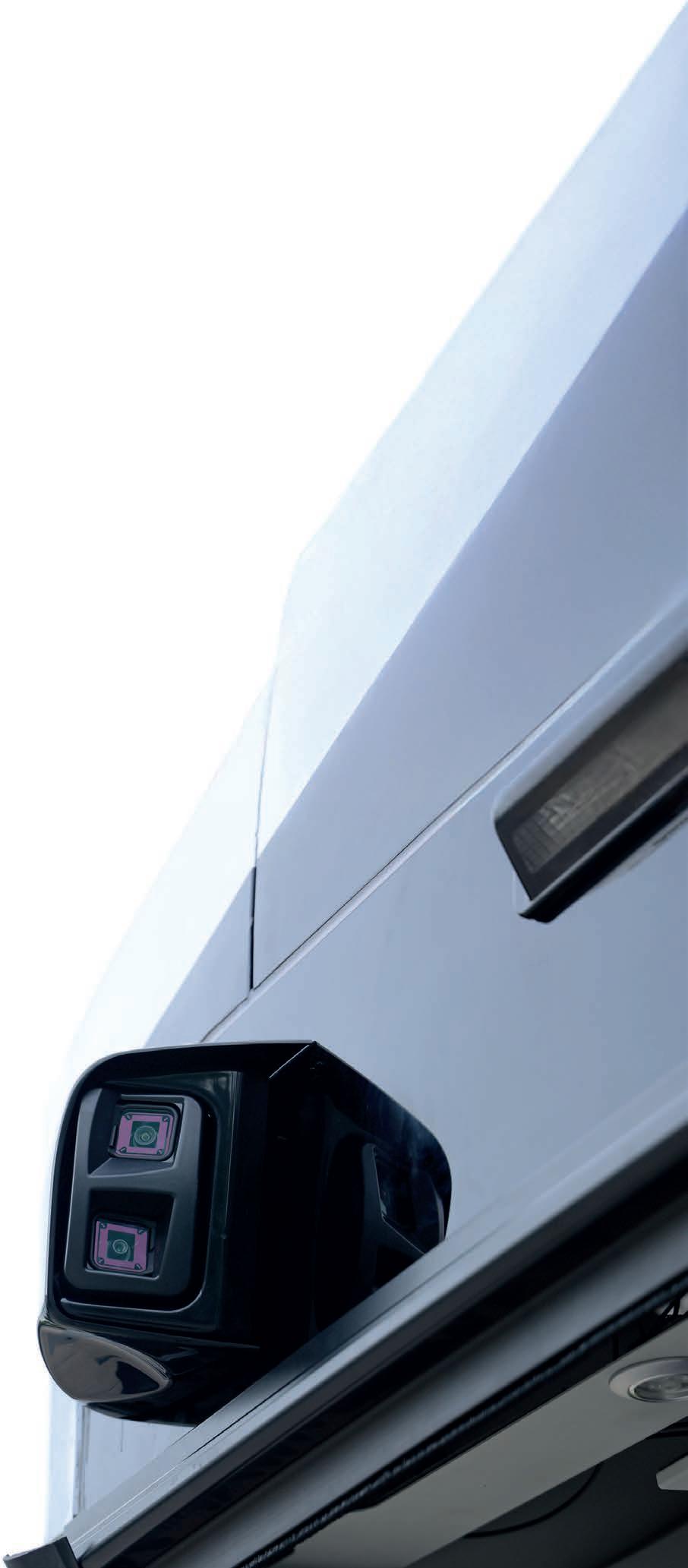
“It reflects where the industry is heading and what passengers increasingly expect from their daily commute.”
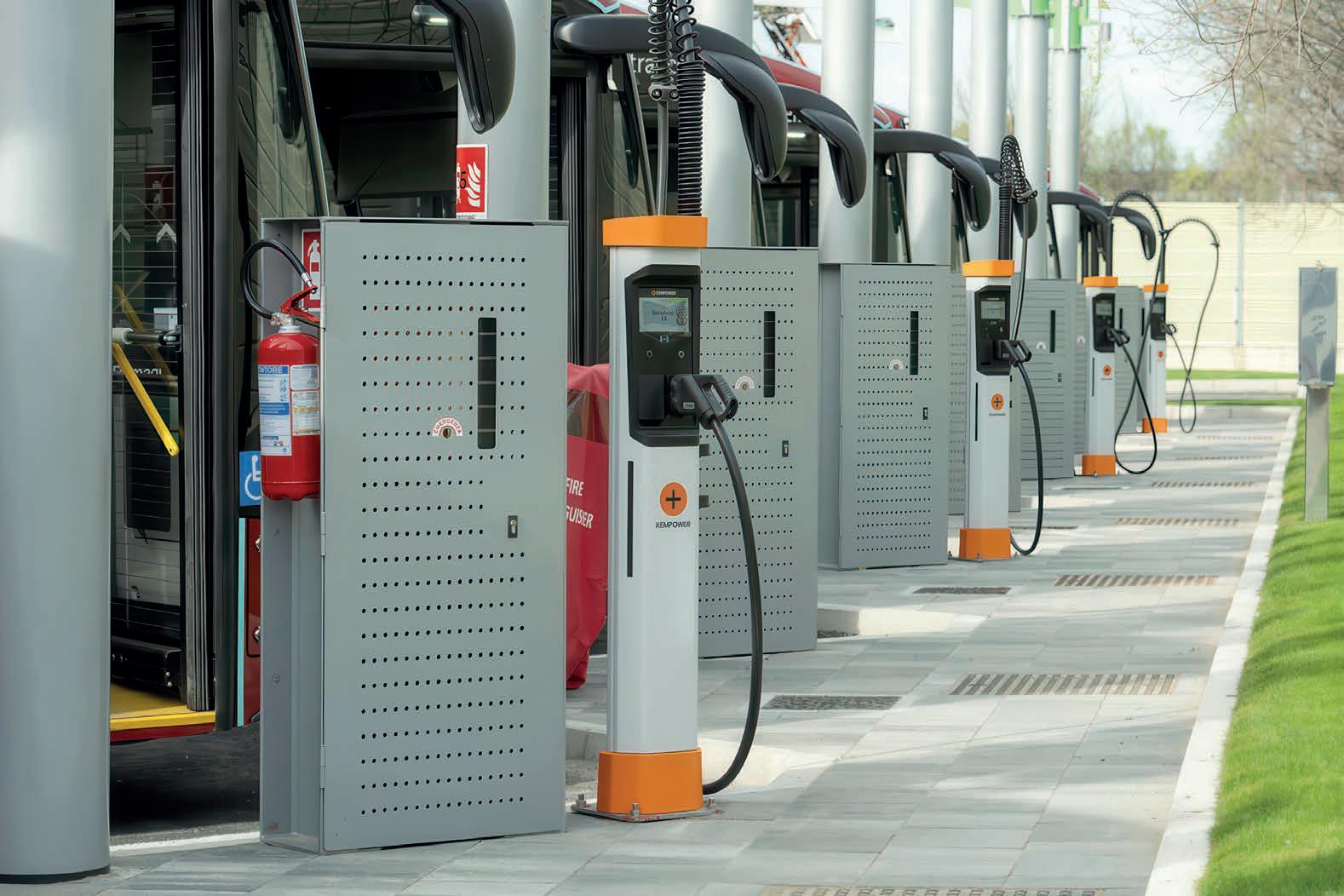
In just a couple of years, Finnish company Kempower has used a local partnership network to lead the way in Australian zero-emissions charging infrastructure
What came first – the chicken or the egg? A job requiring experience, or experience required for a job? Does belief shape reality, or reality shape belief?
As we stand, the Australasian bus and coach industry is at its very own chicken or egg juncture. To make a safe and effective transition to sustainable technology, should the zero-emissions vehicle technology come first, or the infrastructure required to charge or refuel it?
While the industry is well aware of some of the latest vehicle technology being introduced to
Australia, companies like Kempower, Charge Hub and Addelec form the ‘egg’ component of the industry’s great debate.
Since 2017, Kempower has been a fast-growing DC charger producer for electric vehicles coming out of Finland. It’s yet to hit the 10-year mark as a business, but it has already been named this year as the eighth fastest growing company in Europe according to the Financial Times. Its Kempower Station Charger was also listed number one in Monta’s 2025 rankings of high-performing and reliable DC EV chargers.
Just three years ago, this Nordic power spread to Australia,
with the global force forging local partnerships to become a leading option for bus and coach electrification.
“Kempower has been in Australia since 2022 and continues to grow steadily,” Dylan Perera, Kempower’s business development manager APAC, told ABC
“We have a team of staff locally that look after service, sales and marketing. Our aim is to understand the use case of our customers first and then match them to our products.”
While Kempower’s chargers cover a range of sectors, Perera says the bus industry has quickly become its most important focus in Australia

and New Zealand. Through a “firm” array of orders and projects won in the region, Kempower now views the bus and coach industry as the leading option to begin widespread charging infrastructure installation.
Making the trek down under and immediately succeeding is no easy feat – many an international company has expanded to Australia and struggled to adapt their technology to the unique local conditions that form our transport industry.
Kempower is an exception to the rule. Its success comes down to a tailored and considered approach to providing charging solutions that is immediately making a mark on the bus market.
“For us, it’s not just about supplying the hardware – we’re
110-bus project that required installation without disrupting operations.
Charge Hub provided the Kempower technology to Addelec, who was responsible for the electrical infrastructure delivery. Addelec is the head contractor for design and construction who has carried out the works on-site.
Earlier this year, the team of Addelec and Charge Hub were successful in tendering for the contract to power the Bayswater electric bus depot in Perth and provide electric charging capacity for 132 buses, with operations due to start mid-next year. On both projects, Kempower partnered with Charge Hub as the local distributor, with
Below: Kempower’s DC fast chargers are manufactured at its headquarters in Finland
Addelec fronting the bids to supply the hardware at both sites.
At Bayswater, Swan Group won the contract as the head contractor for the design and construction of a brand new depot which is the first new bus depot for WA’s Public Transport Authority (PTA) that will be 100 per cent electric buses. Swan Group brought in Addelec as the principal electrical charging infrastructure partner responsible for engineering and installation, with Addelec partnering with Charge Hub to supply the Kempower chargers.
“We initially started working with our partners in 2023, and this local focus has seen us be able to demonstrate the capability of our product for WA’s Public Transport

Authority (PTA)” Perera says.
“We’ve tried to help them standardise what they use with us –commonality comes with its benefits. Having wonderful partners like Charge Hub and Addelec alongside us has been crucial to the success of this approach.”
As part of this local partner network, Kempower has engineers attending the Malaga depot to commission the site.
For Charge Hub, being able to combine its local knowledge in electric vehicle charging with a quality international product like Kempower’s chargers has proven to be the catalyst for recent growth.
“Being the sales partner for Kempower in Australia, we’ve found that Kempower’s equipment has hit a sweet spot in the local bus market,” Charge Hub Australia managing director Paul Guy told ABC
“Having a partnership with them has allowed us to grow our installation expertise, from commissioning and training through to spare part management and continual service.”
Charge Hub has further built this local service presence via a training centre. This has served as a critical site for the depot charging projects that continue to amass in Perth, with
Charge Hub then establishing its own hotline to provide 24/7 support at any of these depots. At the same time, Addelec handles the installation and on-going service and maintenance of the chargers at the depots around Perth.
“We see WA as being ahead of other states in the infrastructure movement – PTA has a very clear plan for what they’re trying to do, and it helps us know what they want and how we can help them,” Guy says.
On the east coast, Kempower is helping Charge Hub complete projects in NSW, applying its commonality approach to depots and sites. For Charge Hub, it has also put its expertise towards projects at bus depots in Victoria, wider Sydney, Adelaide and Queensland.
“We work on all the main features of installing and operating bus charging infrastructure, and being able to provide the robust, fit-forpurpose 40kW Kempower movable DC charger as a loan/rent option has been crucial to this,” Guy says.
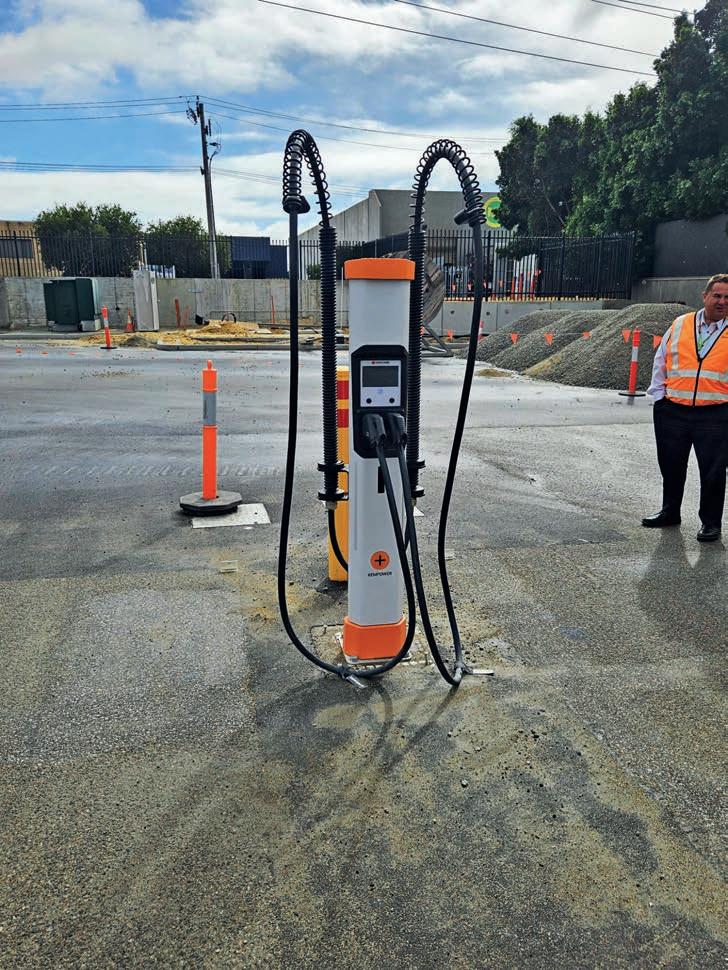
“Kempower is a good forwardthinking product. We want to keep going from strength to strength and support our existing customers while applying this knowledge to future projects that we do.”
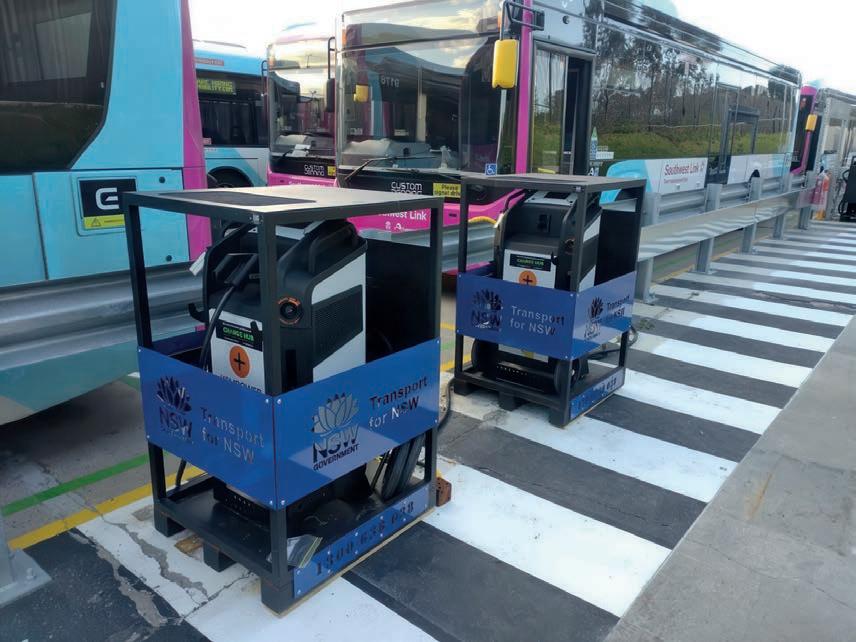
ongoing service and maintenance. The Addelec team was on the ground managing every step from digging trenches to mounting the hardware and ongoing training for depot staff.
At Malaga, Addelec came up with a more efficient deployment method using precast concrete blocks as foundations for the Kempower satellites and power cabinets.
Addelec’s Edward Kestel says the collaboration between the three companies has worked well because each party brings specific strengths.
“Early engagement with Charge Hub during the tender stage enabled our team to develop a unique, cost-effective solution that met the project requirements,” he told ABC
“By working with Kempower, Charge Hub was also able to offer extended warranties as an added value for the customer. With Addelec’s in-house engineers, we provided both the civil and electrical design for these projects. A significant amount of electrical cable was required, and our parent company, IPD Group, owns a cable manufacturer in CMI, which supplied all the DC cabling needed.
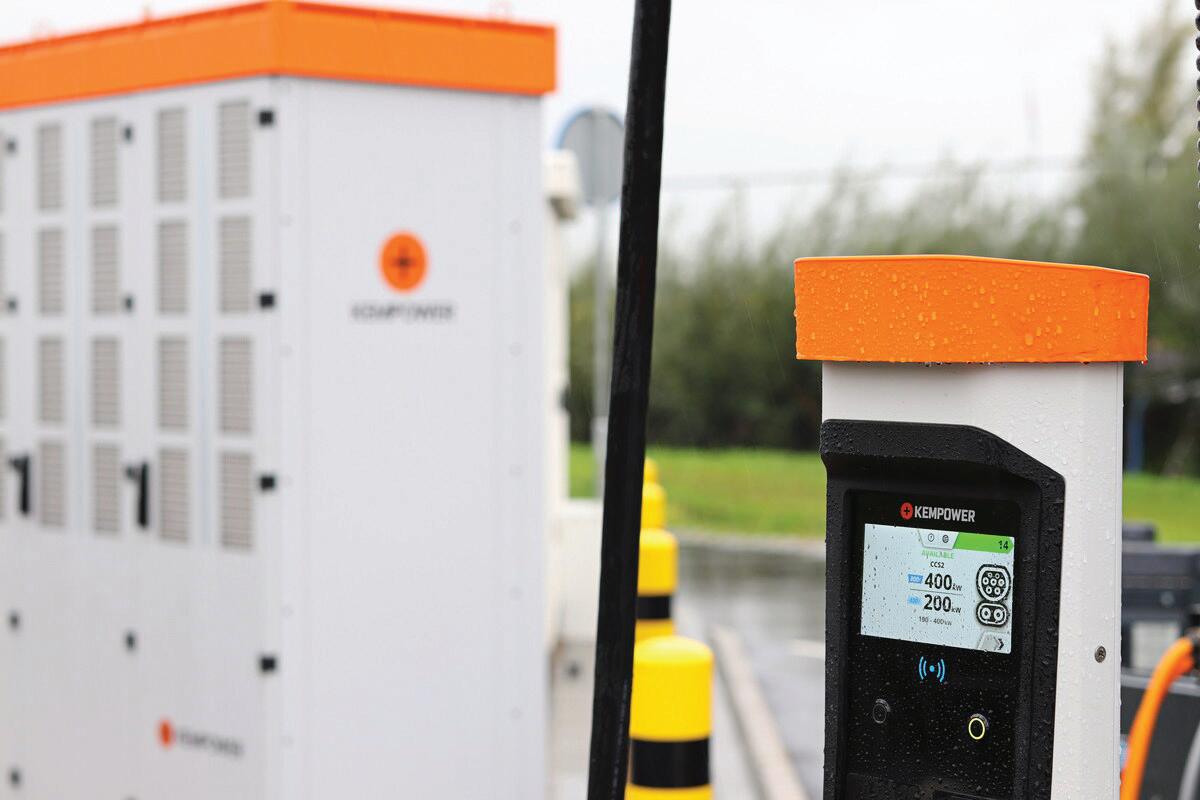
“One point we are particularly proud of is the way our team collaborated with depot managers in a live, operational depot to install chargers in a staged approach, minimising disruption to depot operations. At the end of the day, it’s about getting buses out on the roads to serve their customers.”
From Kempower’s side, the future goals align. Perera says Kempower’s modular charger means the brand’s local partnerships are able to leverage existing projects when it comes to landing new depot
electrification contracts.
“We get to share our lessons learned in a much easier way due to our charger being common across all depots,” Perera says.
“From each project we do in Australia, we learn more lessons and improve each time. Everyone in our partnership network has an area of expertise and we all benefit from each other – I want to thank our partners.”
Perera has aspirations for Kempower’s Australian network to continue growing. While Kempower may be quickly emerging at a global
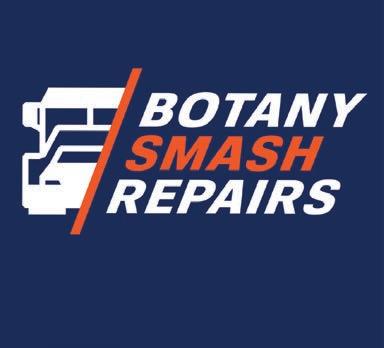


level, the Finnish company’s Australian focus is fast becoming a winner for the local bus industry in solving the critical conundrum that is the zero-emissions ‘chicken or egg’ debate.
“We are a local company as much as we are a global one. We have the right partners, and we want to continue offering reliable solutions that the bus industry and its customers enjoy,” Perera says.
“We have succeeded so far by listening to our customers and putting them first, so we will continue doing so with our partnership network.”

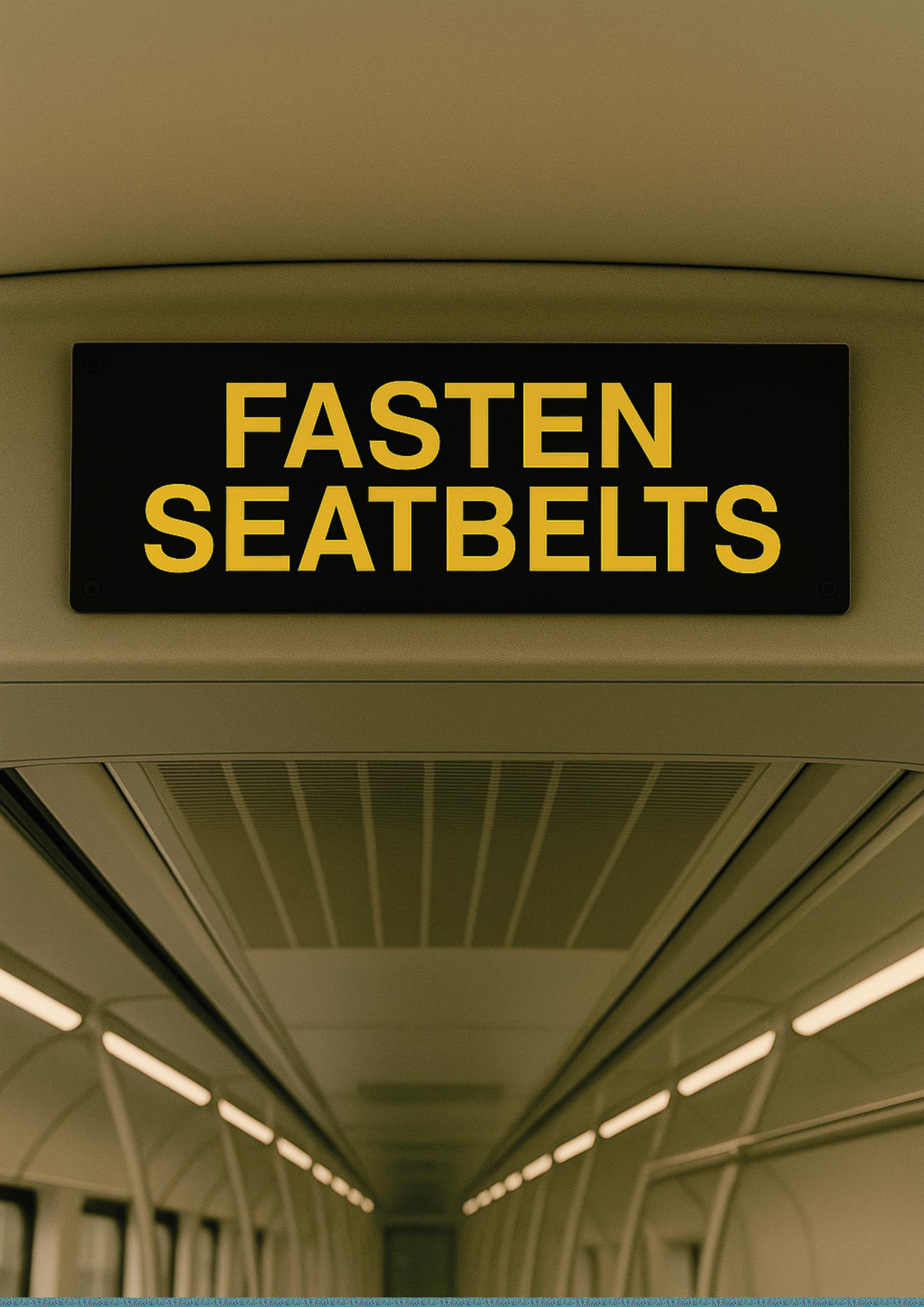

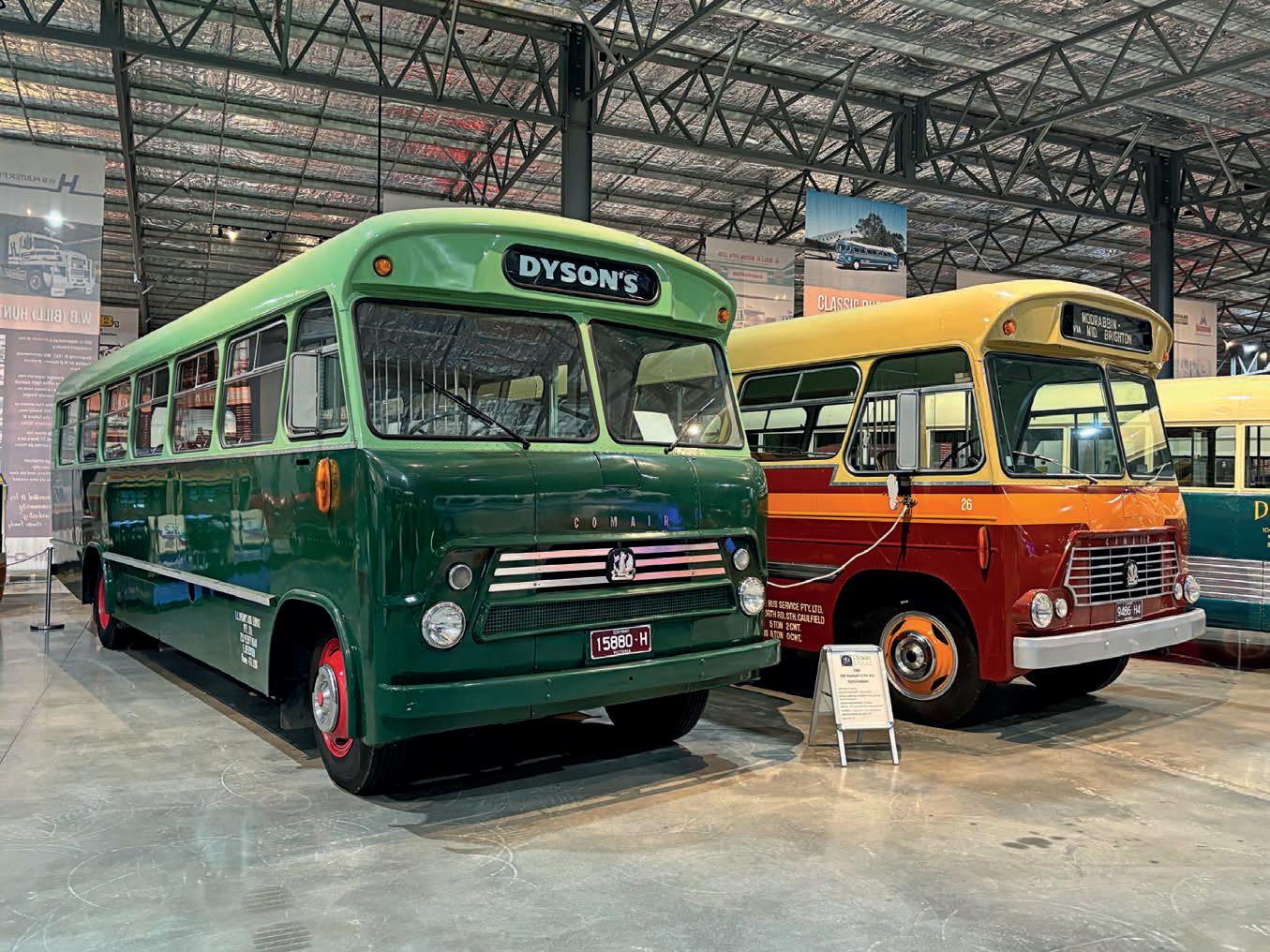

After more than 50 years of hope and hard work, Victoria is finally getting a dedicated bus museum
ost museums are quiet, people silently admiring the art with a tilted head and a pointed stare. Hushed whispers of wonder fill the cavernous rooms, the tension only to be broken by the occasional click of a camera shutter.
The Museum of Vehicle Evolution (MOVE) in Shepparton is different.
Walk through the halls of MOVE and you’ll hear it. The people pointing out cars that their parents drove, the trucks they used to see or the buses they caught to school.
For many, the vehicles don’t just stir nostalgia but instead elicit a deeply personal memory or connection. That’s what happened when one visitor stepped into an old coach on display at MOVE.
“I remember this man coming into the museum and wanting to get inside one of the older buses we have on
display,” MOVE operations manager Marcus Cook told ABC
“He sat in it and was telling the story of how he used to drive it up over the Cooma hills in blizzards, in the snow, with no chains on it. He said it was such a struggle, and he was fighting the steering wheel.
“At one point in his story, he began welling up and his wife said seeing the bus brought up a lot of memories for them. She couldn’t believe they were ever able to see one of the buses he drove again.”
MOVE was created for moments just like this. Back in 2011, MOVE opened as the Shepparton Motor Museum and Collectibles, driven by a shared dream among locals to preserve and celebrate regional history.
One of the driving forces behind the idea was Jim Andreadis. His family not only offered the land and buildings but also inspired a wave of
community support. Dozens of local tradies, builders and businesses came together to build something lasting.
“It was really a collective effort,” Cook says.
“Local car communities, local businesses, a few philanthropists –they all chipped in to get it going.”
The museum quickly found its identity. What began as a home for 50 or so cars became something much bigger. Over time, MOVE absorbed major private collections: the Furphy family’s agricultural and transport gear, Paul and Charlie Farren’s pre-1900 bikes, the Loel Thomson costume collection and more. These additions helped transform it from a regional curiosity into a serious destination.
Soon, trucks joined the cars. Motorcycles and vintage bikes followed not long after. A Kenworth Truck Pavilion was built. Visitors from all over the country made their way
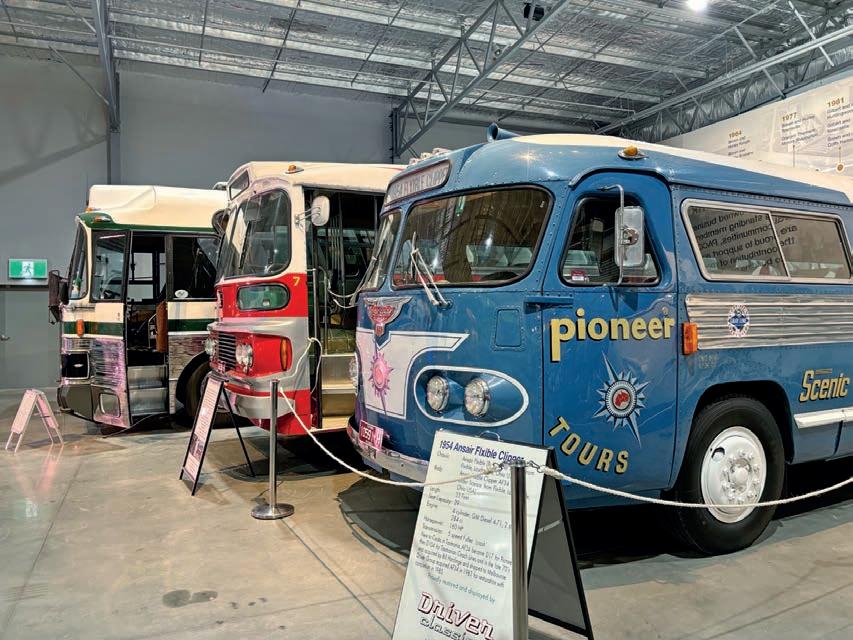
yet, something was missing.
There were no buses.
Geoff Foster, Paul Kennelly and Gary Driver, long-term members of the Bus and Coach Society of Victoria, had spent decades trying to change that.
“The idea of a bus museum has been floating around since 1968, when the society started,” Foster told ABC.
“There were proposals for a transport museum at places like Newport Workshops. Even the Lord Mayor had ideas at one point, but nothing ever came to fruition.”
Driver spent years scouting options. At one point, he even considered adding a bus display to the car museum at Arthur’s Seat, but the logistics didn’t add up. Then, by chance, he found himself in Shepparton.
“I walked into the Shepparton Motor Museum and noticed there was a truck on display. I asked someone if they’d ever thought about having a bus. They said they’d love to,” he says.
That simple conversation planted a seed. When Driver returned to Shepparton, he met with Jim Andreadis and discovered it was the perfect timing. Andreadis was already planning a major expansion of the museum and wanted MOVE to reflect all modes of transport.
“He was really open to it,” Driver says.
“And before long, we had our first buses on display.”
MOVE started small on the bus front, with just a couple of models
on display.
MOVE doesn’t actually own the vehicles on display. Everything, from the rarest car to the largest coach, is loaned by either individuals or companies, usually for a fixed term. This keeps the exhibits fresh and means there’s always something new to see.
The current bus line-up includes everything from 1930s bonneted buses to iconic 1950s Pioneer express coaches and Bedfords that defined post-war transport in Victoria. A few standout examples include a Flxible Clipper, one of the most eye-catching coaches of the era, and a Pioneer GM that once turned heads on cross-country routes.
attention,” Driver says.
The collection will soon also host ticket machines, signs, uniforms, timetables, photos and more
and they tap into that nostalgic nerve. But we want variety, we want old Bedfords, unrestored buses, ticket machines, uniforms. The whole story.”
Victoria’s approach to bus preservation is a little different from what you might see in New South Wales.
“In Sydney, it’s all about the enthusiast groups,” Foster says. “In Victoria, the operators get involved.”
That includes families like the Dysons and Higginsons – operators who preserved their own vehicles over time and kept them in pristine condition.
“Because they were industry people, they had the funds and know-how to do proper restorations,” Foster says.
“So a lot of what we have comes from that side of the fence.”
The plan is to rotate vehicles regularly, mixing up the display to reflect different eras and types, but they’ll need more space to live out that dream. And that’s why MOVE is expanding again.
Right now, a partially covered outdoor area on the site is being transformed into a dedicated bus pavilion. This space once hosted Saturday markets and large events, but with input from Foster, Kennelly and Driver, a plan was made to enclose the area and turn it into something new: a true bus museum.
Construction is expected to start in
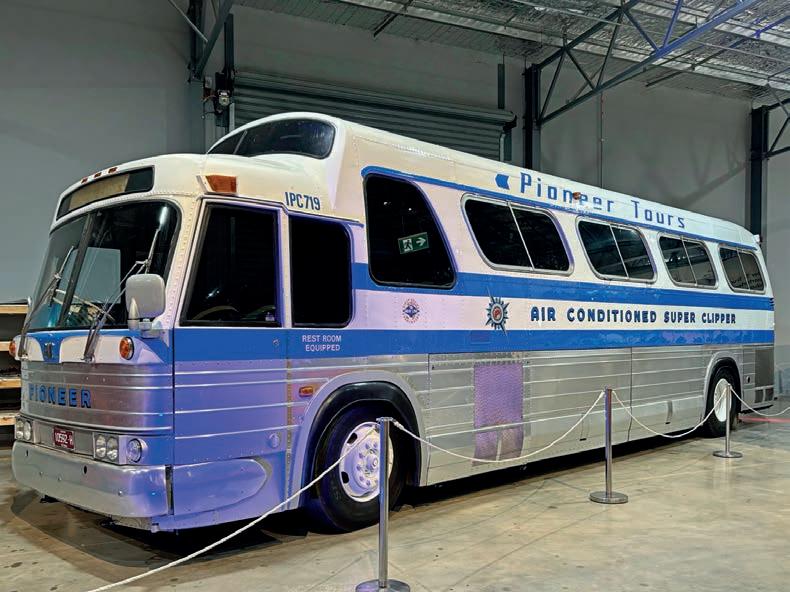
between 15 and 20 buses at a time, depending on how they’re arranged.
“We don’t want to cram them in like sardines,” Driver says.
“We want people to be able to walk around, take photos, see the details. It’s about the experience.”
Unlike other transport museums in Australia, MOVE is open every day.
“Sydney’s bus museum is great, but it’s volunteer-run and only opens every second Sunday,” Foster says.
“MOVE has paid staff, a cafe, a souvenir shop, it’s a world-class operation.”
A purpose-built bus space, professionally managed, open daily to the public – it’s what the Bus and Coach Society of Victoria has been working towards since 1968.The buzz is already building. MOVE has started promoting the pavilion with a billboard bus out front in a decommissioned Sydney double-decker parked proudly at the entrance.

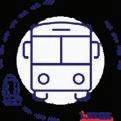

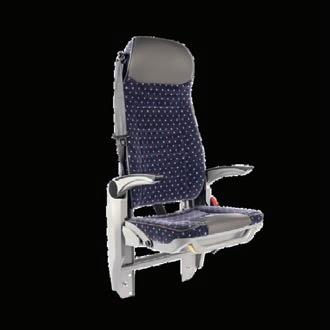
“They even added the word ‘Buses’ to the sign,” Driver says.
“They really want to make this work.”
The expansion is being co-funded by the Bus and Coach Society of Victoria and MOVE itself. Around two-thirds of the money is being raised by the society, with support from donors and the broader bus industry.
“MOVE’s contributing the rest,” Foster says. “They’ll use part of the space for other things too – a commercial kitchen, maybe a car or a truck, but the bulk of it is for the buses.”
The fundraising effort is ongoing, with the society’s secretary, Paul Kennelly, quietly powering a lot behind the scenes. His years of work have helped keep the society going when resources were tight, and now, with the expansion taking shape, his efforts are finally bearing fruit.
“Paul’s been the backbone of the club for years,” Foster says.
“And he’s also a major donor. He

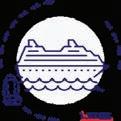
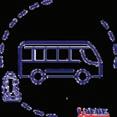

absolutely deserves credit for how far we have come.”
Construction on the new bus pavilion is expected to begin within weeks. The goal is to open before the end of 2025, with a formal launch event planned once everything is in place.
The pavilion will feature not just vehicles, but also smaller displays, ticket machines, signs, uniforms, timetables, photos and all the day-to-day items that tell the story of bus travel across the decades.
The team knows there’s still work to do, funds to raise, stories to document and vehicles to source. But after more than 50 years of talk, Victoria’s buses are finally getting their museum.
To contribute to the new MOVE Bus Pavilion, contact BCSV via email; secretary@bcsv.org.au or website; bcsv.org.au or Facebook page; BCSV: Bus and Coach Society of Victoria.

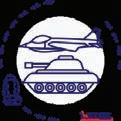
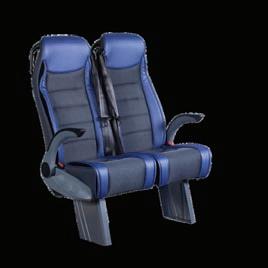


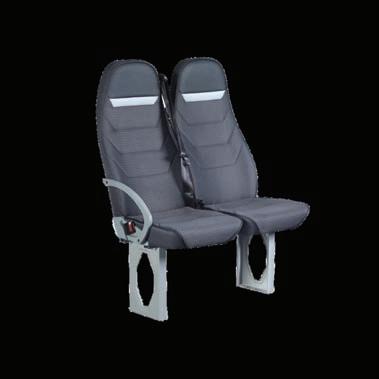
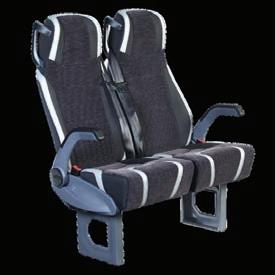




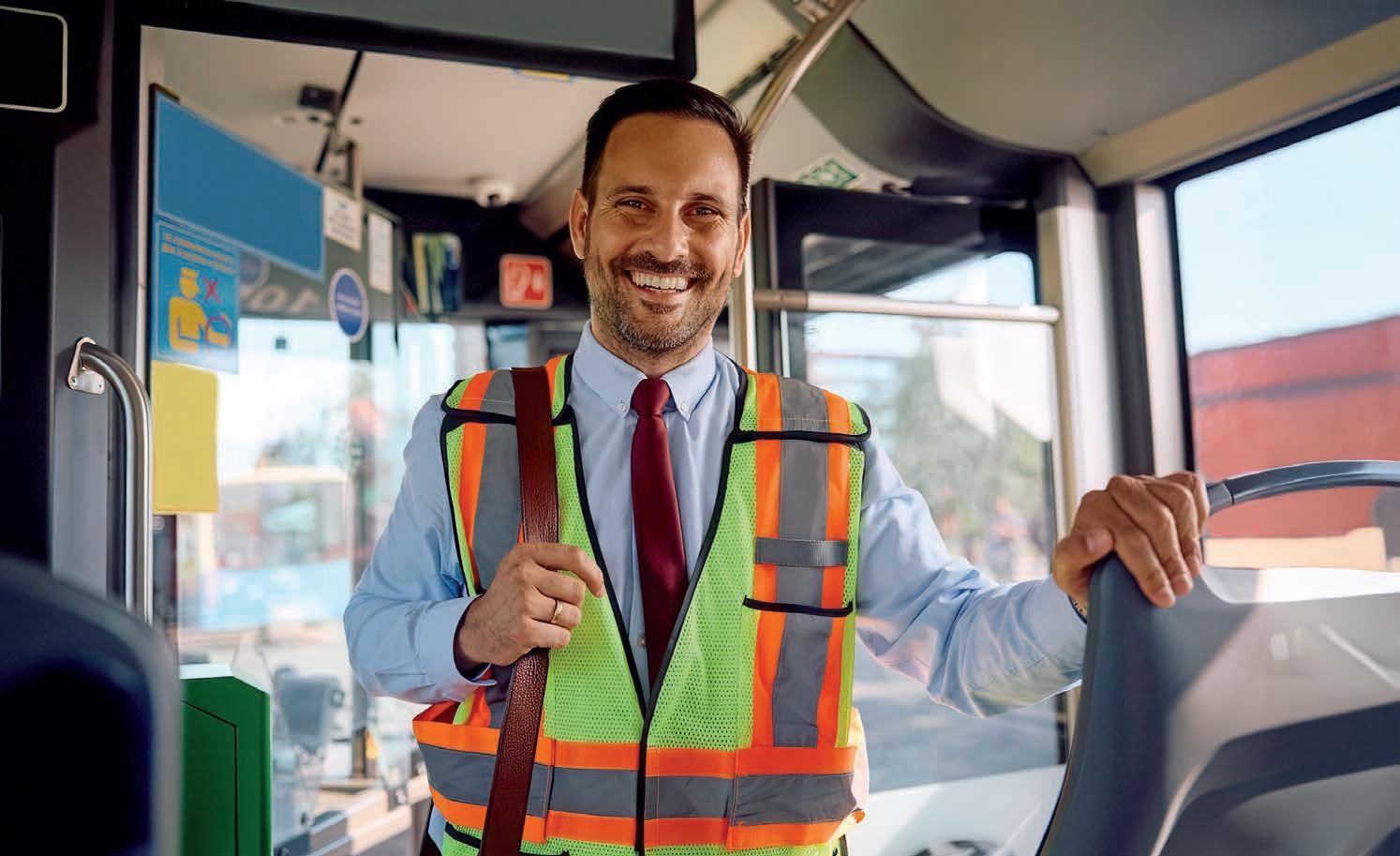
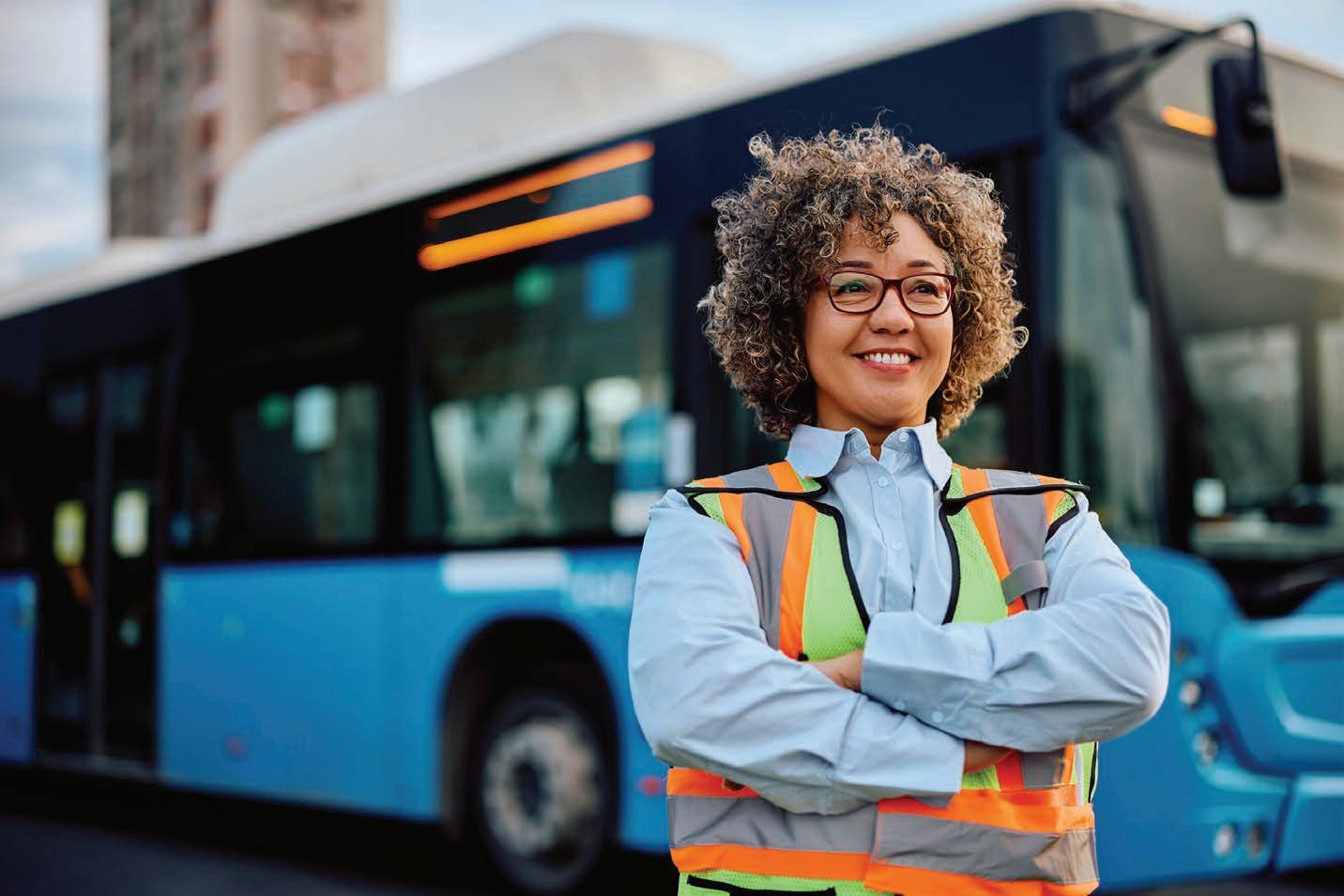


ABC has been on the hunt for the happiest bus drivers across Australia and New Zealand
Here at ABC Magazine, we understand that the Australasian bus and coach industry is powered by people.
From the manufacturers building our vehicles and parts to the suppliers keeping fleets running, the operators planning routes and, of course, the passengers who rely on public transport every day.
But at the centre of it all is one familiar, smiling face. The driver.
They’re the ones navigating traffic, managing tight schedules, answering questions, calming nerves and, most memorably, doing it all with a smile.
In recognition of the unsung heroes who make the daily grind that little bit brighter, ABC Magazine is proud to announce the finalists in its inaugural Happiest Bus Driver Competition.
The competition set out to find the most cheerful, community-minded and positively infectious bus drivers from across Australia and New Zealand.
Nominations poured in from passengers, colleagues, family members and friends. Each
submission told stories of drivers who not only keep our towns and cities moving but go the extra mile to lift the mood and make every journey count. The finalists are:
MarioCortijo
Operator: Panorama Coaches
Known for driving the metropolitan service buses (578/9 in particular) and charter for decades for Panorama Coaches, Mario is an “awesome guy” who knows his regulars and loves a chat. Despite the operator recently ceasing operations in metropolitan Melbourne, Mario is still involved in running charter and school buses.
NorbertGenci
Operator: Transdev
John Holland/Port Botany
Norbert has been described as a “very special driver” who will regularly go the extra mile to ensure passengers have a safe journey. Norbert’s wealth of knowledge of bus operations across Sydney and his extremely happy approach make him an amazing driver, and he regularly greets passengers with a big smile
Above: Do you know any bus drivers who go above and beyond? Image: Drazen/ stock.adobe.com
saying good morning to everyone. His passion is infectious, even purchasing his favourite 14.5m Scania bus from the State Transit Authority of NSW (3419).
RolandTornyai
Operator: Transdev
John Holland / Waverley
Roland is a passionate and hardworking team member who brings positivity and energy to every shift. Originally from Hungary, he is well known among his peers for his friendly nature, love of conversation and enthusiasm for capturing moments with selfies. Roland is also a strong advocate for healthy living and is always willing to share tips on nutrition and wellbeing, supporting a culture of wellness within the team.
The winner of the Happiest Bus Driver Competition will be announced in the next issue of ABC Magazine, with a full feature showcasing their journey, their philosophy and what makes them such a valued part of public transport.
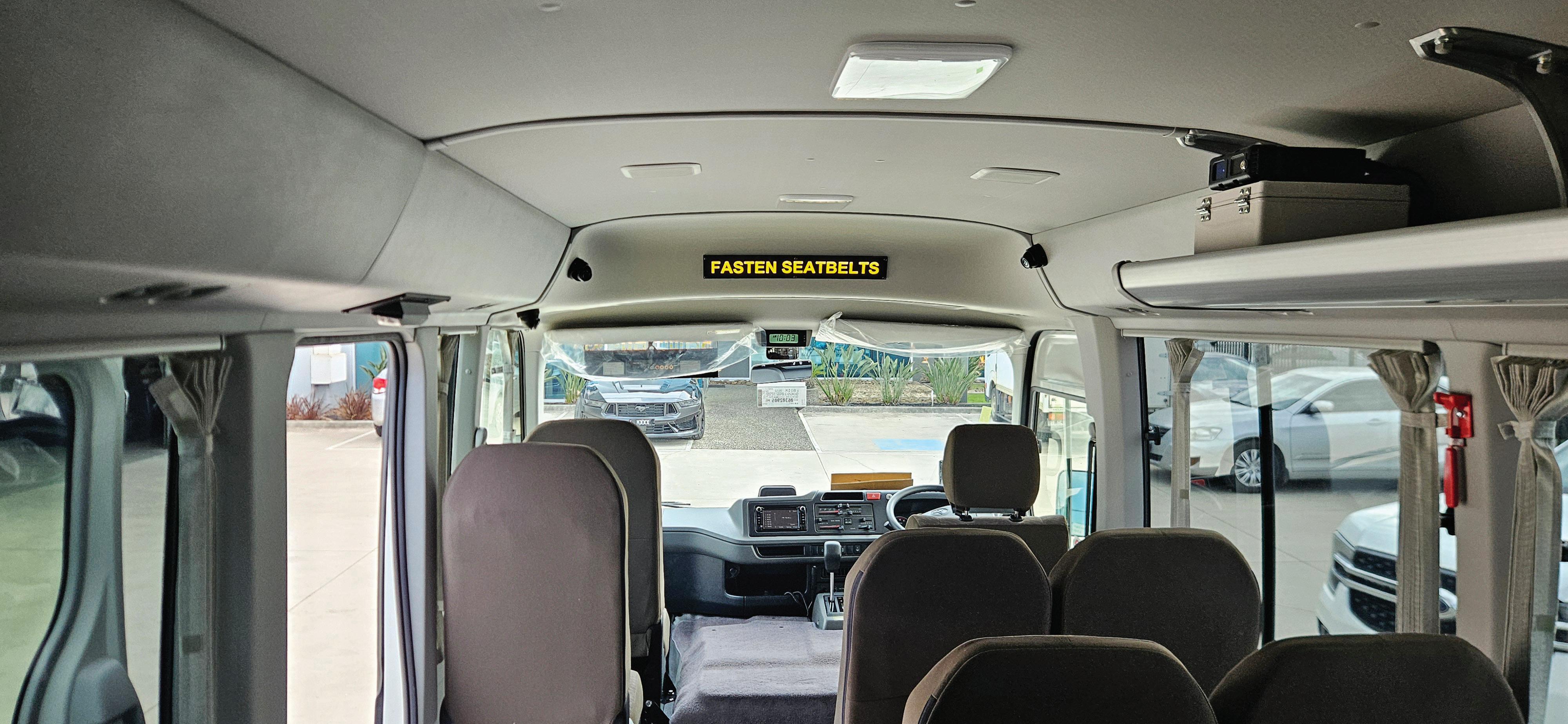
Everyone needs a problem solver. A team that can find a solution for a frustrating challenge, or a company that offers the ideal product to fit a crucial need. In the bus and coach sector, Solid Circuit Enterprises is this business.
The team at Solid Circuit has decades of bus and fire industry experience from installing, designing and manufacturing products for Solid Circuit. The result is a range of
bespoke electronic products for the Australian bus and coach industry that takes safety to a new level.
The Safe-Ride system is at the front and centre of Solid Circuit’s latest innovations, with the Australian designed multi-function alert system adhering to a recently implemented Australian Design Rule (ADR).
“On the back of ADR68/01 –Occupant Protection in Buses, our Safe-Ride system is ensuring bus and coach operators can meet the
in less work during the installation process and it becomes a cheaper option because there’s no need to install and duplicate speaker sets.
“We’re just simply utilising one speaker channel momentarily when the fasten seatbelt announcement is made and we then re-set it,” McHatton says.
“Music can keep playing on the bus, the announcement specified in the ADR just plays on the left channel before returning to the sound being played prior.”
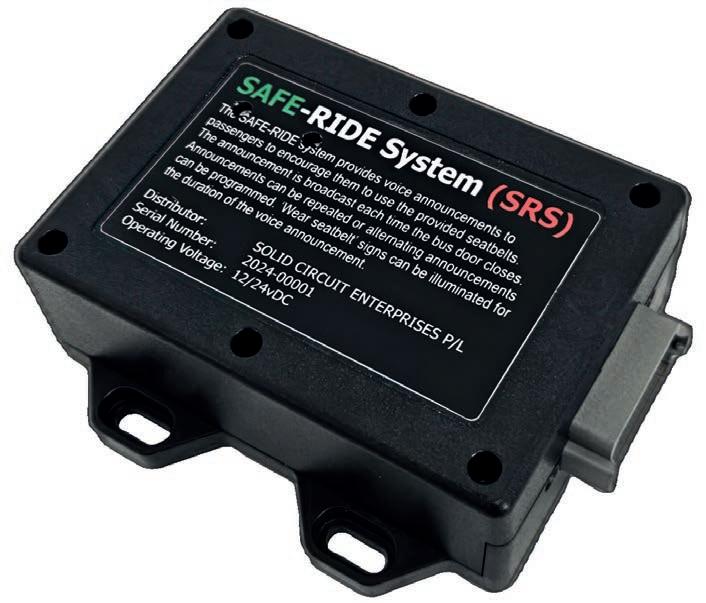
the speed of installation and the retrofittable nature of the product. There’s no need to change the infrastructure of the bus nor buy any other accompanying products – once retrofitted, it fulfils any requirements associated with ADR68.
The flagship retrofit system for seatbelt compliance starts when the doors on the bus open and a visual ‘fasten seatbelt’ sign turns on, before an audio message plays to remind passengers to buckle up when the doors close and the ‘fasten seatbelt’ sign then stays on for a period.
“The illuminated signs can be made to order, although we have two standard sizes that have proved to suit all applications to date,” McHatton says.
“We designed Safe-Ride before we were aware of ADR68/01 prescribing similar features. As we had already designed the platform, there were only minor changes required to meet the new standard.
“As our system was designed specifically for ease of install, we have designed the system as plug and play. As we also do, we have added additional options such as an announcement on ‘door open’. This allows coaches to have a welcome message as passengers board if they so wish.”
In an industry where safety is paramount and compliance is critical, Solid Circuit also has a range of other products designed to enhance
safety across bus and coach fleets. Alongside the Safe-Ride is its Safe-Check, Safe-Brake and Safe-Alert models that address a critical aspect of vehicle operation and safety compliance.
The Safe-Check system prompts drivers to complete a final check of the bus to ensure there are no sleeping children or passenger items left behind. The latest evolution of the Australian designed system also retrofits into existing vehicles and carries the same reliability as the newer Safe-Ride, being MP3 tailorable and user specific.
The Safe-Brake system addresses the issue of bus rollaways, monitoring the park brake, ignition and seat belt statuses. Using these
An external alert also warns people close by of any possible danger – on some buses the system goes so far as to apply the brake in an interim measure, protecting passengers, pedestrians and property from rollaway incidents.
The final major key of Solid Circuit’s arsenal is the Safe-Door NTS-160 – a bolt-on solution that allows existing bus OEM door systems to be compliant with New South Wales’ Transport Roads and Maritime Services Technical Specification TS-160 for bus door safety systems. Consisting of an ECU, voice module and data logger, as well as a driver’s door override switch and maintenance override switch, the NTS-160 uses the bus body OEM’s door signals and entrapment sequence to control chassis OEM-supplied interlocks to meet the specific functionality requirements of the standard.
Outside of this plethora of safety systems that it’s developing, Solid Circuit has also been working with wireless seatbelt monitoring system provider BuckleMeUp to add occupant sensing to its range of capabilities. With a prototype in action, the local company is looking to continue developing and enhancing its expanding range of bus and coach safety products.
“Solid Circuit is proudly Australian-owned and operated, with all systems engineered to meet local standards and vehicle conditions,”

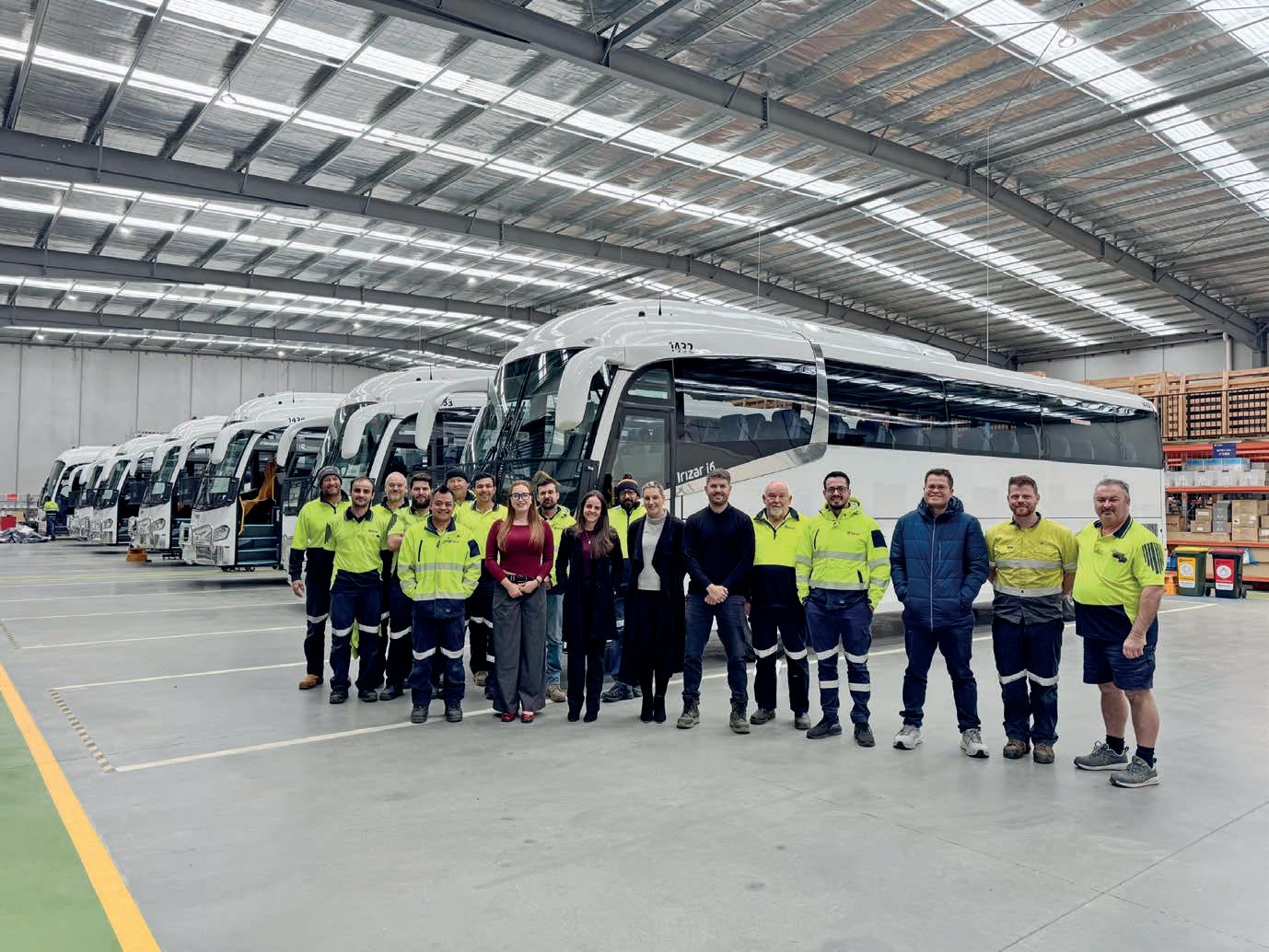
Irizar is making waves under TfNSW’s Panel 4 contract, with quality builds, repeat customers and a team that goes the distance
Irizar is quietly making a big impact on New South Wales’ school bus network, steadily building momentum under the Transport for NSW (TfNSW) Panel 4 procurement program.
In recent months, the manufacturer has delivered 16 high-floor i6 3700
It’s a notable milestone, not just in terms of numbers, but for what it represents for the industry’s growing trust in Irizar’s product, aftersales support and internal team. The buses delivered under TfNSW Panel 4 are all Irizar’s i6 3700 model. While commonly associated with
Below: There is a large and dedicated team working behind the

“The i6 3700 is a workhorse and has proved itself in many applications and remote areas,” Irizar Asia Pacific managing director Steve Heanes told ABC.
“We’ve worked hard to really position the product into the TfNSW panel contracts. As we all know, it’s the highest spec and has the most stringent supply conditions for a school bus in the country.”
Meeting those conditions is no small feat, with Irizar Asia Pacific sales manager Luke Eldred telling ABC to meet school bus standards requires thorough understanding and constant communication with sub suppliers and, ultimately, the customer.
“We’ve got to be very careful, with these being Panel buses, that we meet those requirements,” Eldred says.
“It’s definitely a matter of reading a lot of the literature that comes with Panel 4 and making sure we’ve ticked everything off on the specification list.”
The TfNSW Panel 4 buses are designed and manufactured with a long operating life in mind, as per the specifications. In order to achieve this, all i6 3700s delivered under the Panel feature a stainless-steel frame,

fire-retardant materials throughout, compliant seatbelted seats and safety enhancements such as CCTV and fire suppression.
“The vehicles have to last for a very long time,” Eldred says.
“All materials that are used in the vehicle are also slightly different to our standard school bus. That includes different types of flooring and seat materials to keep the flame retardancy down.”
The buses also include practical additions like a rear engine bay fire extinguisher access hole, quick-fill refuelling setups and other spec items that suit a high-frequency, depot-based school bus.
“They’re more urban-bus specs modified for a school bus,” he says.
“It can take up to three weeks for all of the content to be fitted.
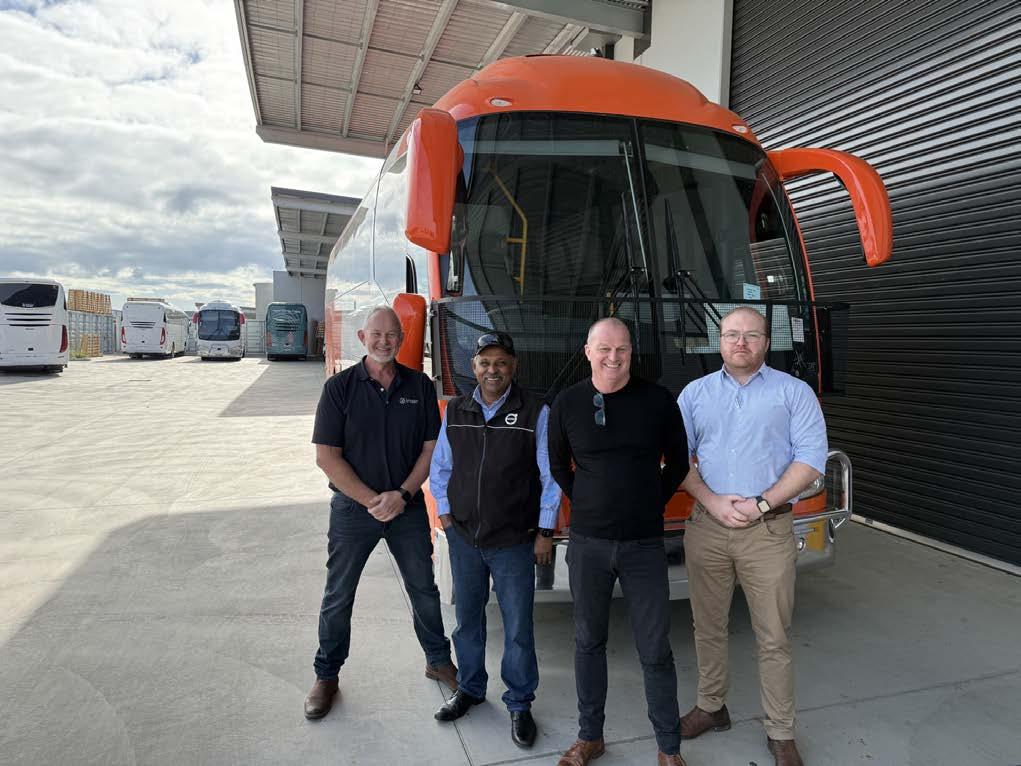
“This includes the fire suppression, seats, CCTV, destination signs, school bus license signatures and signage, all of the stickers, coat hooks, everything.”
All of the local content items are fitted at Irizar’s Pakenham factory in Victoria. This process involves a large and dedicated team working behind the scenes, including workshop crew, spare parts department, operations and even the admin staff. Everyone plays a vital role in making sure each delivery is completed successfully.
With multiple TfNSW-approved suppliers on the panel, earning repeat business is a powerful endorsement, and Irizar is seeing exactly that.
“Irizar has been supplying to CDC in other states and this business partnership in our eyes has worked well with the product meeting their expectations and also our aftersales support when needed,” Heanes says.
“Apple City has been a long-term customer of Irizar and more so a partner. John Woodhouse has forged relationships with Irizar staff and has come to trust these relationships and more importantly our product.”
Repeat customers like these don’t often happen by chance. Irizar’s pre-delivery and quality control process has evolved significantly over the past few years, driven by experience and customer input.
“What we have to remember is
that buses are hand-built by people and these people can have different skillsets, views and impressions, so it’s important to have processes in place that can mitigate these issues and deliver a vehicle that is of the highest level,” Heanes says.
He says that some recent customer audits of the TfNSW Panel buses found fewer than five faults per vehicle.
“To me, that is the testament of a team that is focused on delivery and providing the best possible product to our customers.”
While much of the industry conversation rightly focuses on vehicles and specs, Irizar’s growing success under TfNSW Panel 4 is as much about its people as it is about its product.
“Our success is driven by the entire team, from the salespeople to the blue-collar staff in the factory, to the field staff and the managers,” Heanes says.
“They all understand their roles and that, unless they work together, Irizar won’t be successful and won’t meet customer expectations.”
Looking forward, Irizar is continuing to develop its next-generation product line, with many safety features to become standard. The company is also exploring alternate fuel options to align with TfNSW’s emissions targets.
And while deliveries are important, Heanes says Irizar’s strategy is about building lasting relationships and ensuring long-term support.
“With any sort of government contract, it’s about security and longevity,” Heanes says.
“Even though NSW works under a panel, it’s still an open market for the approved suppliers to compete. So we have to demonstrate to operators that we can support them and that we’re in it for the long term.
“I think government sometimes forgets that building and delivering the bus is probably the easiest part, but selling and supporting the product for years afterwards is the hardest.”
That long-term thinking seems to be paying off. With operators delighted, quality processes tight, and more deliveries on the horizon, Irizar is proving that in a market where the stakes are high and the contracts are complex, consistency, care and commitment still win the day.
“If you miss a deal in the bus world, it can be 20 years before you get another shot at replacing that particular bus,” Heanes says.
“You have to make every contact, interaction, response and action count with a customer as they can be few and far between if you’re not focused.”
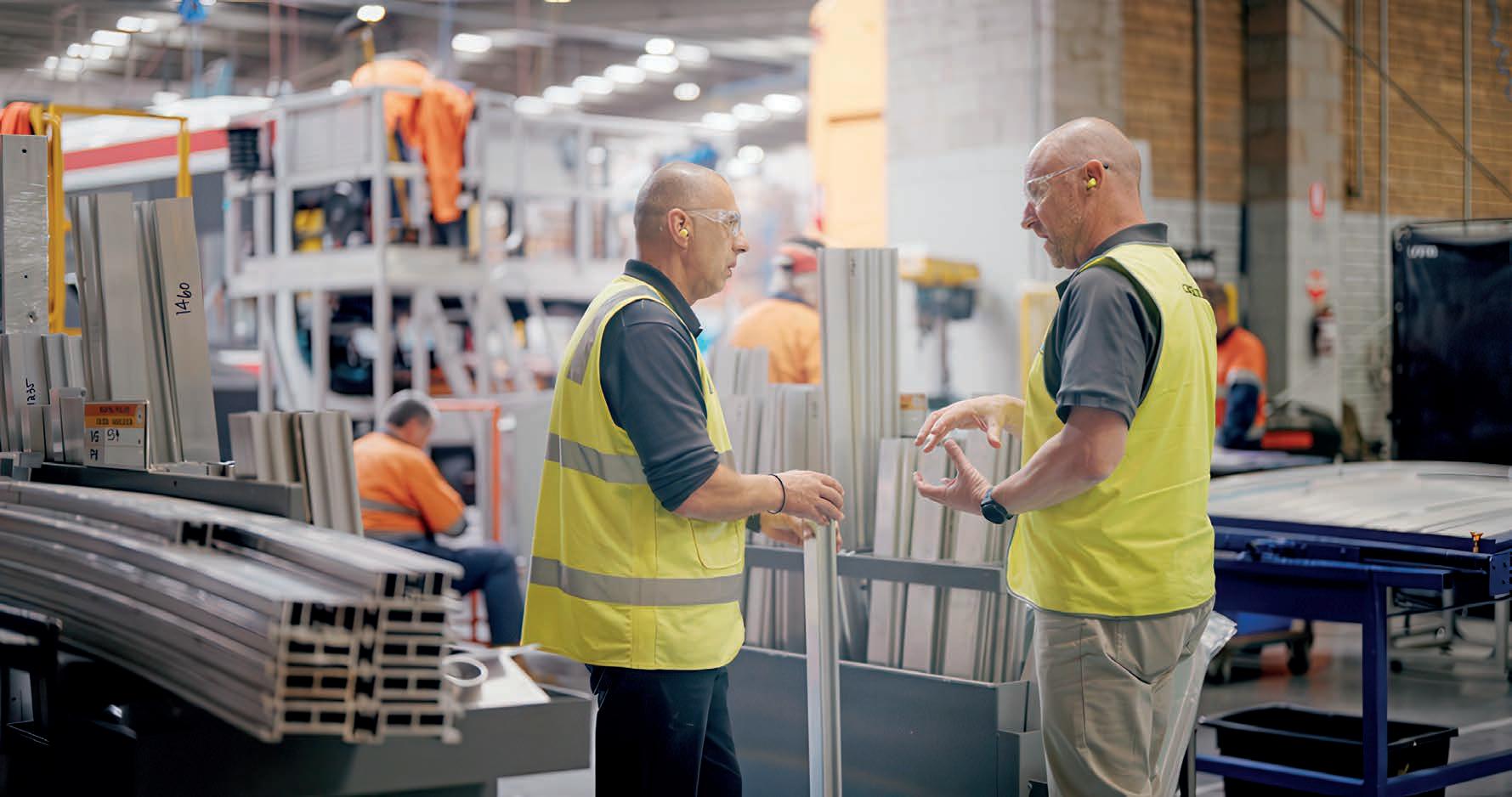
The importance of Volgren’s local supply partnership with Capral for aluminium is coming to the fore for major Australian operators looking to secure long-term fleets
What does ‘local’ really mean for the bus and coach industry in 2025?
Is it about where a vehicle is built? Where the parts are sourced? Or the people who design, test and maintain it?
As the conversation picks up speed and more mandates are handed down regarding the amount of local content required in bus builds, one thing is becoming increasingly clear – local content matters more than ever.
The push for local content isn’t just something operators and manufacturers are doing to tick a box or appease governments; it’s become embedded in their DNA.
Few examples bring this to life more clearly than the relationship between bus operator CDC Victoria, bus body manufacturer Volgren and aluminium supplier Capral Aluminium.
For CDC Victoria, one of the country’s largest bus operators, choosing Volgren as a preferred body builder was as much about the quality of the bus it provides as it was about geography.
“One of the first things that drew us to Volgren was that they were Victorian based, locally based,” CDC Victoria assets general manager Kaz Abdulrahman told ABC
“For us, it was incredibly beneficial that our partnership would aid in benefitting the overall community by creating jobs, supporting local manufacturing and keeping investment within the state.”
Abdulrahman says the operator is proud to play a part in an entire ecosystem of people and businesses that rely on strong, sustainable manufacturing partnerships.
“When we work with Volgren, we know we’re supporting a network
of local suppliers, workers and their families,” he says.
The benefits of local content also apply when faced with global disruption on supply chains.
“Having the products made locally is absolutely an advantage,” Abdulrahman says.
“Yes, there are still some parts that come from interstate or overseas, but having strong local partnerships means suppliers like Volgren can navigate these disruptions.
“That gives us the flexibility to respond quickly when things change.”
The other selling point for CDC when it came to choosing a preferred supplier is down to the build quality of Volgren buses. Drivers and workshop staff across the CDC network have grown familiar with the manufacturer’s models and standards, making the transition between vehicles smoother and the feedback consistently positive.

“In fact, our staff actually have a preference for Volgren buses,” Abdulrahman says.
“There’s an immediate reaction in terms of the quality and how the bus is built and structured as compared to everything else.”
That reputation for consistency and reliability is underpinned by Volgren’s long-standing partnership with Capral Aluminium, who play a pivotal role in producing the lightweight custom extrusion used to construct the durable frames Volgren is known for.
Capral has been Volgren’s principal aluminium supplier over the past 15 years, helping the bus manufacturer and the operators that it supplies to not only support Australian manufacturing, but meet local supply requirements tied to government contracts as well.
“In our new contracts, like the Melbourne ZEB franchise, it is an expectation and a clause that we meet a certain percentage of local supply,” Abdulrahman says.
“That’s why we’re confident with Volgren. The relationship Volgren has with Capral ensures we can quite easily meet that local supply agreement.”
This confidence extends to Volgren’s electric offerings, with the Capral/Volgren partnership ensuring the weight of the bus bodies won’t interfere with the mass of battery systems.
“Having the aluminium frame was extremely helpful,” Abdulrahman says.
“There wasn’t much sacrifice in terms of passenger capacity because of the additional weight of the batteries.
“Batteries aren’t getting lighter but using that frame meant we could still meet all of our minimum vehicle and passenger requirements.”
Back in April this year, Capral jumped onboard the Australian Made campaign, positioning itself as a proud Australian manufacturer and leader in ethically sourced aluminium.
Capral qualifies as “Australian Made” because its aluminium extrusions are designed, manufactured and finished entirely at its facilities across Australia at six manufacturing sites strategically

located in Queensland, New South Wales, Victoria, South Australia and Western Australia.
“Joining the Australian Made campaign was an exciting step for Capral. The logo is widely recognised and carries a strong message about supporting local industry. We are proud to display it on our Australian-made extruded aluminium products,” Capral CEO Tony Dragicevich says.
“At Capral, we value the campaign’s mission, and we know how much this initiative means to our customers, many of whom are Australian manufacturers themselves and who actively choose to support Australian manufacturing.”
In terms of process, Capral sources primary aluminium and uses the largest extrusion facility in
Above: Capral has been Volgren’s principal aluminium supplier for at least 15 years. Image: Volgren
and build a cleaner future.
“These buses last up to 25 years,” Abdulrahman says.
“Even though contractually we’re expected to use them for around 18 to 20 years, they go well beyond that. And when we’re ready to decommission them, a large chunk of the bus is recyclable.
“It’s a win-win for durability and sustainability.”
As the bus and coach industry continues to adapt and transition, keeping things local has become more than just a trend.
Below: Capral sources primary aluminium and uses the largest extrusion facility in the Southern Hemisphere
Partnerships like the one between CDC Victoria, Volgren and Capral Aluminium prove that when you invest in local, you’re building something stronger, more resilient and built to last.

ways to reduce environmental impact
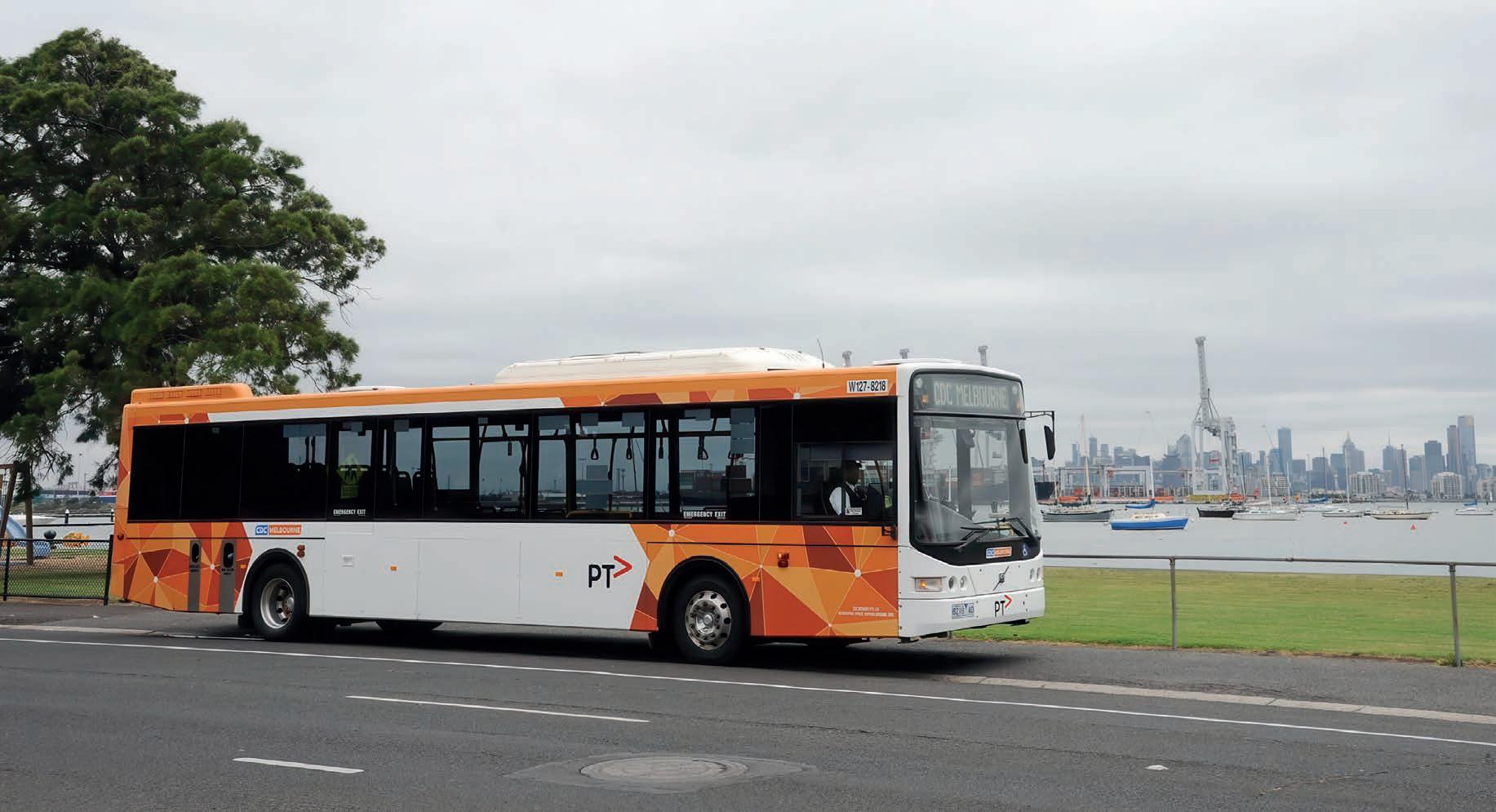
Victoria’s bus drivers are in the midst of a historic industrial standoff, pushing for better pay and conditions as strikes continue to disrupt services across the state
The wheels may have stopped turning, but the voices of Victorian bus drivers have only grown louder in recent months as a bitter industrial dispute continues to impact thousands of commuters across Melbourne and regional Victoria.
Since May this year, tensions have steadily escalated between major operators and the Transport Workers’ Union (TWU), resulting in multiple strike actions that have disrupted up to half of the city’s bus routes at a time.
What began as a push for fairer pay and conditions has snowballed into a high-profile industrial standoff. Here’s how the dispute unfolded.
May26-28:Talksturnsour
It was announced that bus services across Victoria were to be majorly disrupted on Wednesday May 28, with over 800 bus drivers at Dysons and CDC Victoria – two of the state’s biggest bus companies – going on strike.
Together, the operators run hundreds of bus routes and charter services and together, making up one-third of all routes across the state.
According to the TWU, at the time, both companies refused decent improvements on rostering, safety and pay, with over 95 per cent of TWU members endorsing the strike when it went to a vote.
“We’re standing together to lift the standard across Victoria’s bus network and improve wages, conditions and safety for every driver,” TWU Victorian/Tasmanian director of organising Sam Lynch said at the time.
Dysons said it had been negotiating “in good faith” with the TWU since January 2025 to reach a new EBA that benefits employees and the company. It said the TWU had “consistently rejected” the alternative wages and conditions offer that Dysons has presented.
The strike went ahead, with commuters in Melbourne’s north and west, as well as regional cities Ballarat, Mildura and Geelong being heavily disrupted.
On June 11, the TWU gave Dysons and CDC Victoria notice of its plan to take further protected industrial action for two consecutive 24-hour periods starting at 3am on Monday June 16.
“A second strike isn’t a decision we have taken lightly. We know the impact this will have on commuters and drivers who have already given up a fair day’s pay,” Lynch said.
“It’s time for these bus companies to get serious, meet with workers and come back with a deal that gives bus drivers the respect they deserve.”
Above: The union has not ruled out further action if the operators do not improve their offers.
Image: CDC Victoria
Dysons maintained their final offer to drivers that was first tabled in March. The proposal included a minimum 13 per cent wage increase over three years for metropolitan drivers with a nine per cent increase occurring in the first year. This would then be followed by CPI or two per cent rises, depending on which is higher, in subsequent years.
CDC Victoria’s offer was less clear. A CDC Victoria spokesperson said the operator remained committed to continuing the Enterprise Bargaining Agreement discussions in good faith and working collaboratively with the TWU and workers to reach a fair and reasonable resolution.
The TWU announced it wasn’t ruling out further industrial action until CDC and Dysons moved on their claims.
Oneagreementisreached
While CDC remained locked in dispute, Dysons believed that its final offer tabled in March was a fair one. It proceeded to go to a vote on June 13 in the hope of immediately providing a wage uplift to employees and preventing any further impact to the communities it services.
Ultimately, the proposed EBA was voted up by Dysons employees, immediately removing them from ongoing strike action, and services continued unaffected.

Dysons managing director and CEO
Andrew Jakab spoke after the result.
“We’re pleased that in a choice between more unpaid strike action and a guaranteed immediate wage increase of nine per cent, with a minimum 13 per cent over three years, our employees chose the latter. The offer is the most competitive in the industry and, with its acceptance, will deliver immediate financial benefits to drivers who have already lost close to $2,000 in higher wages since April 1 when the agreement could have taken effect,” Jakab said.
“With an agreement reached, we look forward to continuing to deliver Victorian public transport and charter bus passengers the high-quality services they have come to expect, and for which we are grateful to our drivers and broader Dysons workforce for consistently delivering.”
Sam Lynch said that while the Dysons agreement fell short of what the union would have liked, members should be proud of the progress made.
“The fight to lift pay and conditions across Victoria’s bus industry is not over yet,” Lynch said.
“Negotiations are ongoing at CDC, and the TWU will not stop until we have secured real improvements to pay and conditions for every driver. We’re putting CDC and the entire bus industry on notice.”
A second 24-hour stoppage occurred for CDC Victoria services on June 16.
June30-July01: Thirdroundofstrikes
Bus drivers for CDC Victoria doubled down when it came to negotiations, announcing a third strike to place pressure on the bus operator.
Kicking off on July 1, the industrial action saw bus routes and charter services in Ballarat and Geelong halted, with severely disrupted services in Mildura and Melbourne’s south, north and western suburbs.
The TWU said CDC Victoria’s proposal fell short on workers’ core demands, including drivers’ safety, improved working conditions and fair pay.
“For the hard work that we do,
the current offer is a definite slap in the face,” CDC Tullamarine union delegate Jason Holmes said.
In response, CDC Victoria insisted it was committed to reaching a resolution that balances drivers’ needs with the sustainability of the business.
“CDC Victoria is committed to reaching a fair and reasonable enterprise agreement that strikes an appropriate balance between addressing driver and industry-wide concerns, while ensuring our business remains sustainable,” the company said in a statement.
“CDC Victoria’s current offer is well above the current inflation rate and will ensure our drivers continue to be paid more than 25 per cent above the equivalent modern award wage rates.
“CDC has further committed to other matters aimed at addressing driver concerns and to provide improved conditions, including on rostering.”
A fourth round of bus driver strikes was held on July 10, with around 1,600 drivers taking protected industrial action.
With the enterprise agreement negotiations still ongoing, drivers from CDC Victoria and Kinetic went on strike for 24 hours before convening at Parliament House in Melbourne’s CBD to rally.
The action was the first for Kinetic’s drivers this year in Melbourne.
Kinetic executive general manager for Victoria Graham Smith said the company had made a fair and comprehensive offer that would keep its drivers the highest paid in the state, including a base rate of $39.03 per hour, generous penalties and allowances and CPI-linked wage increases.
“We are deeply disappointed that the Transport Workers’ Union has chosen to take strike action when we have made a fair and comprehensive offer that would see our drivers continue to be the highest paid in Victoria,” Smith told ABC
“Given the significant gap between what the TWU is demanding and what we can reasonably offer, we have filed
with the Fair Work Commission for independent third-party mediation.
“We believe this is the responsible and fair way to work through this dispute.”
In response to its fourth strike, CDC Victoria said it is committed to listening to its workforce, minimising disruption for passengers and maintaining reliable services across the network.
“CDC Victoria remains committed to working collaboratively with the TWU and our employees to reach a fair and reasonable outcome that achieves a balance between addressing driver and industry-wide concerns while ensuring our business remains sustainable,” the company said.
“We have also sought the assistance of the Fair Work Commission to facilitate the negotiations.”
Whathappensnext?
With Dysons now operating under a fresh agreement and CDC and Kinetic still stuck in a back and forth with the TWU, industrial tensions remain high at the time of publication.
While no new strike dates have been announced at the time of publication, the union has not ruled out further action if the operators do not improve their offers.
“TWU Members have undertaken the biggest bus strike in Australia’s history in the fight to improve pay and conditions,” Lynch told ABC
“We’re speaking with bus operators CDC and Kinetic about getting a fair deal for drivers.
“The current offers from highly profitable, foreign-owned bus companies include wage increases as low as two per cent. This could send drivers’ pay backwards in real terms, year after year.
“Union members are considering further industrial action if we don’t see progress soon.”
Kinetic says it is still working towards a solution.
“Kinetic has engaged in independent mediation via the Fair Work Commission and will be putting an offer out to vote following this process,” a Kinetic spokesperson told ABC
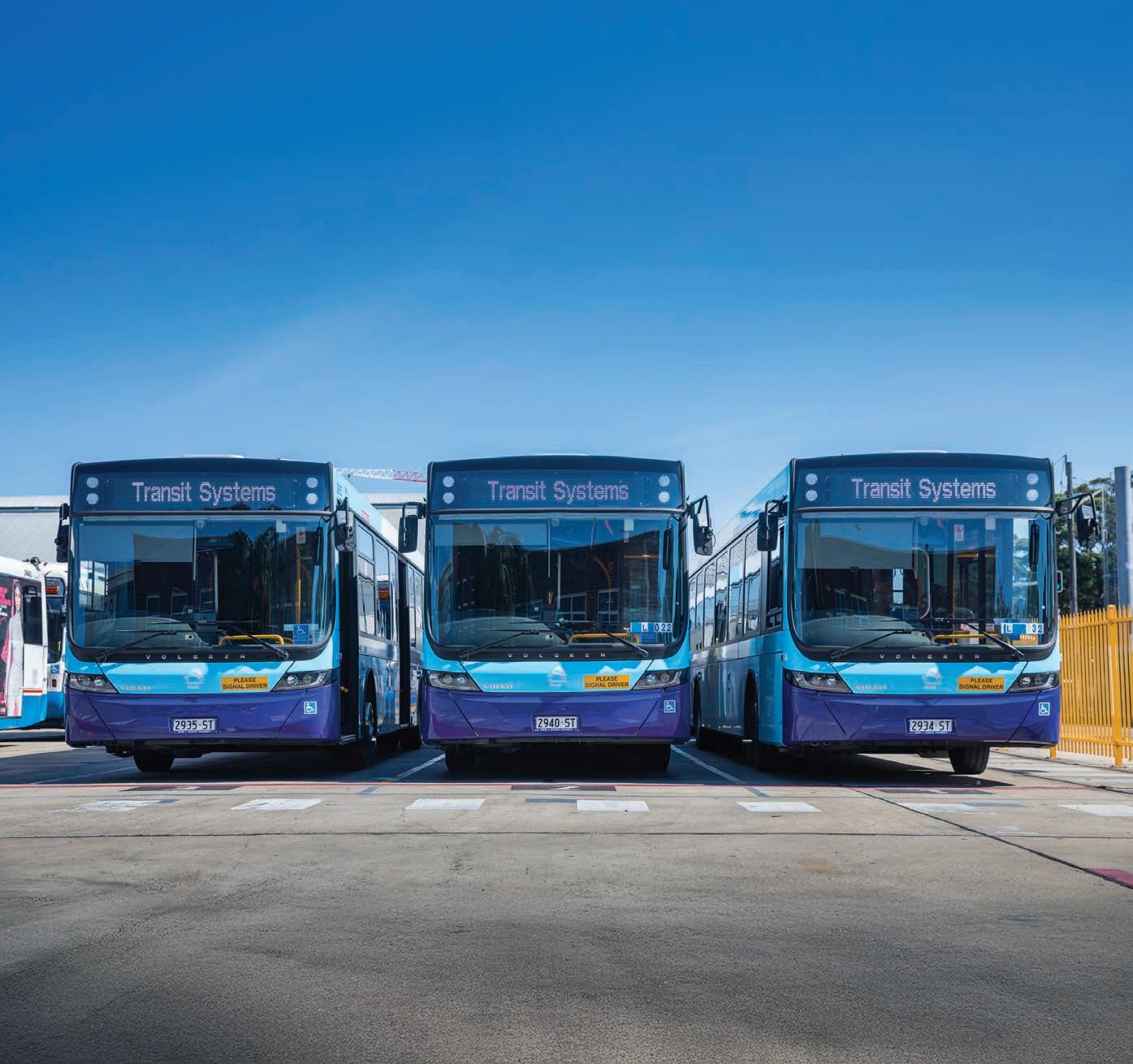
With nearly half a century spent in and around public transport, Rino Matarazzo is ready to evolve bus services as the new managing director of Transit Systems in NSW
Like many passionate members of Australasia’s bus and coach industry, Rino Matarazzo’s affiliation with buses goes back much further than his professional career. One of his fondest earliest memories is travelling to and from school on buses run by the fabled Calabro and Bosnjak families in south west Sydney.
“I still remember passing the farmland where Bosnjak buses were based,” he told ABC
“It was a pleasure to be able to watch the company grow over the years into what became Westbus and Hillsbus.”
These foundations dripping in the
rich history of both New South Wales and Australia’s bus history set the scene for Rino’s own emerging career in the sector. In May, he was unveiled as the new managing director of New South Wales at multinational transport operator Transit Systems.
It’s the culmination of a journey that started with a passion for buses and quickly evolved into a growing career within the industry.
“When I officially joined the bus industry, I had the privilege of working alongside people who were part of those original family-run companies,” Rino says.
“Their deep knowledge, passion and dedication to the industry were
Above: Transit Systems NSW is looking to grow with a new managing director appointed
inspiring, and it felt like I was stepping into a legacy built by generations of hard work and community service.
“That experience made me feel incredibly proud to be part of this amazing industry – one that’s not just about moving people, but about connecting lives, building communities and preserving a rich local history.”
Now, Rino brings more than 40 years of experience within the public transport sector to Transit Systems’ NSW division. More than five of these years have been spent specifically within the bus industry, returning to the roots that fuelled his career.
Throughout his entire journey to

date within the Australian public transport sector, Rino has based his work on delivering safe, reliable and customer-focused transport solutions. By leading initiatives that have improved safety standards, strengthened operational performance and enhanced the delivery of contract bus services, Rino is most driven by engaging with frontline teams, listening to customers and building strong relationships within the community.
“I’m honoured to step into the role of managing director in NSW – this journey has given me a deep appreciation for the people who keep our services moving and the communities we serve every day,” he says.
“I believe the values of collaboration, accountability and continuous improvement are essential to leading effectively in our industry.”
It’s a position that has been years in the making for Rino and the Transit Systems NSW team. In a “natural next step” for Rino in his career, he sees the role as the culmination of an apprenticeship in the bus industry – one built on years of learning, listening and leading. A few years ago, Rino decided to try and truly understand the daily challenges and roles of bus drivers by getting his bus licence.
“It was important to me to experience firsthand what our frontline teams do every day. Every time I get behind the wheel, I feel a deep sense of privilege and pride,” he says.
“It’s a moment to put the phone away, focus on the road and reconnect with the core of our business – our people.
“Driving a bus has given me invaluable insight into the challenges and responsibilities our drivers face. It’s helped shape how I lead, how I support our teams and how we continue to deliver exceptional service to our customers and communities.”
But the appointment isn’t a time for Rino to stop and smell the roses. Instead, he’s jumped into the role ready to lead Transit Systems NSW forward. He’s doing so by focusing on
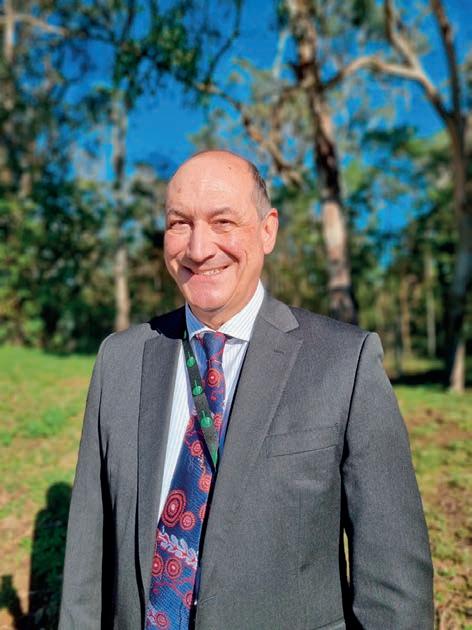
the ‘three S’s’ that are proving critical to the operator’s success.
It starts with safety – for the people, customers and all interacted with, while also relating to service and the satisfaction of teams, passengers, stakeholders and communities. By focusing on these ‘three S’s’, Rino is ready to ensure Transit Systems runs exceptional bus services for NSW passengers.
“These pillars guide everything we do. By listening, embracing technology and delivering innovative solutions, we can continue to raise the bar for public transport in NSW,” he says.
“I’m excited about the road ahead and proud to be part of an industry that connects people, supports communities and keeps our cities moving.”
His goal in the role is simple – to get people on Transit Systems buses and working smartly together to deliver exceptional services. But completing this isn’t as simple as it sounds –
Below: Managing the zero-emissions transition is part of Rino’s role at Transit
industry challenges mean Rino and his team have to overcome numerous issues to meet this goal.
From attracting the next generation of drivers to leading innovative outcomes, Rino is ready to work through challenges and allow Transit Systems to thrive in NSW.
“Across the industry, we face challenges but we are determined to encourage mode shift and do it efficiently,” he says.
“We see opportunities to evolve, innovate and lead with purpose.
“I believe in building a strong, sustainable business – one that balances performance with people and innovation with insight. That means listening closely, learning continuously and leveraging what we discover every day to improve how we operate and how we serve.”
In the meantime, Rito’s aim for the future is to add value in everything Transit Systems does in NSW. By pushing to be best in class, not just in service delivery, but in how the operator supports its people, engages with communities and innovates for the future, Rino believes the journey has just commenced for the operator.
“This journey will continue with purpose, passion and pride – I’m looking forward to the role ahead and am proud to be part of an industry that connects lives, supports communities and keeps our cities moving,” he says.
“I’m excited about the opportunities ahead and committed to working closely with our teams to keep raising the bar for public transport in NSW.”
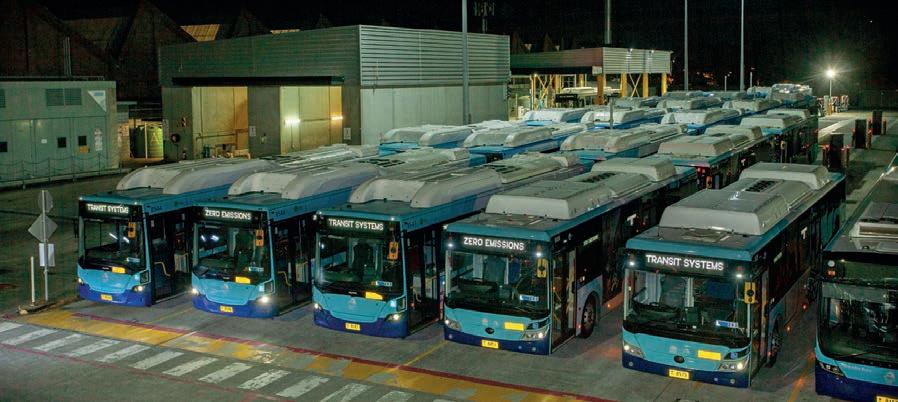
After farewelling long-held government contracts, Panorama Coaches is doubling down on its core strength by transporting thousands of students across metro and regional Victoria
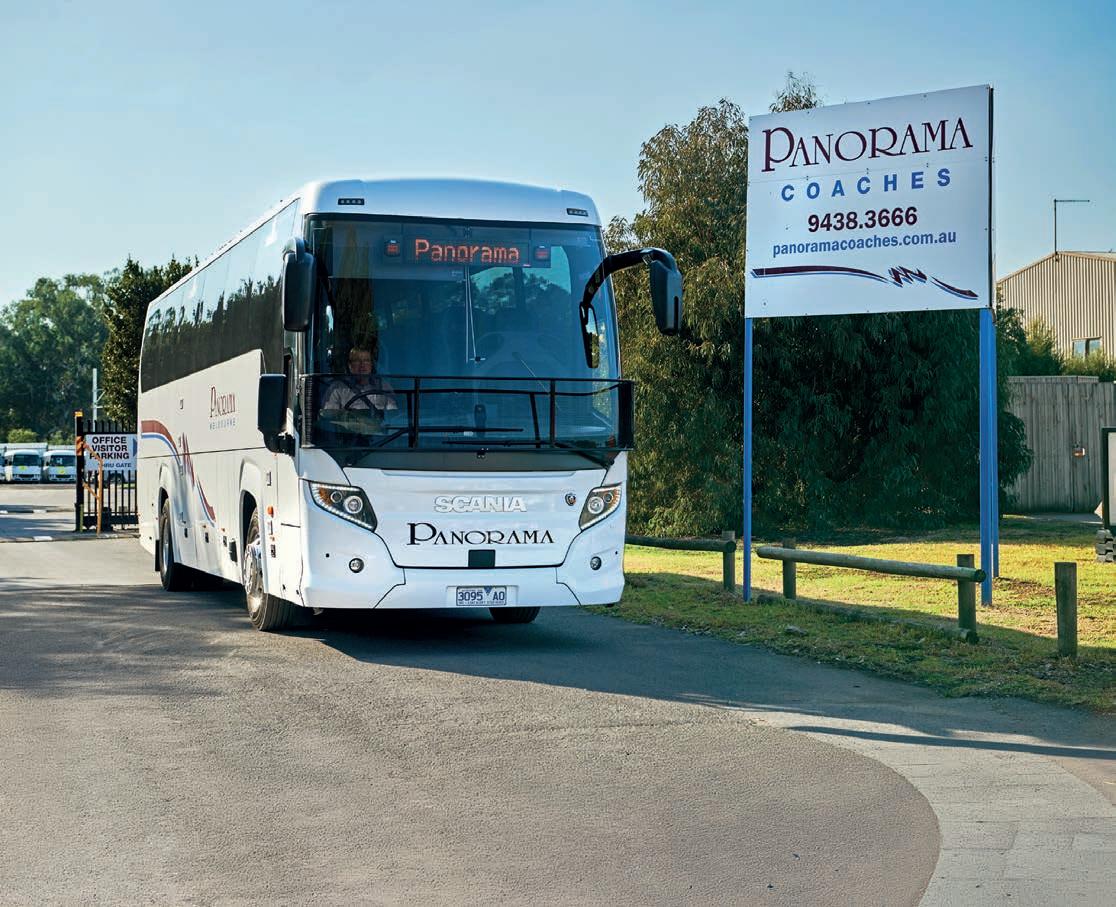
Panorama Coaches, based in Diamond Creek, north of Melbourne, lies in a green and lush natural environment where the bush meets the city.
Hurstbridge Bus and Coaches –trading as Panorama Coaches – has been part of the Dineen Group of Companies since Bill Dineen bought it from the local Clark family in 1990.
The Dineen Group operates 16 depots and around 900 buses in Victoria and New South Wales.
Panorama Coaches is the closest Melbourne metro-based depot and one of the largest fleet operators in the group, with 130 buses and coaches operating from Diamond Creek.
When the Dineen Group bought the business, it operated 45 buses and coaches and operated as Hurstbridge Bus and Taxi, operating four local route services and some contracted government services as well as Landmark Tours, which undertook safari work up to Alice Springs and Uluru.
Landmark Tours was discontinued
and instead the business took on private school runs and has assiduously developed that business.
In 2003, Panorama Coaches tendered and won Route 580 from Eltham to Diamond Creek and, in 2018, it tendered and won Route 343 from Hurstbridge to Greensborough. The five government service routes were handed back at the end of June 2025.
A dynamic part of the ever-growing Dineen Group of bus companies, Panorama Coaches has recently relinquished several long-held government low floor bus routes in the face of Victoria’s rush to zero tailpipe emissions.
The upside for the operator is more time to focus on developing further private and government school runs, with the operator currently providing 85 private and government-con tracted school runs twice daily and deploying 420 bus movements per day on charter.
Panorama Coaches general manager John Griffiths says it was a wrench to drop the route bus work,
but that the business could not justify the huge expense of installing sufficient recharging infrastructure to support the Victorian government-mandated switch to battery electric vehicles.
“Personally, I was a bit distraught after being here for 22 years and bringing two of those contracts on

and growing it from 16 staff and 14 buses to what we said goodbye to, which was 26 staff and 21 buses,” Griffiths says.
“Every staff member working that roster was employed by me over my 22 years here.”
He says 16 of the staff transitioned across to Dyson Group in Bundoora who will run the routes now, while two retired and the others will be redeployed within Panorama.
“I’ve employed them and seen them through all those years of growth with their families and enjoyed working with them over a generation, so yes, it was a sad loss for me personally,” he says.
“We investigated the electrification of the depot and discovered Diamond Creek had only enough power to recharge one bus a night, so we would need to put a $4.6 million transfer station at the top of the hill and another one in the corner of the yard, which would have cost around $15 to $20 million all up.
“We said goodbye to the route work, and very quickly turned the page to a new chapter of growth. We put 19 route buses on the market a year ago, and most have been sold, the ones we’ll keep will be used for rail replacement work and so on.
“Then we looked at growing the school runs, and we were fortunate enough to pick up three more government schools and purchased two depots in northern Victoria. We took over one of those on the first of July this year, we’ll take over the other one on the first of August. So that adds 17 government-contracted school runs to the business.”
At the start of 2024, Panorama Coaches acquired 12 new school runs when it took over services for Hume Anglican Grammar, which necessitated the purchase of 12 buses and the employment of 12 new drivers.
Since then, this school has expanded, requiring 16 school runs, with two more expected to come later this year.
The Panorama Coaches business is now thoroughly based around school runs, “moving the most precious cargo there is,” as Griffiths says.
In addition to the morning and
afternoon school runs and the trips to sports venues, the zoo, swimming pools and carnivals and outings, a lot of time is spent by the Panorama fleet shuttling children from all over north and eastern Melbourne and regional surrounds off to five camp grounds within Victoria: Phillip Island Adventure Resort, Camp Rumbug in Gippsland, Waratah Bay in Gippsland, Camp Coonawarra in Far East Gippsland near Sale and Camp Howqua up near Lake Eildon.
“We moved 160,000 students, parents and teachers to and from camps last year, using our fleet with some help from our sister companies in the Dineen Group,” Griffiths says.
“That’s a lot of movements and a lot of people to keep safe, happy and calm on the road.
“We like the DVD units in the Scania Tourings that allow the teachers to control the content, and it keeps the kids occupied.
“Importantly it keeps their heads up, which reduces the potential for travel sickness, which makes everyone happy. Having the DVD players in these buses is really important to us.”
Despite having offered a quiet and polite ‘thanks, but no thanks’ to the state government’s zero tailpipe route bus plans, Panorama Coaches is not discounting the role that low and zero emissions vehicles will play in the future.
“We look after some high-end Melbourne schools,” Griffiths says.
“Two of those have requested information and our plans to go lower emission or zero emission. And we’ve discussed with them the cost of hybrid being somewhere in the region of $300,000 more per bus on the road than the equivalent Euro 6. At the end of the day, we will look to share this increase across a number of clients.
“We are willing to look at anything and everything that could work for us, especially if it does not require a massive infrastructure cost at the depot. From our perspective, zero emissions is out of the question from a recharging perspective while we’re at this depot.
“Hybrid is a good option because they self-charge as they roll along the road. I’m interested to learn more about hydrogen fuel cell. I ran CNG buses at Bell Street Bus Company years ago, and that was a good option for us then.
“If four of the schools said they wanted to reduce their emissions, then we’d come up with a plan to offer them a solution to cater for their work, and the additional cost in their charter pricing.
“It would be up to our clients to say, ‘it’s important enough for us to pay you an additional 30 to 40 per cent on your pricing on every job to cover the initial capital outlay’. And then it would become a strong possibility.
“But right now, the reality and the environment solutions are quite far apart.”
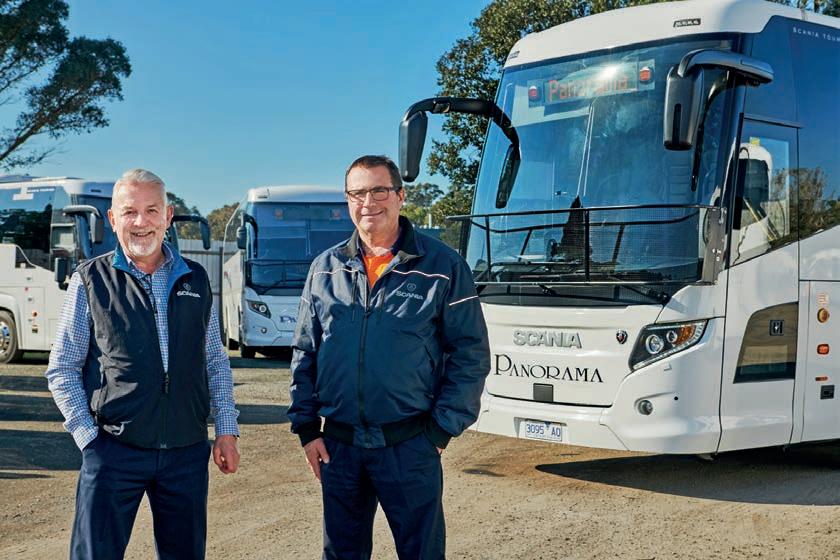
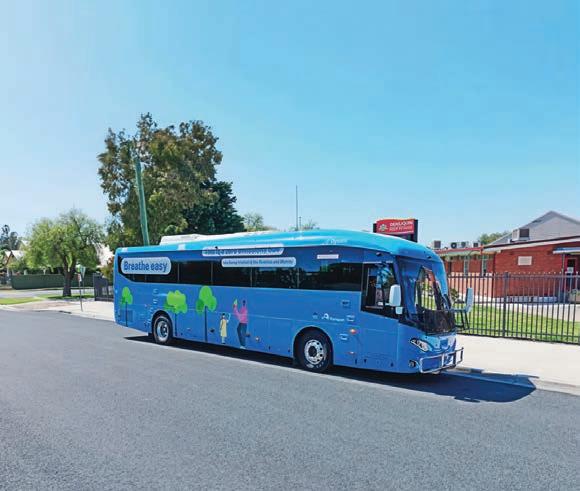
Passengers in regional NSW can finally access accurate arrival times, interactive maps, digital timetables and plan smoother journeys
Metropolitan areas.
“As someone who represents a regional community, I know how frustrating it is for regional commuters and public transport users who feel left behind when it comes to accessing real-time data,” NSW regional transport minister Jenny Aitchison says.
“No matter where you live in NSW, you deserve the same quality public transport experience.
keep services running on time.
It can also be useful in times of crisis or emergency, with bus operators on the NSW North Coast using the technology to cancel trips promptly and consistently during ex-Tropical Cyclone Alfred.
fitted out with GPS and automatic passenger counting technology, with passengers able to track their bus in real-time, get accurate arrival times and access digital timetables.
The smart technology system brings rural and regional NSW in line with Greater Sydney and Outer
“The Minns Labor Government isn’t just upgrading buses – we’re leveling the playing field and building stronger, more connected regional communities.”
The data from the new technology will also give Transport for NSW and operators the tools to improve operations management and help
“With more than 40 million regional bus journeys every year, every passenger deserves a smooth, reliable trip. These upgrades eliminate the guesswork, now you’ll know exactly where your bus is and when it will arrive,” Aitchison says.
“This is the Minns Labor Government building better communities and a better NSW, ensuring regional areas aren’t left behind but are equipped with the same world-class transport technology as our biggest cities.”
SkyBus travellers can now see exactly when their bus service is due to arrive and track live traffic conditions
Melbourne Airport travellers can now keep a close eye on their airport bus in real time thanks to new technology upgrades rolled out across the SkyBus network.
Digital screens have been installed at Terminals 1, 3 and 4, as well as at Southern Cross Station in the CBD, offering passengers live updates on when their next SkyBus will arrive right at the kerbside.
Onboard screens have also been introduced, giving commuters a clear picture of their estimated time of arrival and the latest traffic conditions while en route.
“These upgrades give passengers immediate certainty when they disembark from their flight,” Kinetic executive general manager Graham Smith says.
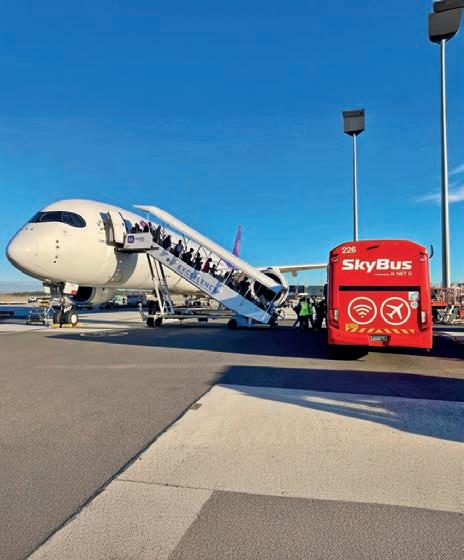
Above: Real-time tracking has come to SkyBus services. Image: Kinetic
live traffic conditions throughout their journey.
“This supports better travel planning and enhances the overall experience with SkyBus.
“We understand our service is often the first impression many visitors have of Melbourne, and we’re committed to continually enhancing the customer experience.”
SkyBus, a familiar sight for airport commuters, continues to run its affordable Melbourne Express service between the airport and the CBD from 4am to 1am daily, with buses departing every 10 minutes during the busy 7am to 7pm window.
For those bound for bayside suburbs, the Peninsula Express connects Melbourne Tullamarine Airport with St Kilda, Frankston and surrounding areas, operating seven days a week.
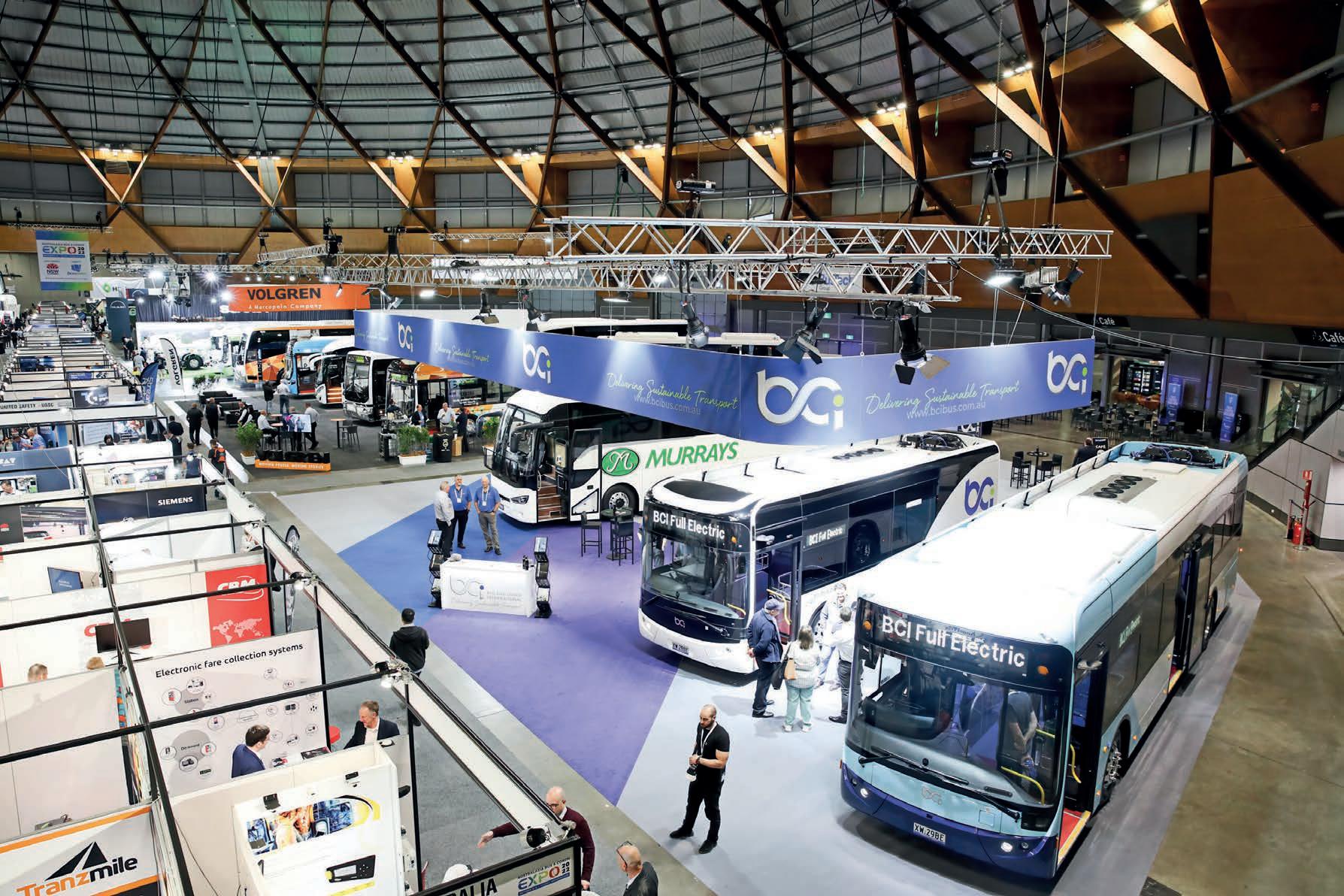
Be sure not to miss out on an opportunity to attend these fantastic in-person events
AUGUST
AUGUST 22
BusNSW NextGen Leaders Forum
SEPTEMBER
SEPTEMBER 11
QBIC Regional Forum – Gold Coast
SEPTEMBER 15-17
BCA Conference
OCTOBER
OCTOBER 1-2
BusNSW Member Conference
OCTOBER 4–9
Busworld Europe
OCTOBER 22
PTAANZ Annual Conference and Gala Dinner – Brisbane
OCTOBER 29-31
BIC National Conference – Perth
NOVEMBER
NOVEMBER 14–15
QBIC Regional and Partner Forum – Cairns
NOVEMBER 21
BusNSW Platinum and Gold Partners Luncheon
NOVEMBER 22
QBIC Christmas Function
DECEMBER
DECEMBER 1
BusNSW Xmas Function
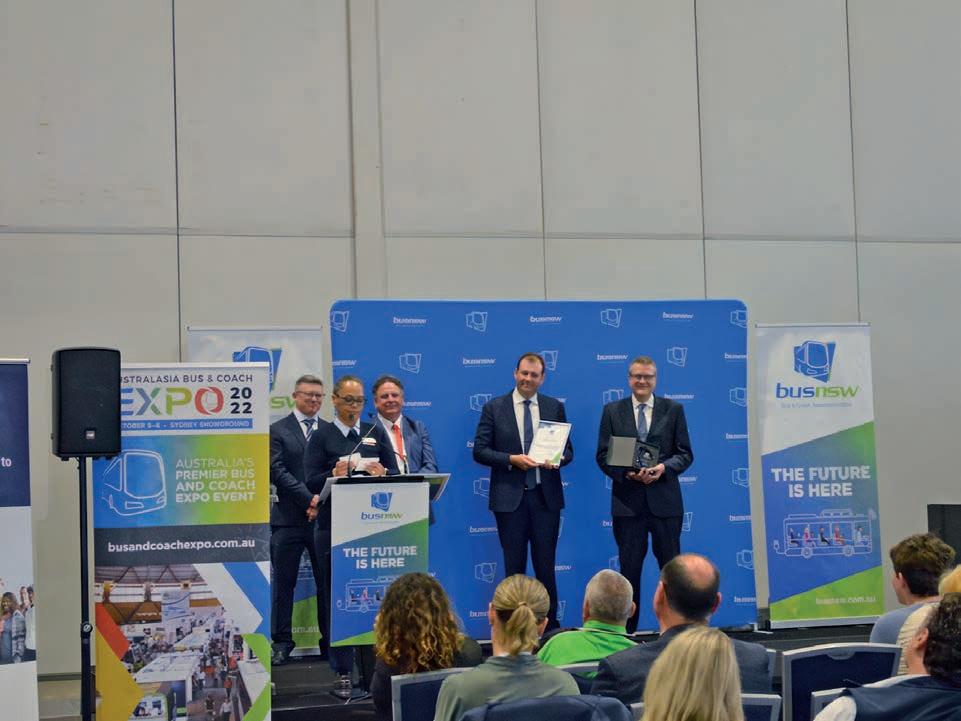
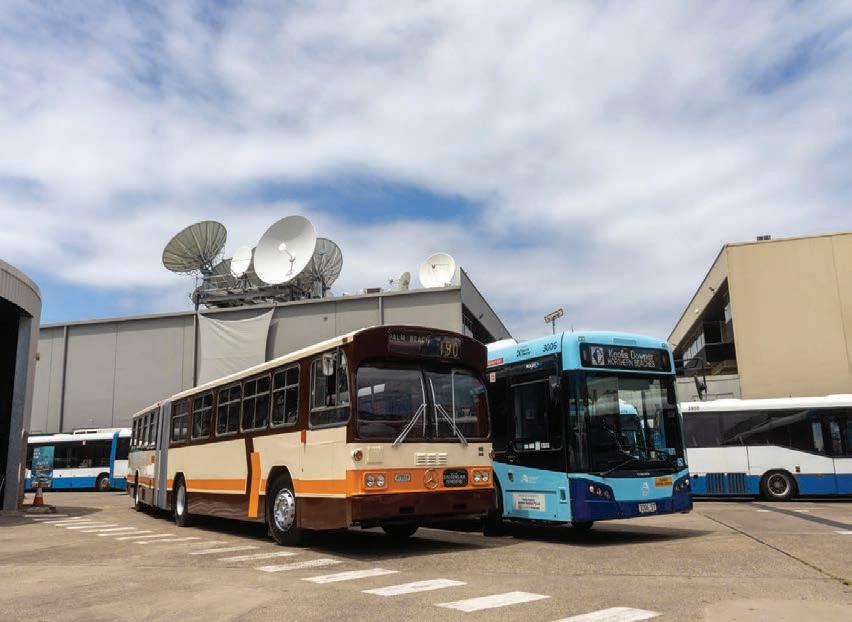
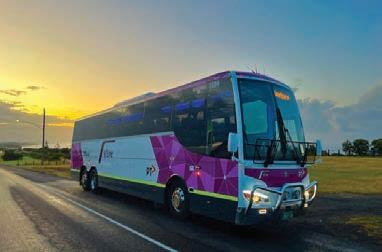


Send in your best bus or coach photos to feature in next month’s magazine.


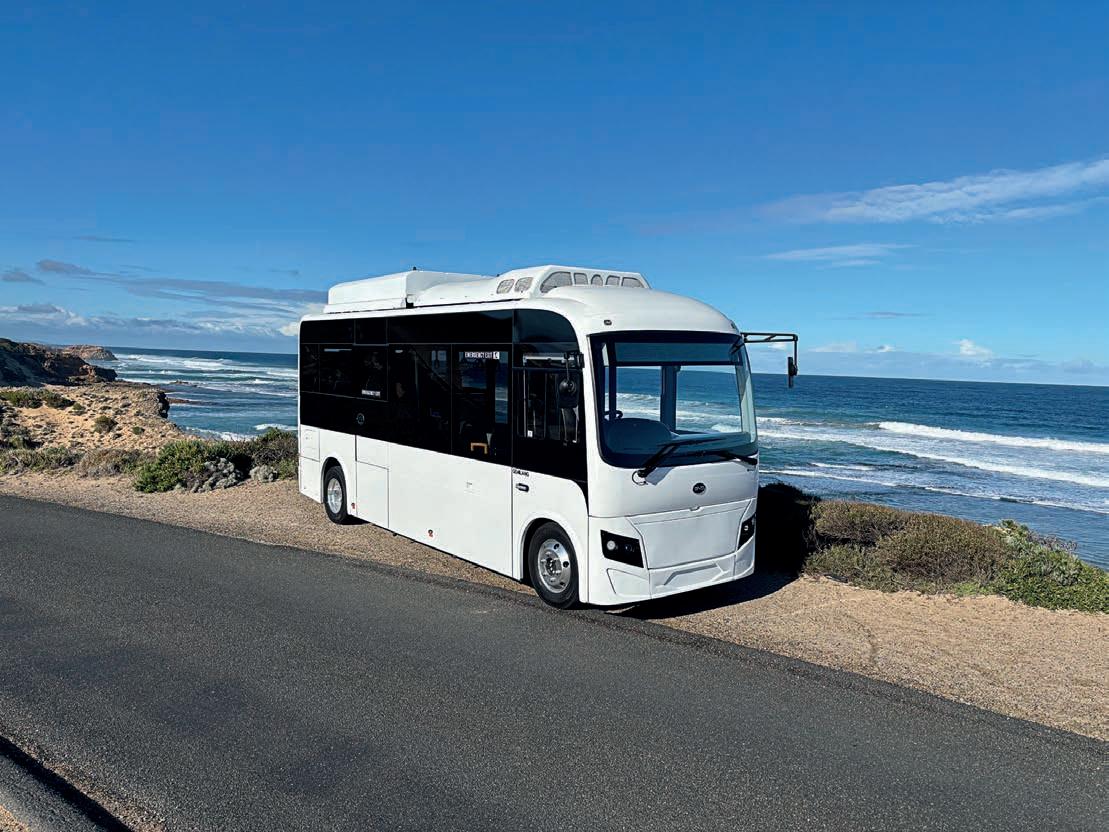
Andrew Nikolzev’s beachy shot of a BYD B70 has taken home gold for Best Bus August
Each month, the ABC Best Bus competition gives us a front-row seat to the creative ways bus lovers capture the industry.
Whether it’s a gritty depot shot, a golden-hour glow or a bus framed just right in the middle of nowhere, it allows those in the industry to dip into their creative side.
August’s entries took us on a ride from urban streets to remote bushland, proving once again that beauty in buses can be found just about anywhere.
For this month, our winner took us all the way to Parks Victoria, with Andrew Nikolzev’s stunning submission combining bus and beach.
It was a tough ride for Nikolzev to reach the top spot, with dozens of entries nipping at his heel at every turn.
Matthew Healey submitted multiple entries for the month of Red and White Coach Australia coaches traipsing all across the country. With city lights, bushland and bright sun each making an appearance, he was a formidable opponent.
Damian Shiambi was back once again in the ABC inbox, his stunning shot of a Ventura bus at Falls Creek highlighting the best of the best of bus photography, while Owen Hedley’s shot of a 1558 while on the Alpine Highway on the way up to the top of Mount Hotham was a sight to behold.
At the end of the day, however, Nikolzev‘s beachy snap took out gold.
“This image was taken while we were testing an EV BYD B70 down at the Parks Victoria Point Nepean National Park,” Nikolzev told ABC
As the winner of Best Bus August, Nikolzev has received a free 12-month subscription to ABC magazine, while the winning photo is also being shown off as ABC ’s Facebook cover photo for the whole of the month.
Don’t forget to send through your Best Bus photos for September and throughout 2025 via email and keep an eye on our Facebook page for more details!
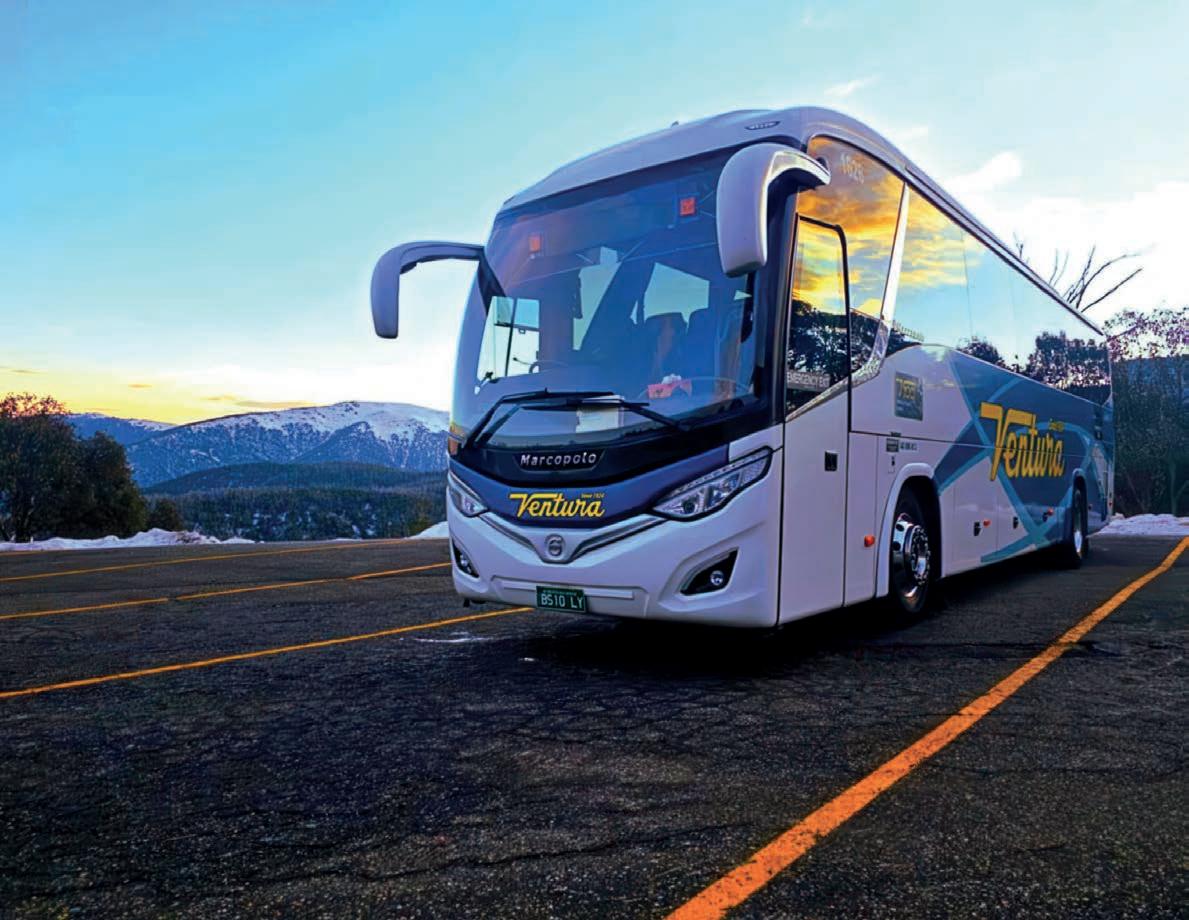

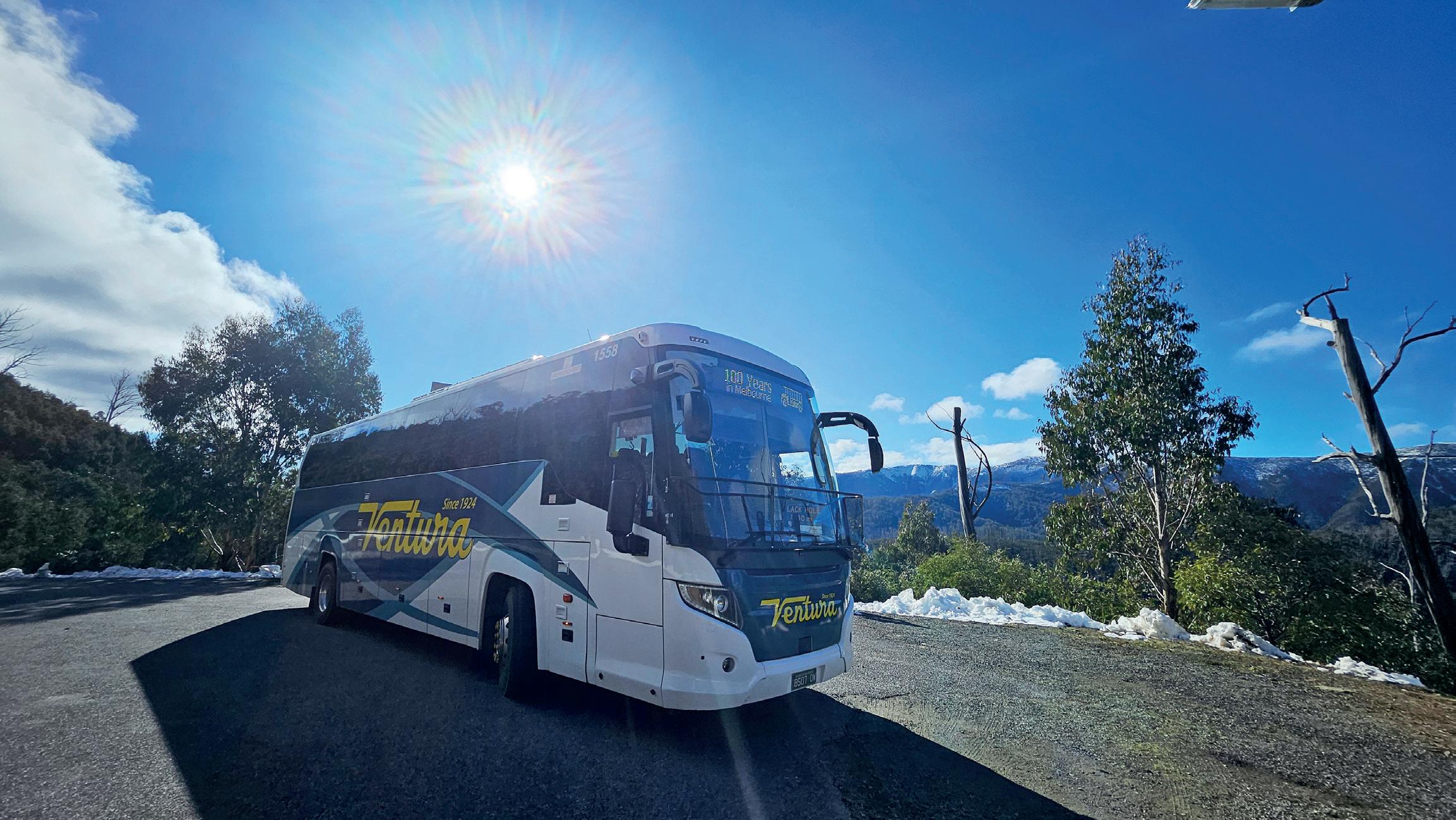


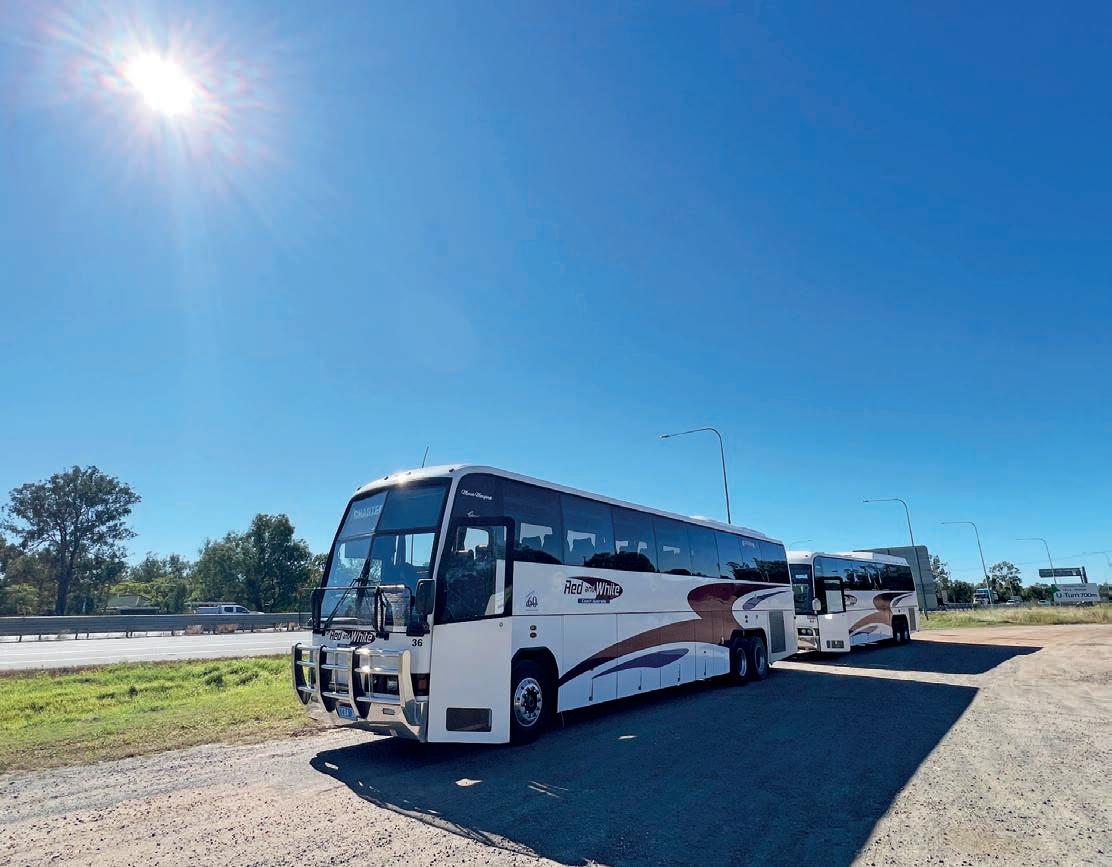
July’s bus and coach deliveries finally showed signs of a market slowing after reaching massive heights over the past two years
After such a buoyant first half of the year, the number of bus and coach deliveries in Australia have started to slowly come down. In July, ABC ’s deliveries data, sponsored by Kempower, saw 111 deliveries recorded, down from both June’s 157 deliveries and the mammoth 216 recorded in July 2024.
While Volvo’s numbers may have declined in July, it still sat comfortably atop the chassis market last month with 33 deliveries. Yutong, with its 11 heavy bus and eight light bus deliveries, maintained second place ahead of Scania with the 16 units.
Custom Denning and MAN shared fourth place with 10 deliveries apiece, with King Long claiming the next best spot with eight.
The bodybuilder market continued to belong to Volgren, with the powerhouse holding onto the lead despite a quieter month of 20 deliveries. Yutong’s combination of 11 heavy and eight light bus deliveries saw it rise in second place, with Irizar a clear third with 17 deliveries.
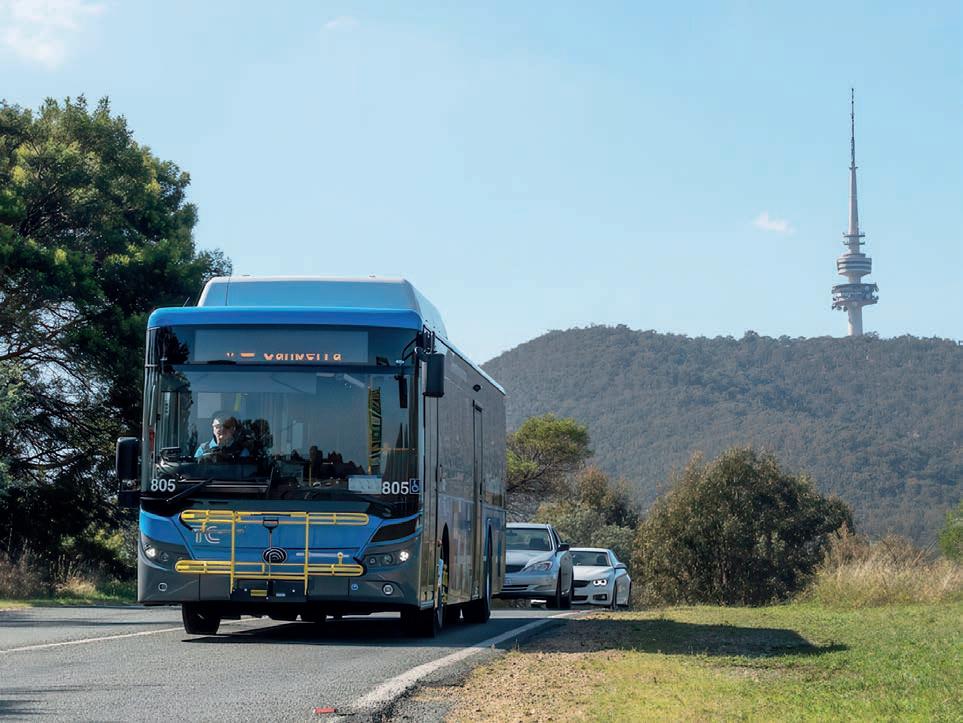
Custom Denning and BLK both recorded the 10 deliveries, with King
In yet another tight market, Coachair continued to lead the HVAC market as it scraped the win through 21 deliveries. Cling-Yutong sat second with 19 ahead of a pack that included Spheros (17), Hispacold (17) and Thermo King (14). From there, Valeo
Kempower’s modular DC fast chargers are powering electric truck and bus depots across Australia and beyond. Built for scale, engineered for uptime - and designed with real-life operations in mind.
Yutong continued to deliver into the ACT.
VDI Australia
In that space, Volvo (33), Scania (16) and Yutong (14) led the way. On the zero-emissions side, 20 electric buses held sway, with Custom Denning (10) ahead of both GTK and Yutong (five apiece).
Turn overleaf for comprehensive bus and coach delivery information for July.
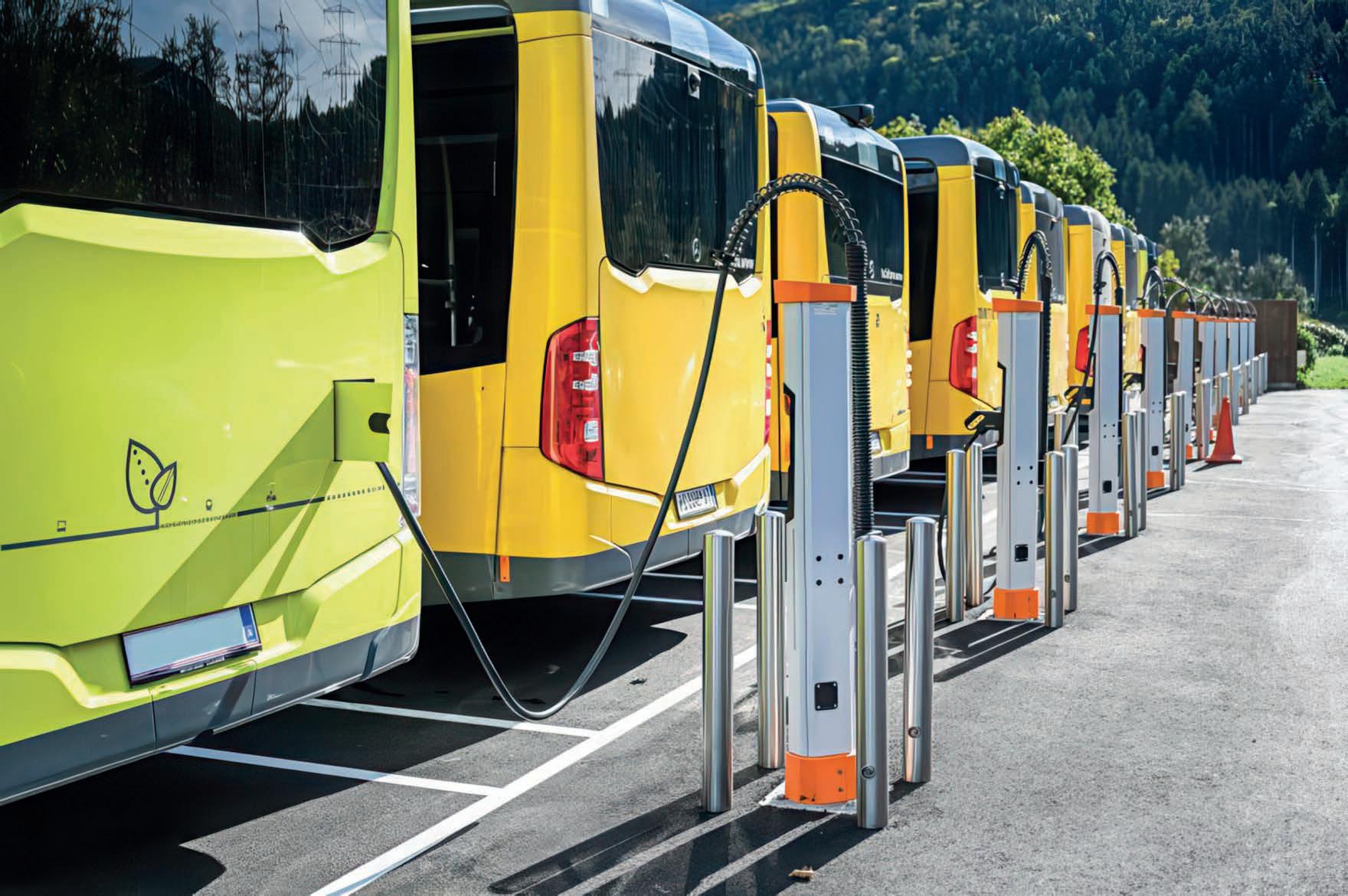

Discover more at kempower.com
The bodybuilder market continued to belong to Volgren, with the powerhouse holding onto the lead despite a quieter month of 20 deliveries.
The one market that recorded a clear leader in July was the seating sector, as McConnell romped to 50 deliveries last month. It was well and truly ahead of a peloton that featured Yutong (19), Sege (15) and StyleRide with 14 deliveries.
When it comes to the diesel and zero-emissions split, there were 91 of the 111 deliveries in the former’s camp. In that space, Volvo (33), Scania (16) and Yutong (14) led the way.
While Volvo’s numbers may have declined in July, it still sat comfortably atop the chassis market last month with 33 deliveries. Yutong, with its 11 heavy bus and eight light bus deliveries, maintained second place ahead of Scania with the 16 units.
BCIGullServicesVIC1BCICruiser10BCIME14t290REuro6 BCIGoWestToursWA4BCIFleetmasterBCIME18t315REuro6
BLKPrivateQLD4BLKBLKPresident10ME15t300REuro5 BLKPrivateQLD3MANBLKPresident2ME18.5t330REuro5 ChallengerBraidwoodBusesNSW1ChallengerCallibarChallengerME8.3t168FEuro5 CustomDenningGovernmentNSW10CustomDenningCustomDenningME18t400L:RZero KingLongMPCoachesServicesQLD1KingLongKingLongME18t400REuro6 KingLongMtGravattCoachandTravelQLD1KingLongKingLongME14t320REuro6 KingLongDiggersShuttleServiceQLD1KingLongKingLongME18t400REuro6 KingLongPeregianBeachCommunityCollegeQLD1KingLongKingLongME14t250REuro6 KingLongKineticQLD2KingLongKingLongME18t360REuro6 KingLongKineticQLD2KingLongKingLongME18t360REuro5 MANSurfsideBuslinesQLD4MANLE.19.330.RC2GlobalBusVenturesME19.5t330REuro6 MANMackayTransitCoachesQLD3MANIC.19.330.RR8BLKAutoME18.5t330REuro6 NexportNorthSydneyBusChartersNSW5GTKGTKME18tN/ARZero ScaniaB&GChristianVIC1ScaniaK320CB4x2NBCoachConceptsME19.5t320REuro6 ScaniaBraybonIndustriesVIC1ScaniaK320CB4x2NBExpressCoachesME19.5t320REuro6 ScaniaBrightonCoachNSW1ScaniaK370CB4x2NBScaniaHigerME19.5t370REuro6 ScaniaBrindabellaResourcesWA3ScaniaK320CB4x2NBIrizarME19.5t320REuro6 ScaniaDysonGroupVIC1ScaniaK320CB4x2NBIrizarME19.5t320REuro6 ScaniaEgginsComfortCoachesNSW1ScaniaK320CB4x2NBVolgrenMalaysiaME19.5t320REuro6 ScaniaMartinsTravelGroupAlburyVIC1ScaniaK320CB4x2NBCoachConceptsME19.5t320REuro6 ScaniaSGFleetAustraliaVIC3ScaniaK410CB6x2NBExpressCoachesME26.5t410REuro6 ScaniaSydneyBusesAustraliaNSW1ScaniaK370CB4x2NBScaniaHigerME19.5t370REuro6 ScaniaWarragulBusLinesVIC3ScaniaK320CB4x2NBScaniaHigerME19.5t320REuro6 VolvoCDCNSWHunterValleyNSW3VolvoB8RLEVolgrenME19t320REuro6 VolvoCDCRADQLD1VolvoB8RIrizarME19t350REuro6 VolvoCDCQLD-RockhamptonQLD1VolvoB8RLEVolgrenME19t320REuro6 VolvoBuswaysPacificNSW7VolvoB8RIrizarME19t320REuro6 VolvoDepartmentofTransportandMainRoadsQLD7VolvoB8RLEVolgrenME19t320REuro6 VolvoTransNorthQLD1VolvoB8RIrizarME19t350REuro6 VolvoEmeraldCoachesQLD2VolvoB8RIrizarME19t350REuro6 VolvoKangarooBusLinesQLD1VolvoB11RIrizarME26t450REuro5 VolvoWhiteHorseCoachesQLD1VolvoB8RVolgrenME19t350REuro6 VolvoSapphireCoastBusLinesNSW2VolvoB8RVolgrenME19t320REuro6 VolvoCoomaCoachesNSW1VolvoB8RVolgrenME19t320REuro6 VolvoGoodesCoachesNSW1VolvoB8RVolgrenME19t320REuro6 VolvoREOInvestmentsNSW1VolvoB8RVolgrenME19t320REuro6 VolvoREOInvestmentsNSW1VolvoB8RLEVolgrenME19t320REuro6 VolvoSeacliffCoachesNSW1VolvoB11RIrizarME26t450REuro5 VolvoOgdensCoachesNSW1VolvoB8RVolgrenME19t320REuro6 VolvoHollandsBuslinesVIC1VolvoB8RBCIME19t350REuro6 YutongPrivateOperatorQLD1YutongD7YutongME8t190FEuro6 YutongPrivateOperatorQLD1YutongD7YutongME8t190FEuro6 YutongPrivateOperatorQLD1YutongD7YutongME8t190FEuro6 YutongPrivateOperatorQLD1YutongC12YutongME18t340FEuro6 YutongPrivateOperatorWA1YutongD7YutongME8t190FEuro6 YutongPrivateOperatorWA2YutongC12YutongME18t340FEuro6 YutongPrivateOperatorWA1YutongC10YutongME13.6t310REuro6 YutongPrivateOperatorNSW1YutongD7YutongME8t190FEuro6 YutongPrivateOperatorNSW1YutongC12YutongME18t340FEuro6 YutongPrivateOperatorNSW1YutongD7YutongME8t190FEuro6 YutongPrivateOperatorNSW1YutongC12YutongME18t340FEuro6 YutongPrivateOperatorNSW2YutongD7YutongME8t190FEuro6 YutongGovernmentACT5YutongE12YutongME18t350N/AN/A
AZF210.6MCC–43––X–––SegeBCIYN AZF212.3MCC–55––X–––SegeBCIYN AAllison210Spheros43–––––X–FainsaBLKYN/A AZF212.36Spheros57–––––X–SegeBLKYN/A AAllison27.75Songz–29––––X–FainsaChallengerYN/A N/AN/A212Spheros––41––X––McConnellVenturaNY AZF212KingLong57–––X–––KingLongKingLongYN AZF29KingLong39–––X–––KingLongKingLongYN AZF212KingLong57–––X–––KingLongKingLongYN AZF29KingLong39–––––X–KingLongKingLongYN AZF212KingLong–53––X–––KingLongKingLongYN AZF212KingLong48–––X–––KingLongKingLongYN AZF212.5Valeo––46––X––McConnellVenturaNN AZF212.36Valeo57–––––X–SegeBLKYN AN/A212.5Songz54–––X–––StyleRideGTKYN AZF212.5Coachair57–––––X–SegeN/AYN OpticruiseScania212.3Coachair57–––––X–McConnellN/AYN OpticruiseScania212.3Konvekta–54––––X–McConnellN/AYN AZF212.3Hispacold–53––––X–SegeN/AYN AZF212.5Hispacold57–––––X–McConnellN/AYN AZF212.3ThermoKing57–––––X–McConnellN/AYN AZF212.5Coachair57–––––X–McConnellN/AYN OpticruiseScania312.5Coachair–57–X––––McConnellN/AYN AZF212.3Konvekta58–––––X–SegeN/AYN AZF212.3Konvekta58–––––X–McConnellN/AYN AZF210-12.9Coachair––44––X––McConnellSMCNY AZF210-12.9Hispacold57–––––X–McConnellIrizarYY AZF210-12.9Coachair––44––X––McConnellSMCYY AZF210-12.9Hispacold57–––––X–McConnellIrizarYN/A AZF210-12.9Coachair43––X––––McConnellVenturaNY AZF210-12.9Hispacold57–––––X–SegeIrizarYN AZF210-12.9Hispacold57–––––X–SegeIrizarYN ASVolvo313-14.5Hispacold–65–X––––SegeIrizarYN AZF210-12.9Coachair65–––––X–McConnellSMCYN AZF210-12.9ThermoKing57–––––X–McConnellSMCYN AZF210-12.9ThermoKing57–––––X–McConnellSMCYN AZF210-12.9ThermoKing57–––––X–StyleRideSMCYN AZF210-12.9Coachair57–––––X–McConnellSMCYN AZF210-12.9Coachair45––––X––McConnellVenturaYY ASVolvo313-14.5Hispacold65––X––––SegeIrizarYY AZF210-12.9ThermoKing57–––––X–StyleRideSMCYN AZF212.3mCoachairX–––––X–SegeBCIYN AAllison27.7Cling-Yutong27–––X–––YutongYutongYN AAllison27.7Cling-Yutong27–––––X–YutongYutongYN AAllison27.7Cling-Yutong27–––––X–YutongYutongYN AAllison212.3Cling-Yutong57–––X–––YutongYutongYN AAllison27.7Cling-Yutong27–––X–––YutongYutongYN AAllison212.3Cling-Yutong57––––––XYutongYutongYN AZF29.9Cling-Yutong–43–––X––YutongYutongYN AAllison27.7Cling-Yutong40–––––X–StyleRideYutongYN AAllison212.3Cling-Yutong–53––X–––YutongYutongYN AAllison27.7Cling-Yutong40–––––X–StyleRideYutongYN AAllison212.3Cling-Yutong57–––X–––YutongYutongYN AAllison27.7Cling-Yutong27–––––X–YutongYutongYN N/AN/A212.4Cling-Yutong––44––X––StyleRideYutongN/AY
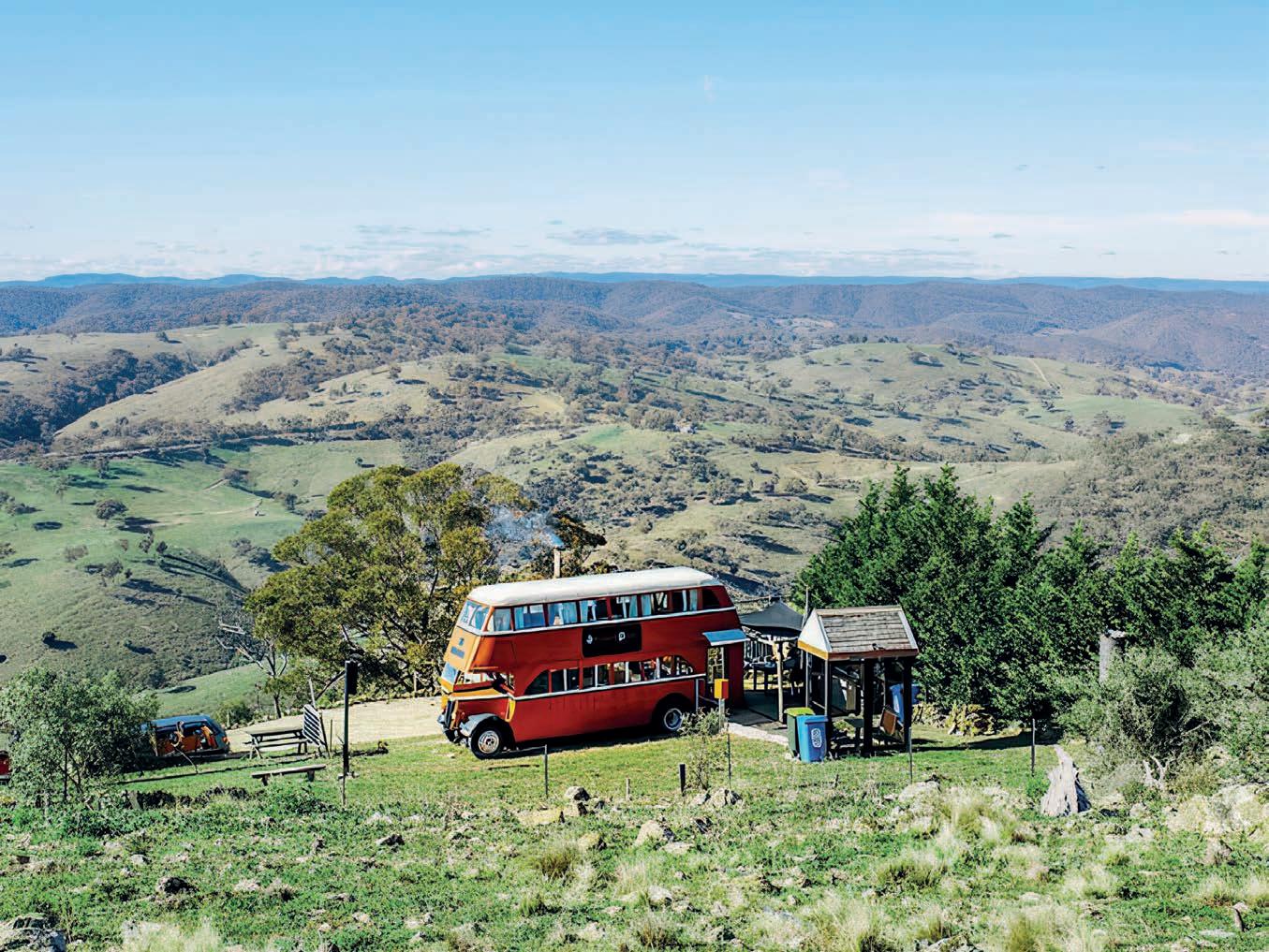
Stranded on a farm and too far gone to hit the road anymore, this 1949 Leyland doubledecker bus was restored to become one of Australia’s quirkiest accommodations
When travelling around, staying in hotels can often become mundane and repetitive. The same white sheets, flat-pack furniture and firm mattresses. So why not switch it up?
Tucked away in the hills behind the Blue Mountains, about three hours from Sydney, sits one of Australia’s most unique and quirky farm stays: a bright red 1949 Leyland double-decker bus.
“Originally, it was a Sydney route number 2330 bus,” owner Glenn McMaster told ABC
“It’s an English chassis, but it’s an Australian-built body on top. When they sold them off, people were planning to travel around Australia in them, but they were so slow, they didn’t make it very far out of Sydney!”
This particular bus didn’t get far at all, McMaster finding it parked on a nearby farm exposed to the elements.
“I ended up getting to it the day
before it was going to be cut up,” he says.
“Someone said to me, ‘They’re scrapping a big double-decker bus down the road.’ I flew down there and they said, ‘If you can move it, you can have it.’ So I grabbed the bulldozer, ran down the road, and picked it up.”
The old bus had no windows, no floors, and the engine and transmission were already gone.
“That’s why it was a good candidate. It was no good for restoration to be back on the road, but it still had enough to fix it up and use it for this purpose,” he says.
The bus was given a second life at Artisans Park, a working farm that doubles as a wedding venue and offers a selection of unique stays.
“We already had interesting accommodation, so putting the bus there was a natural fit. It was something different,” he says.
“The public reception has been great. We launched it around 2012 and there have been thousands of
